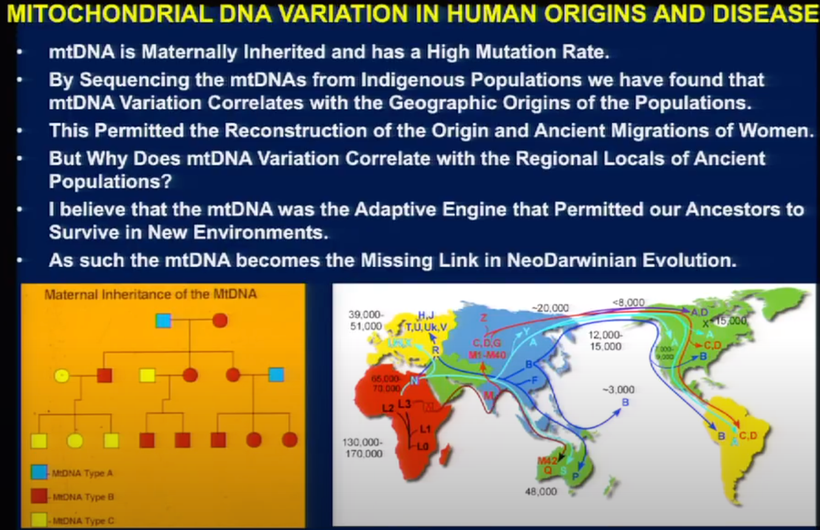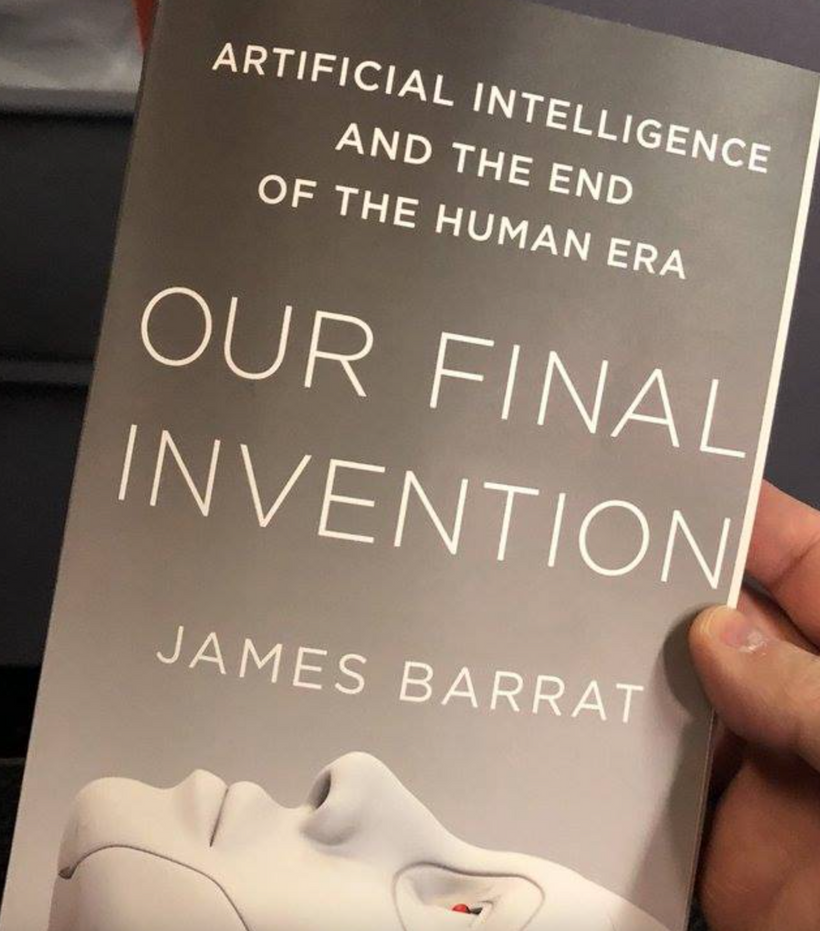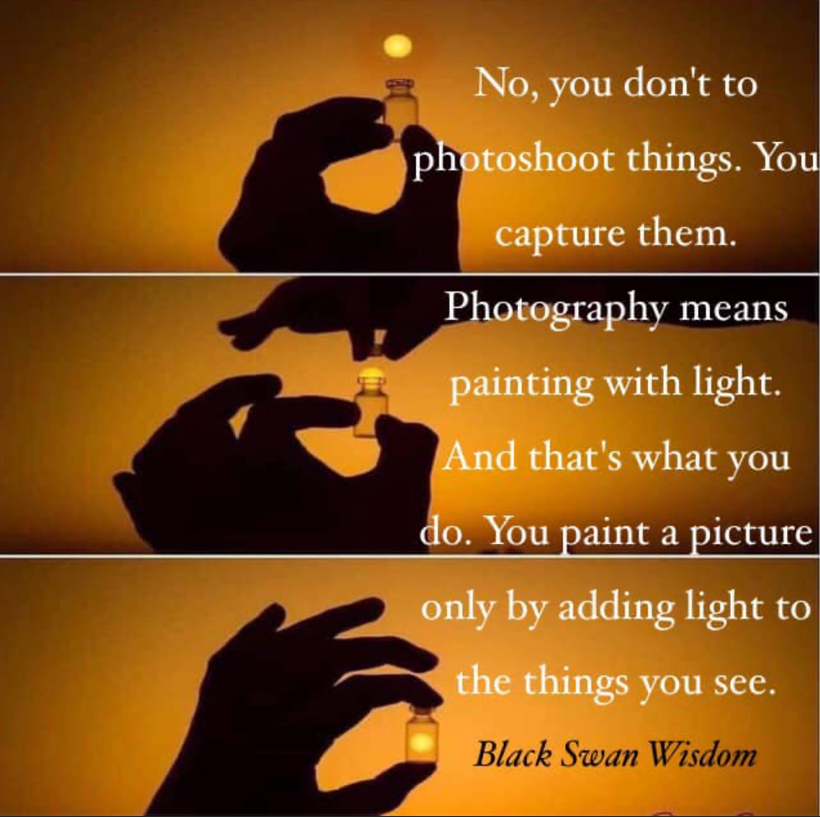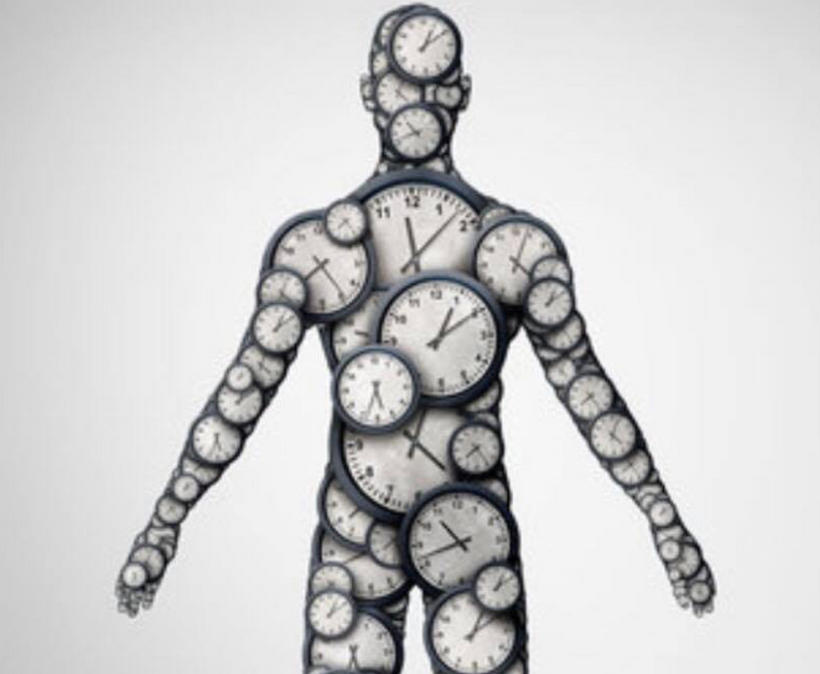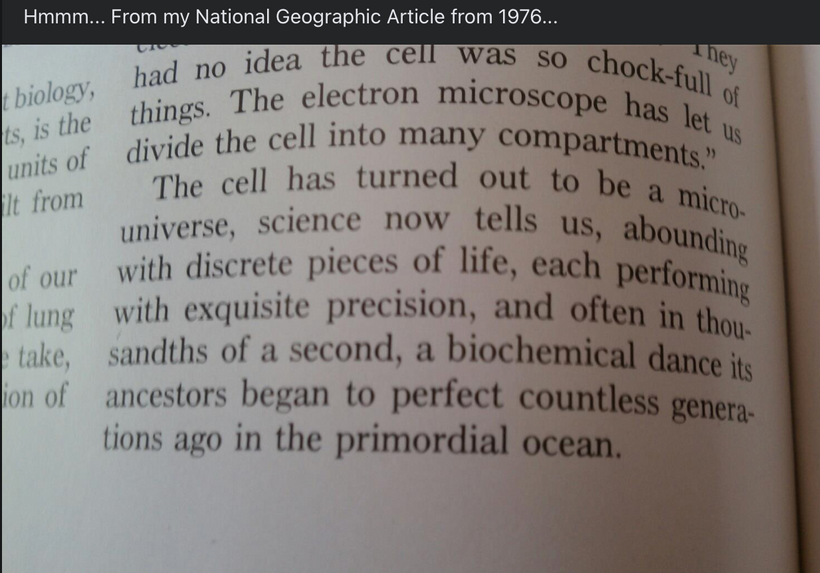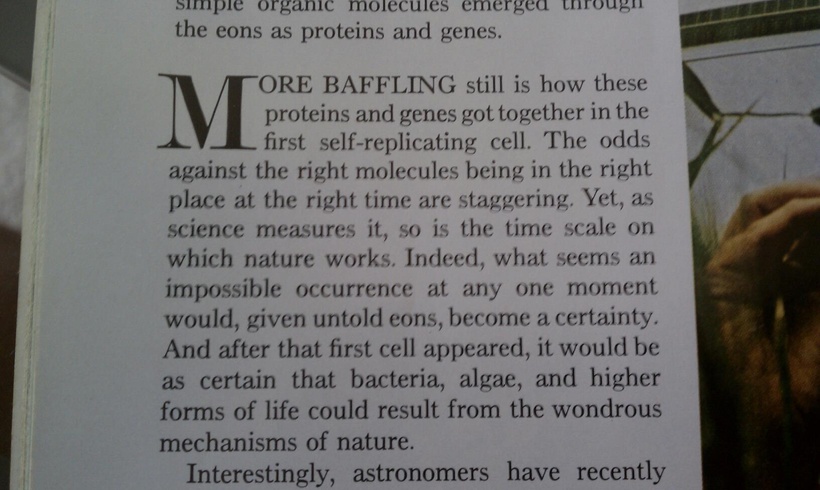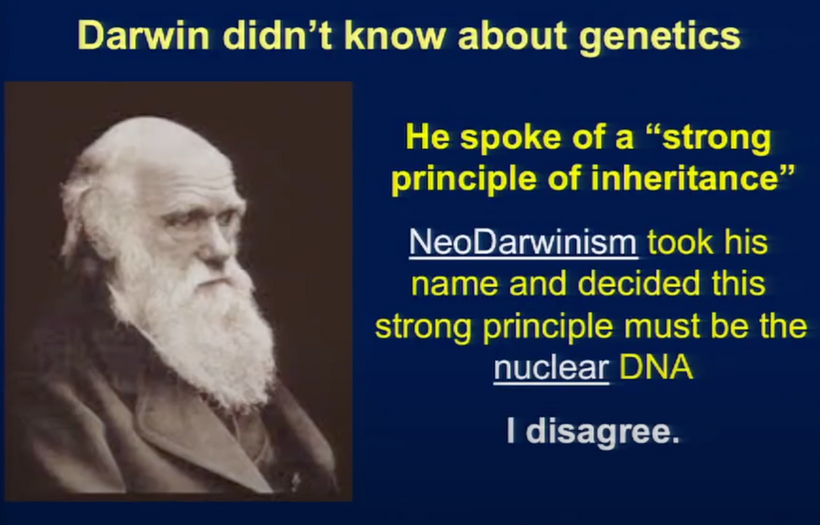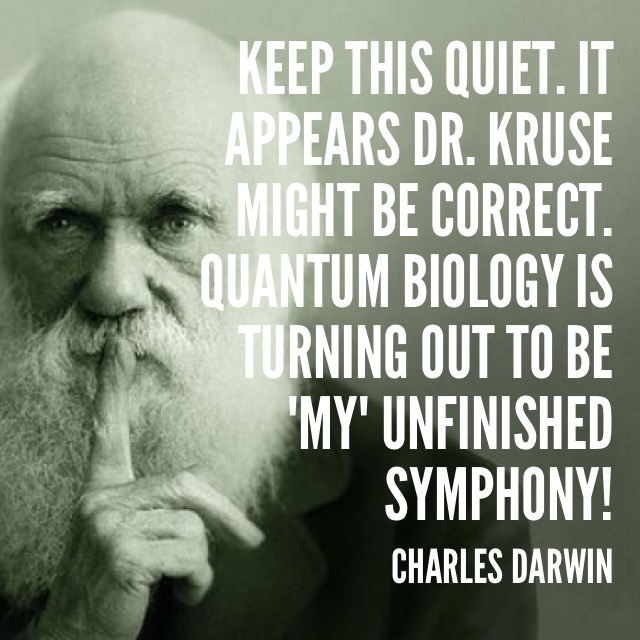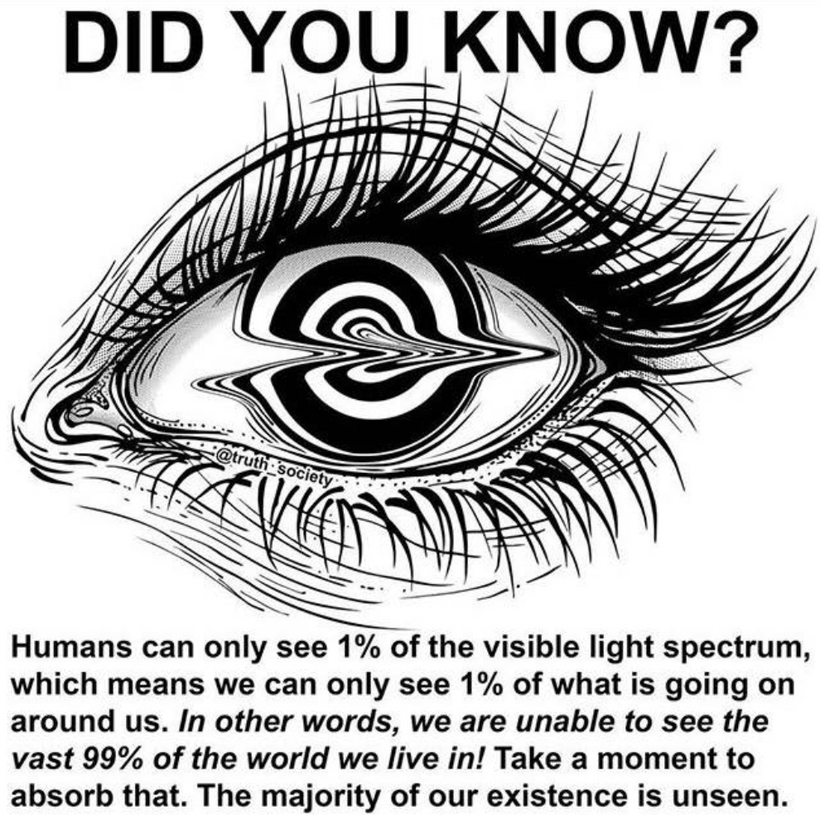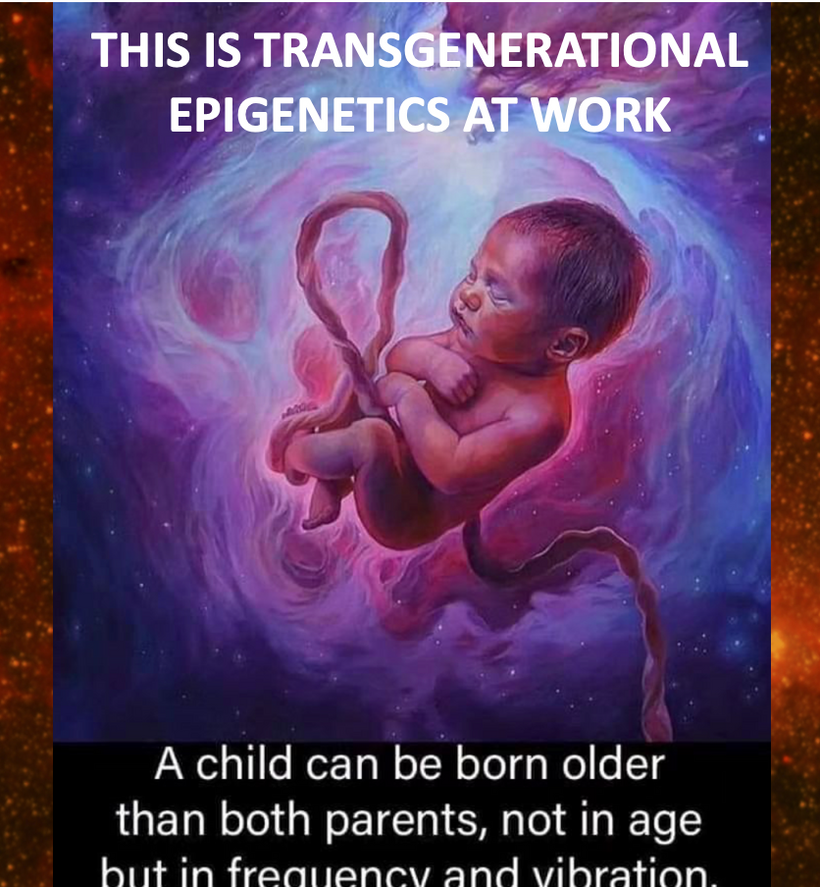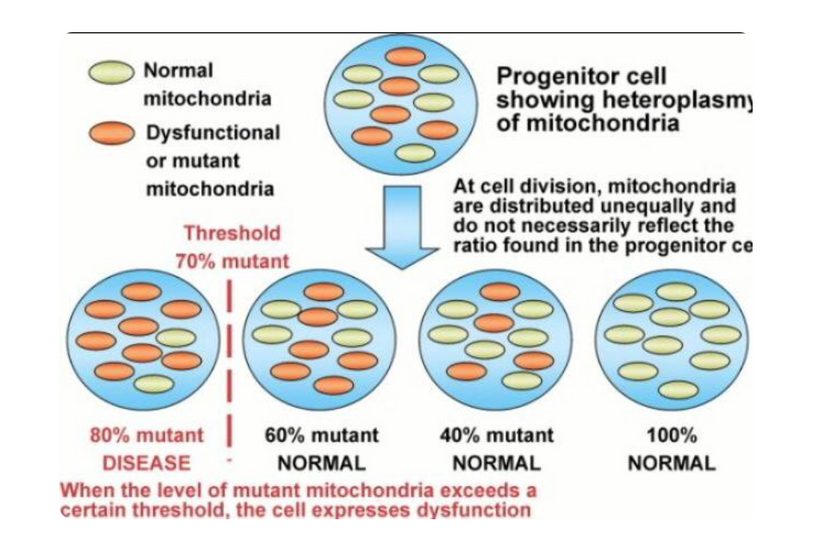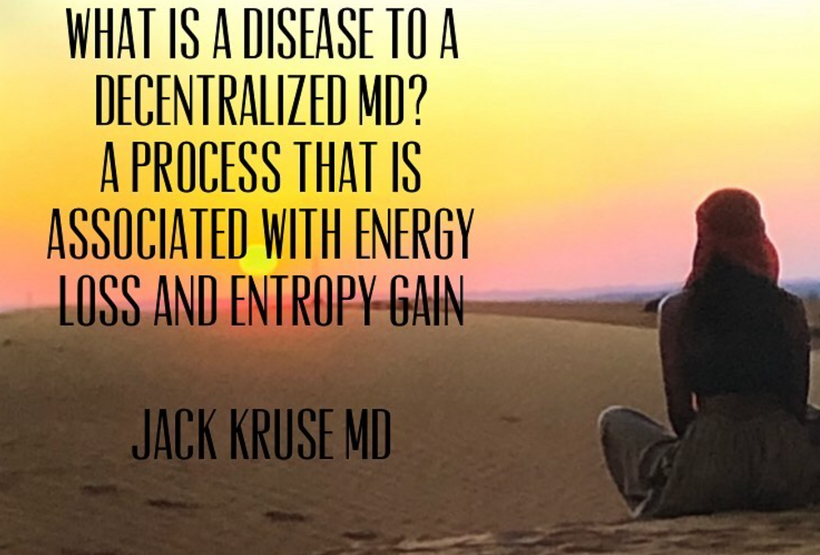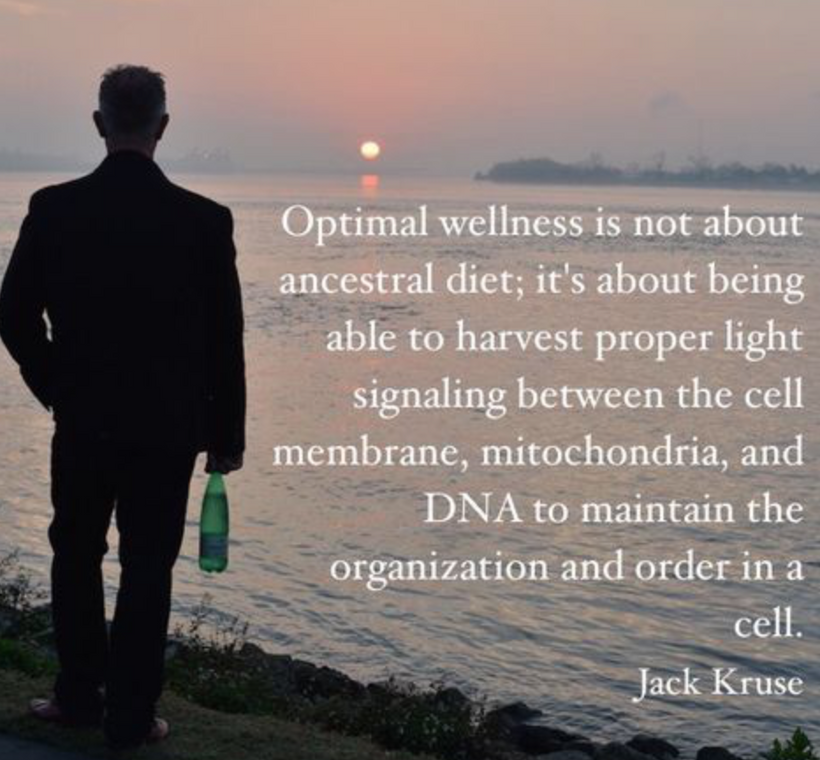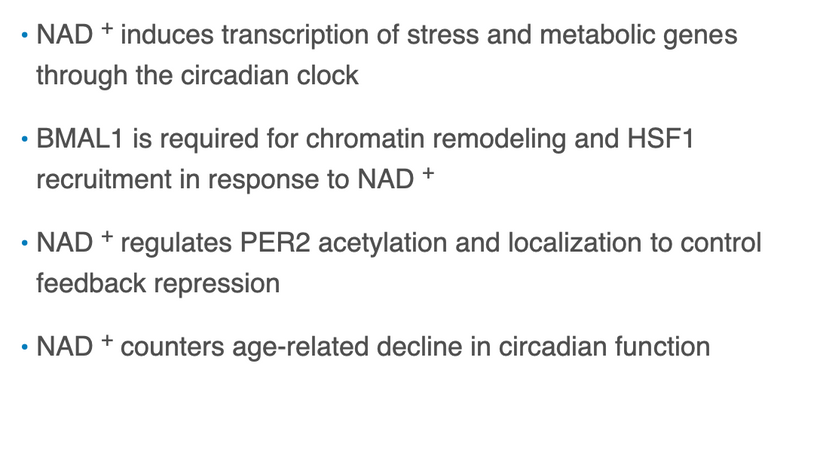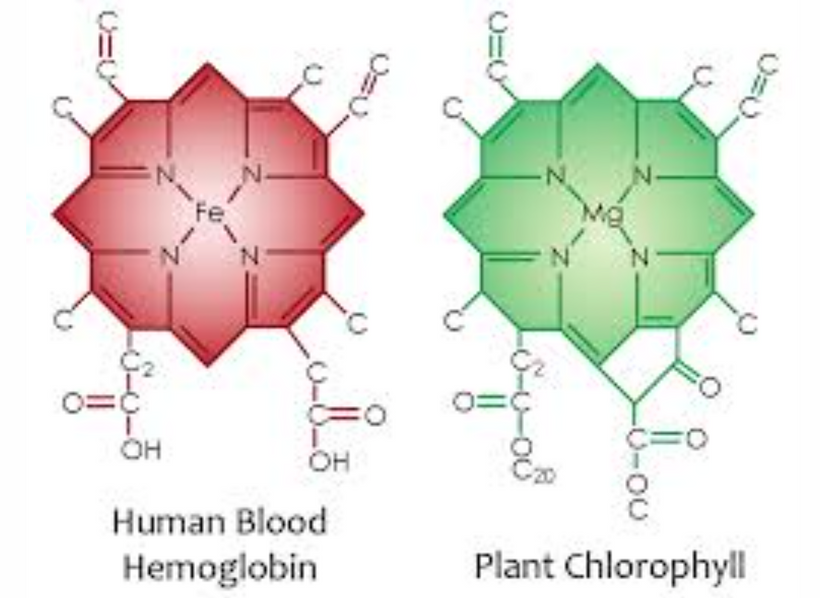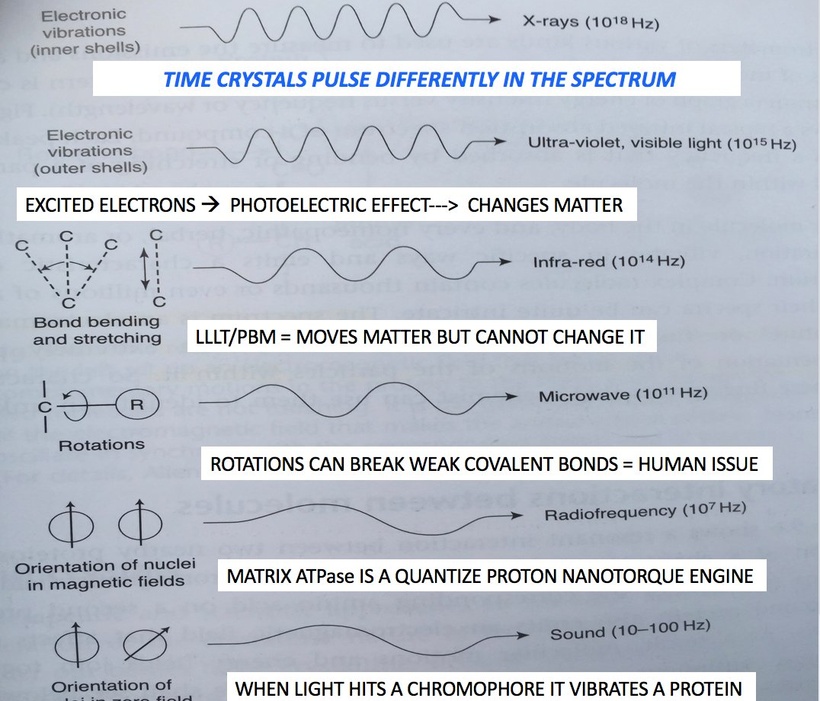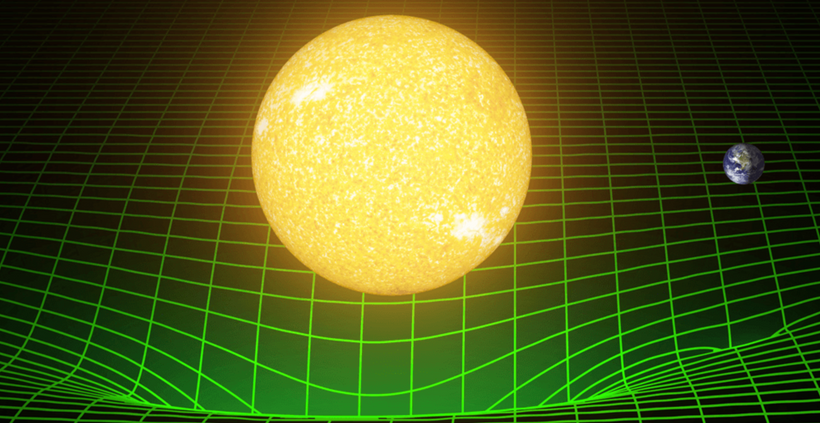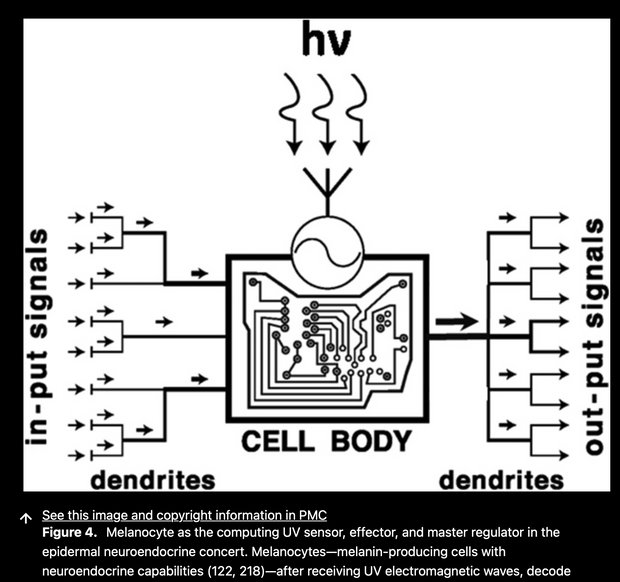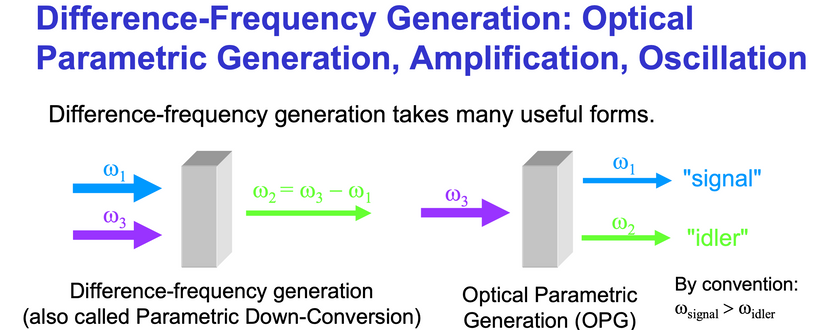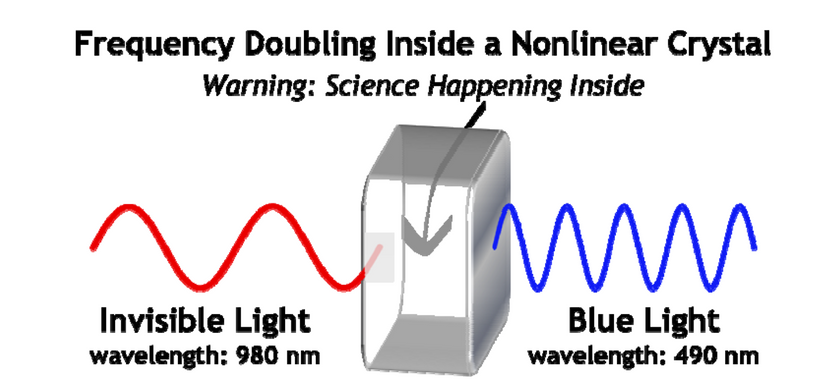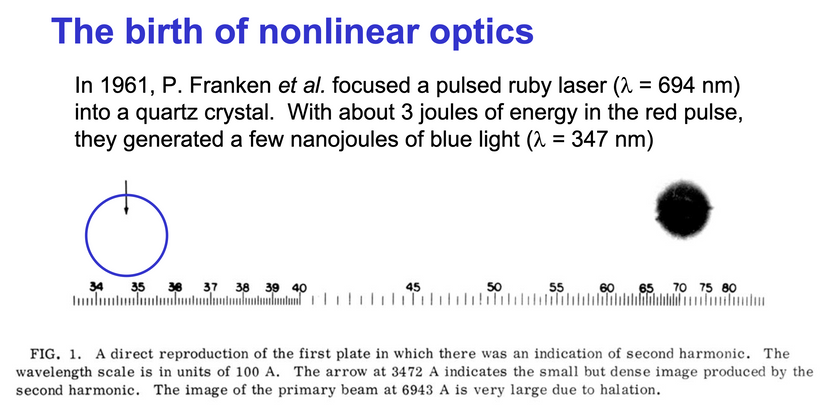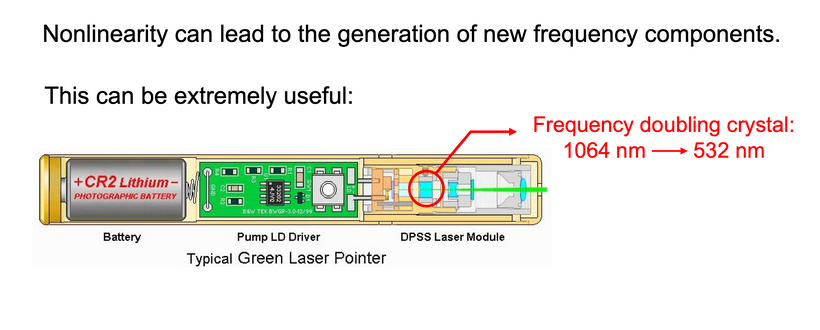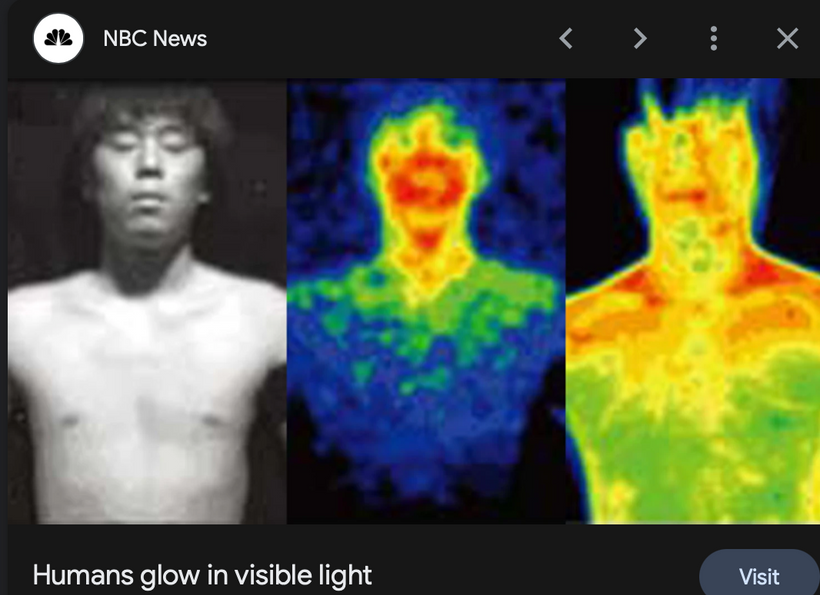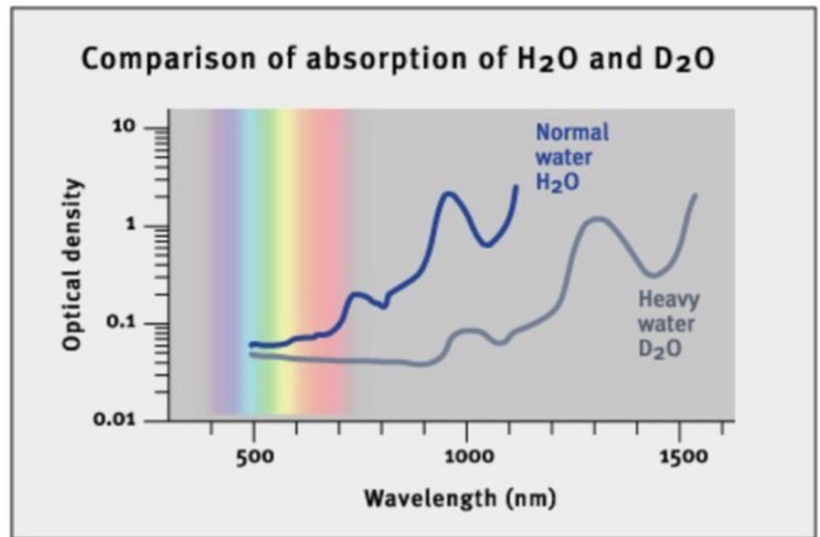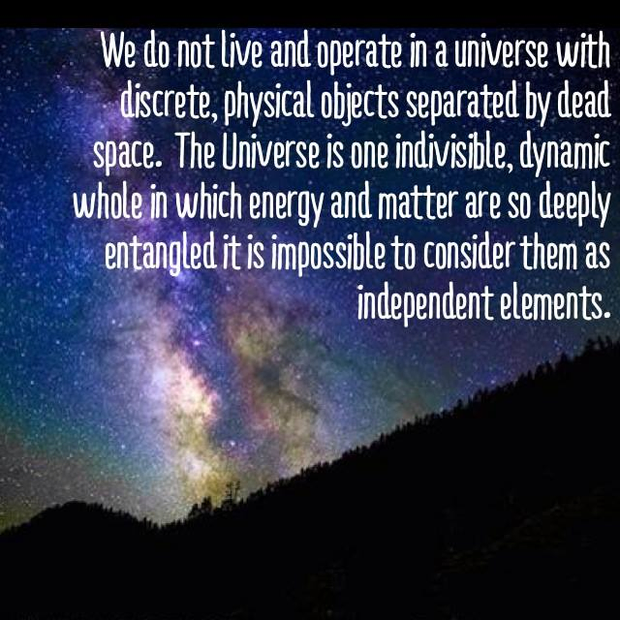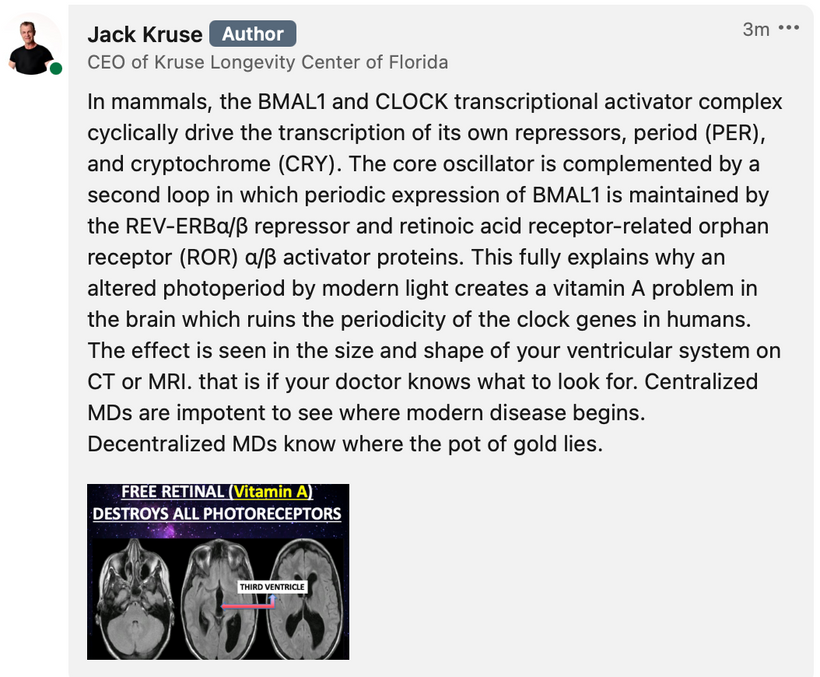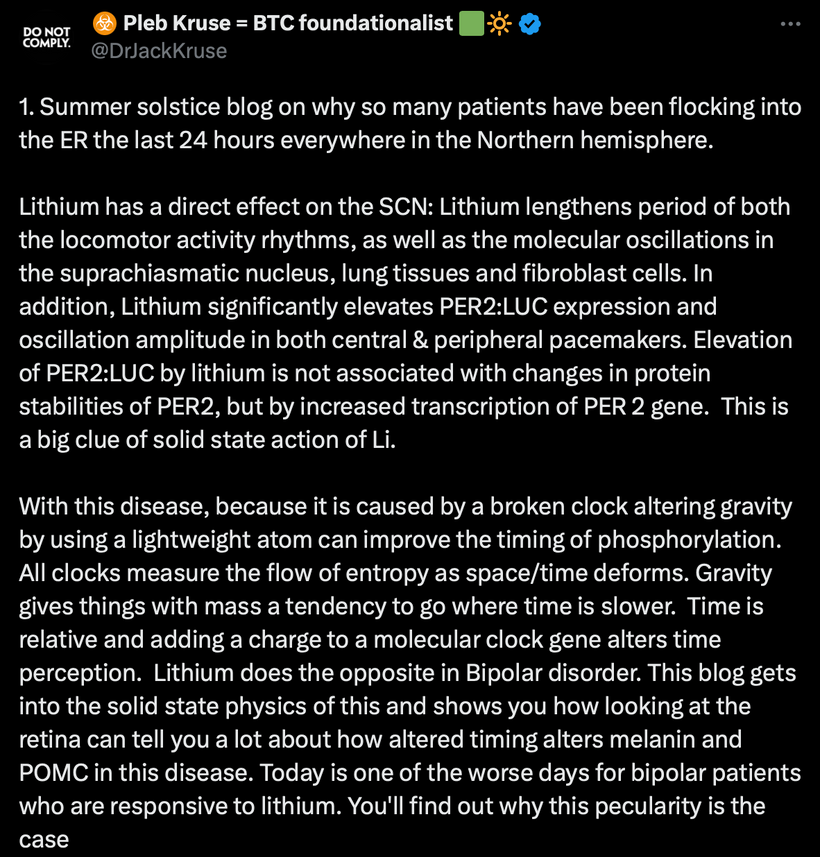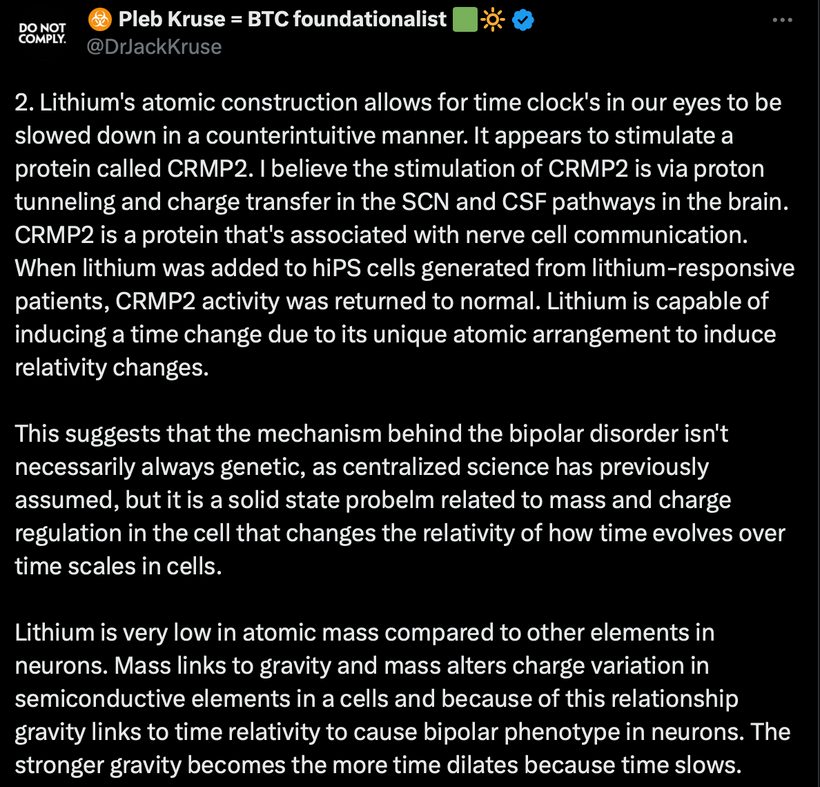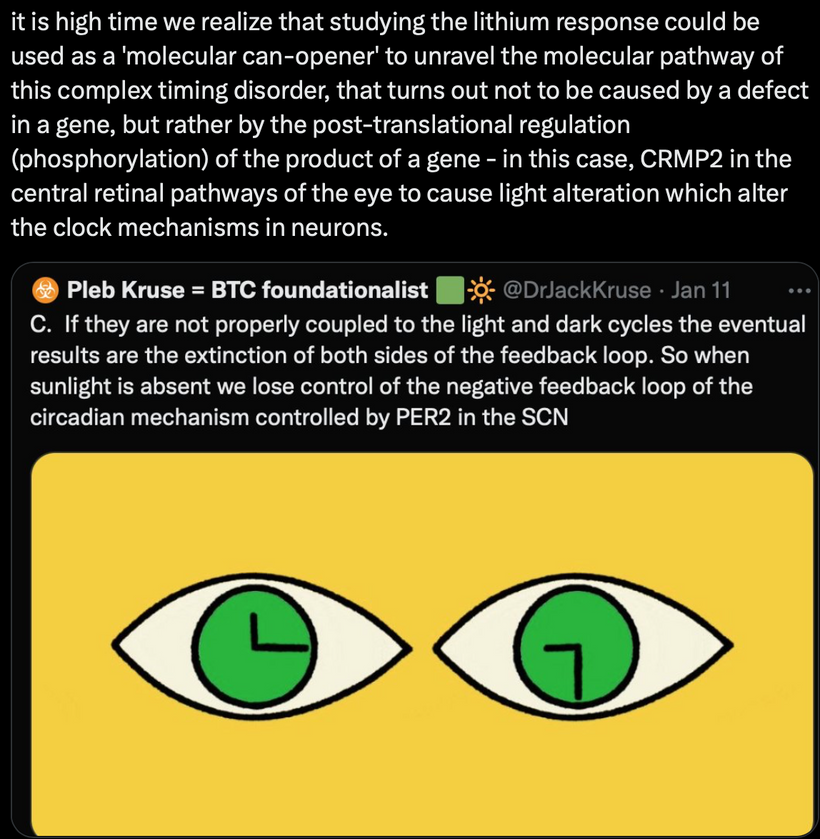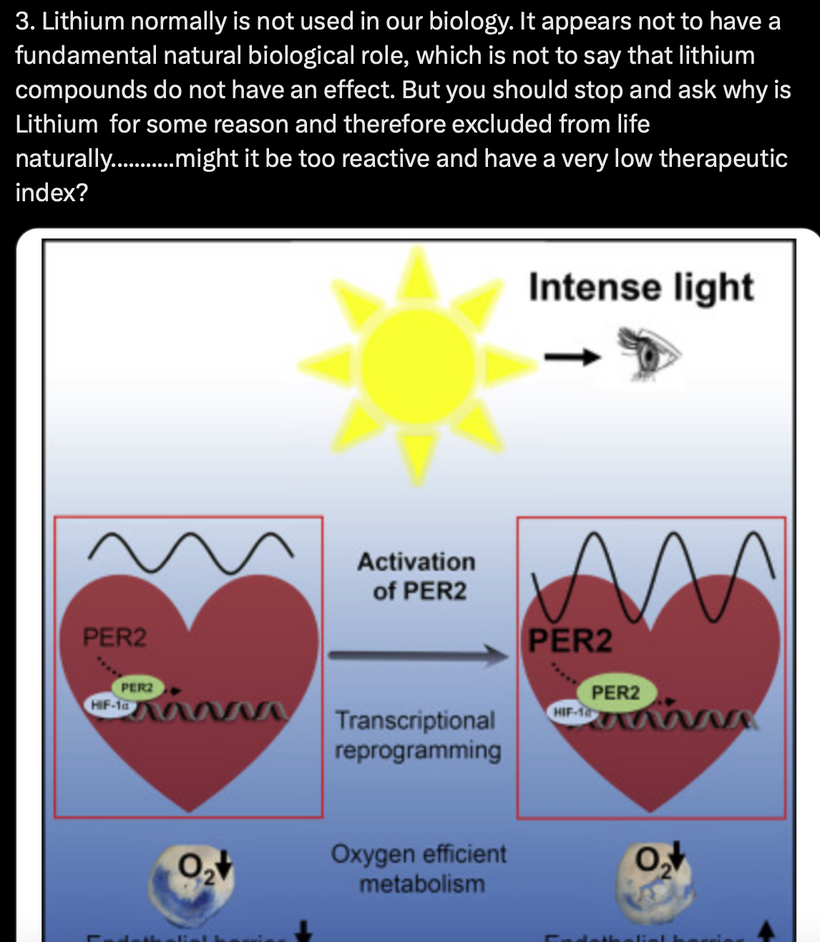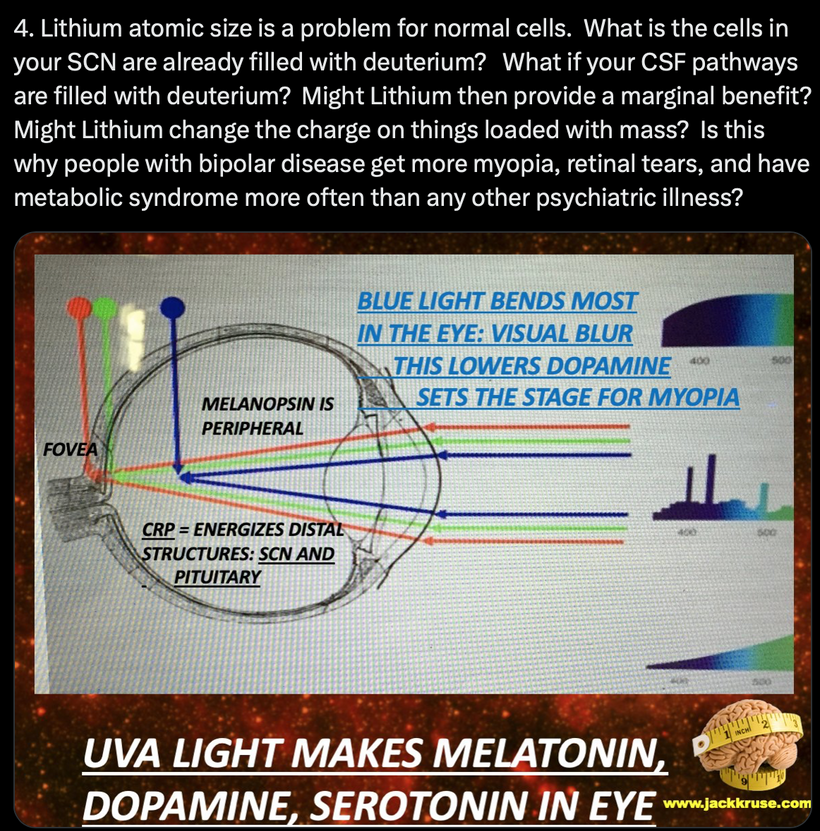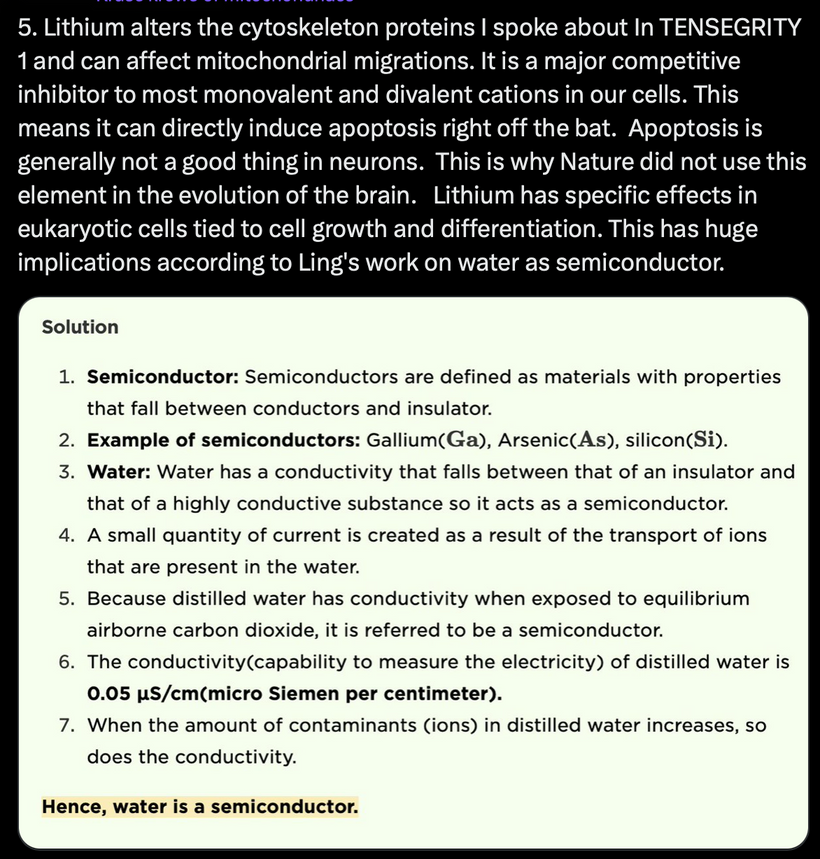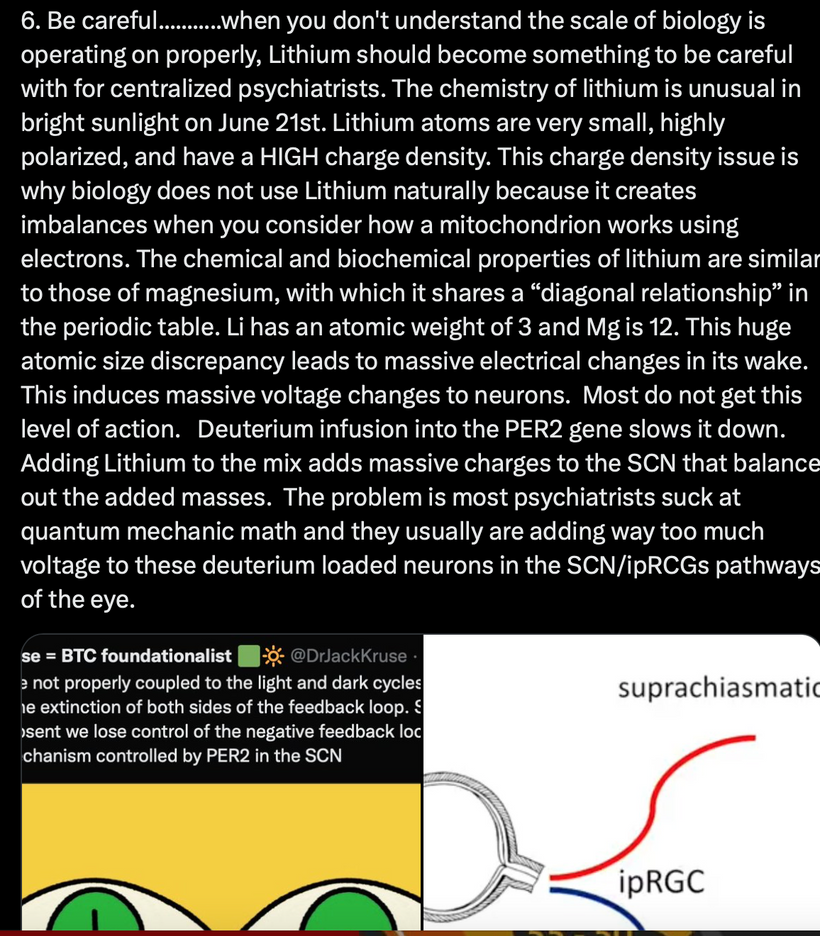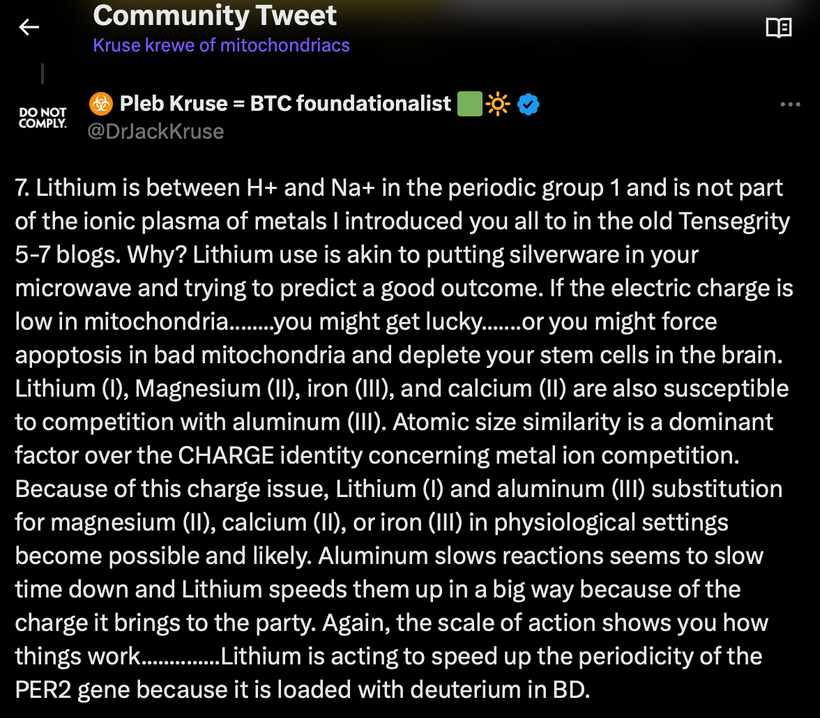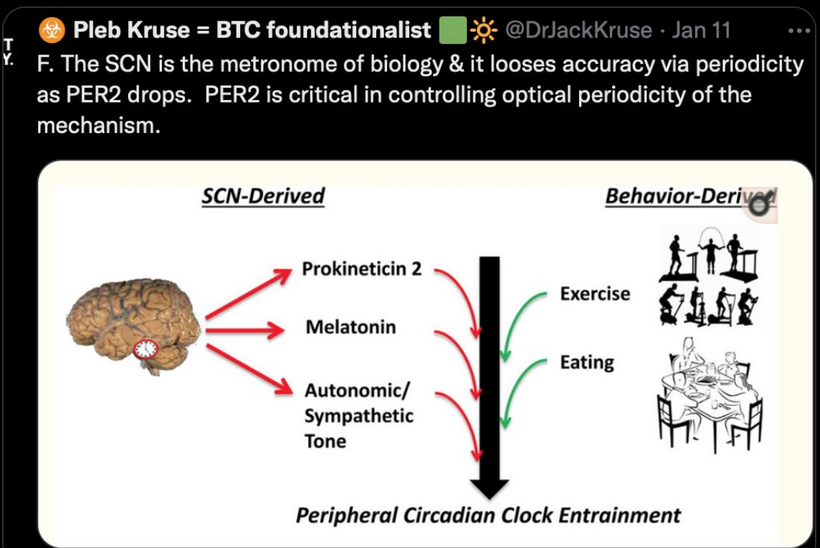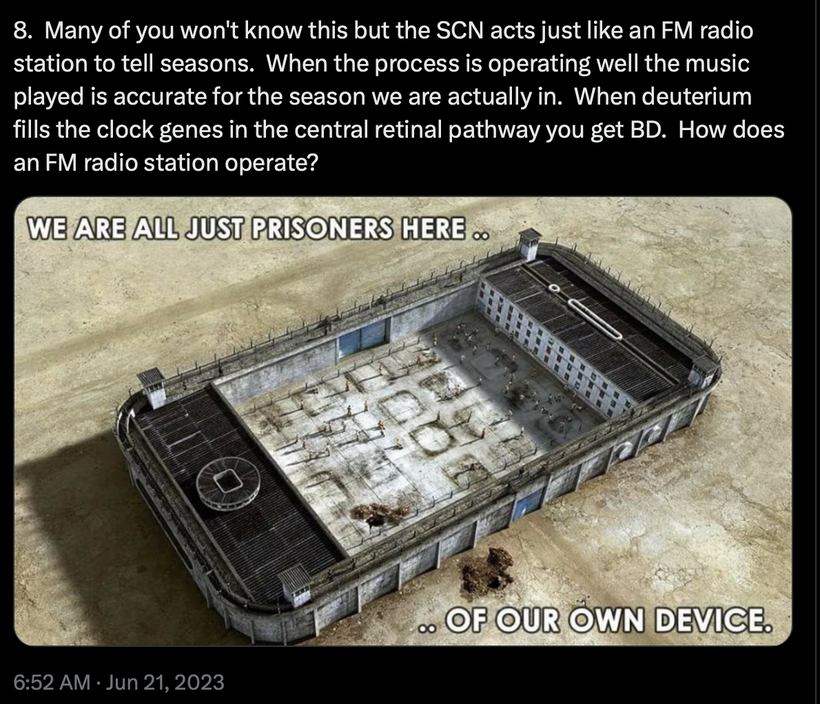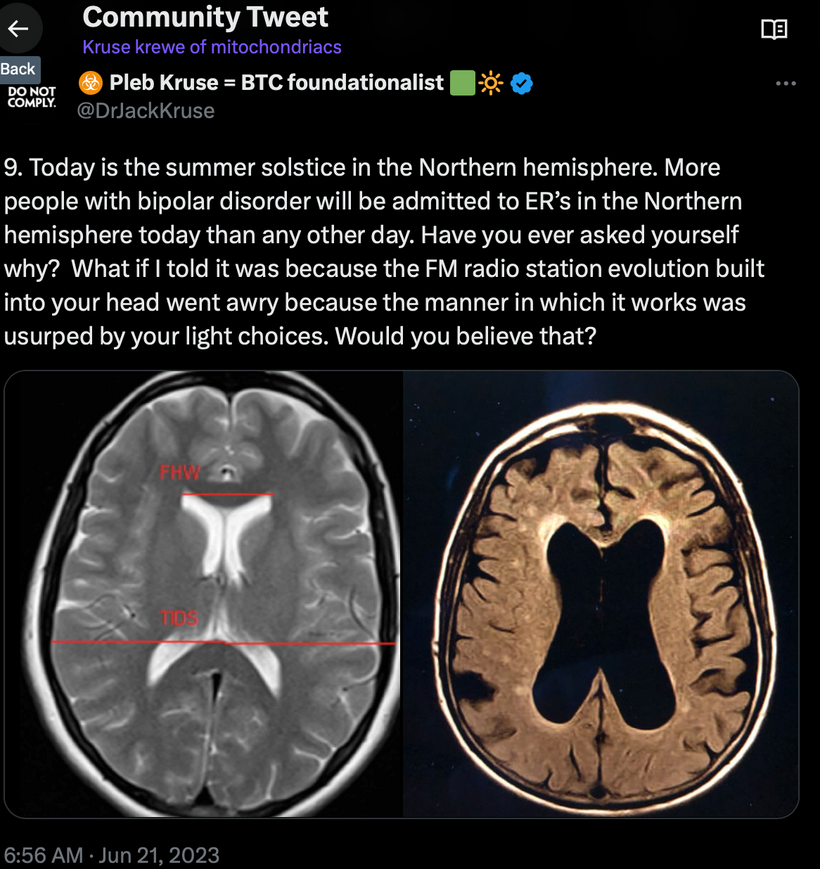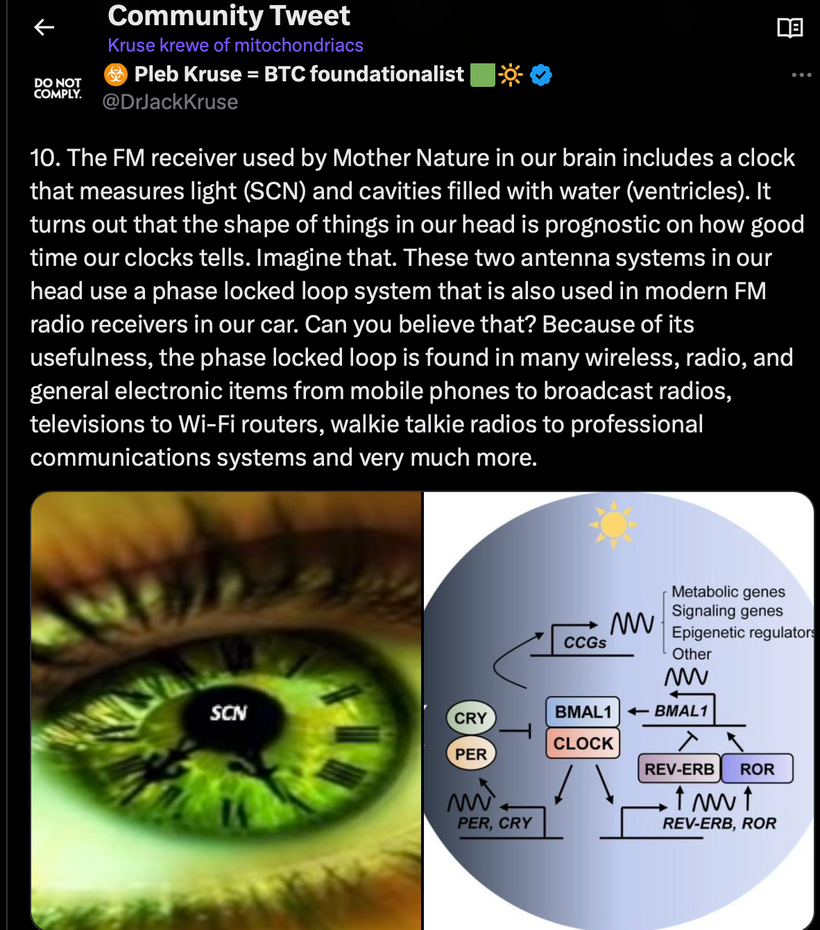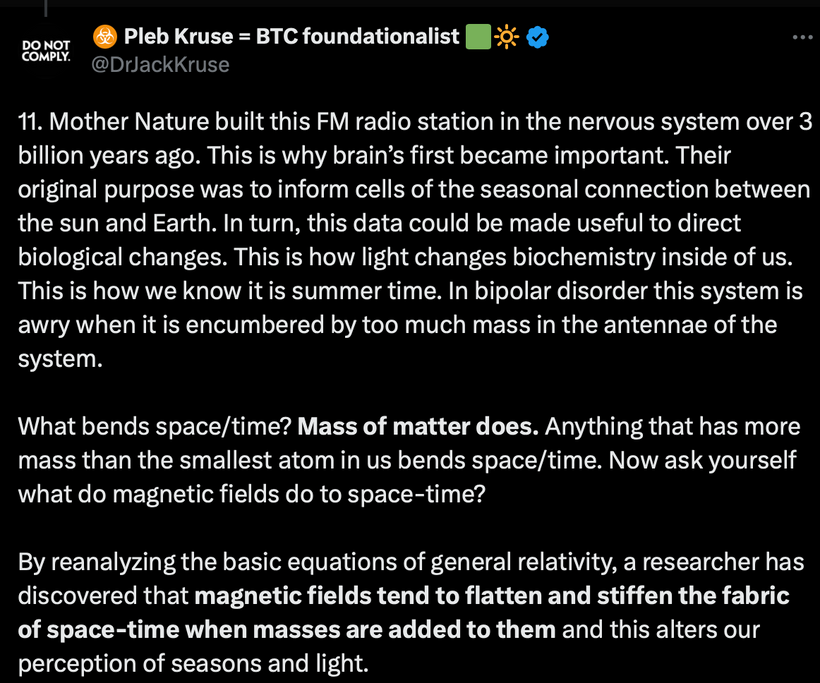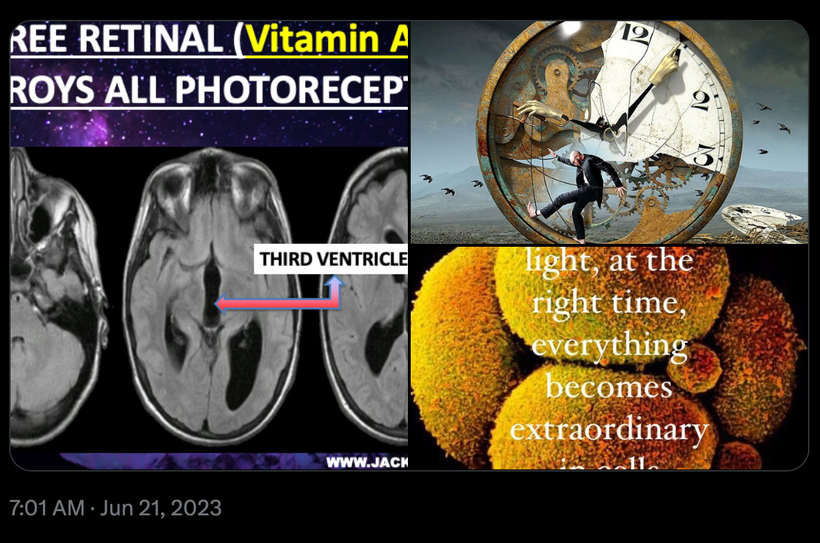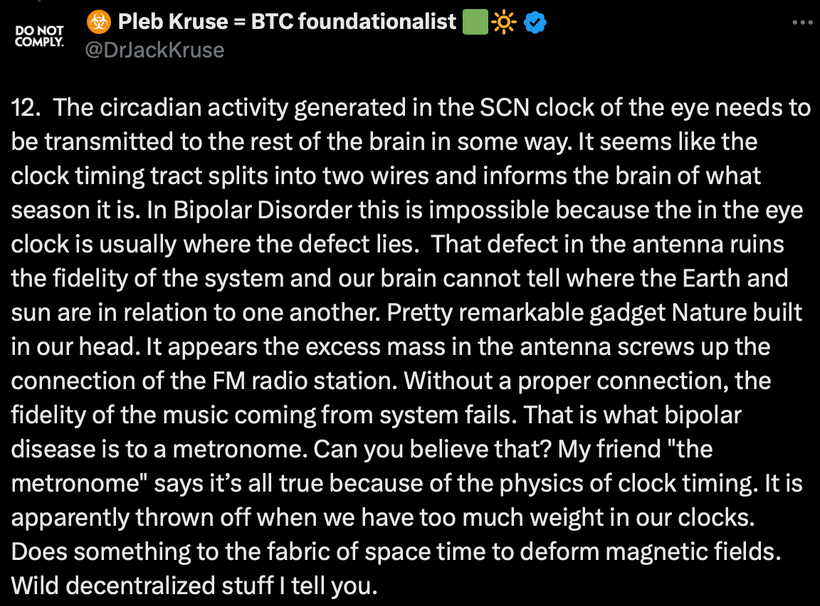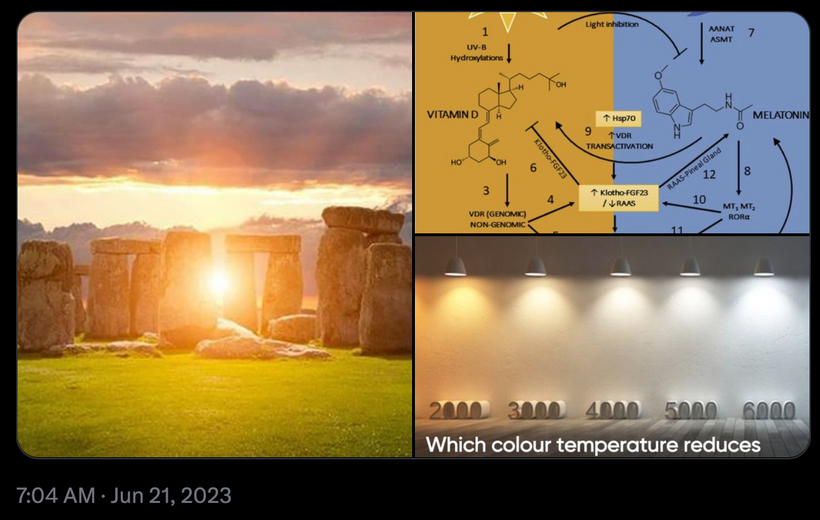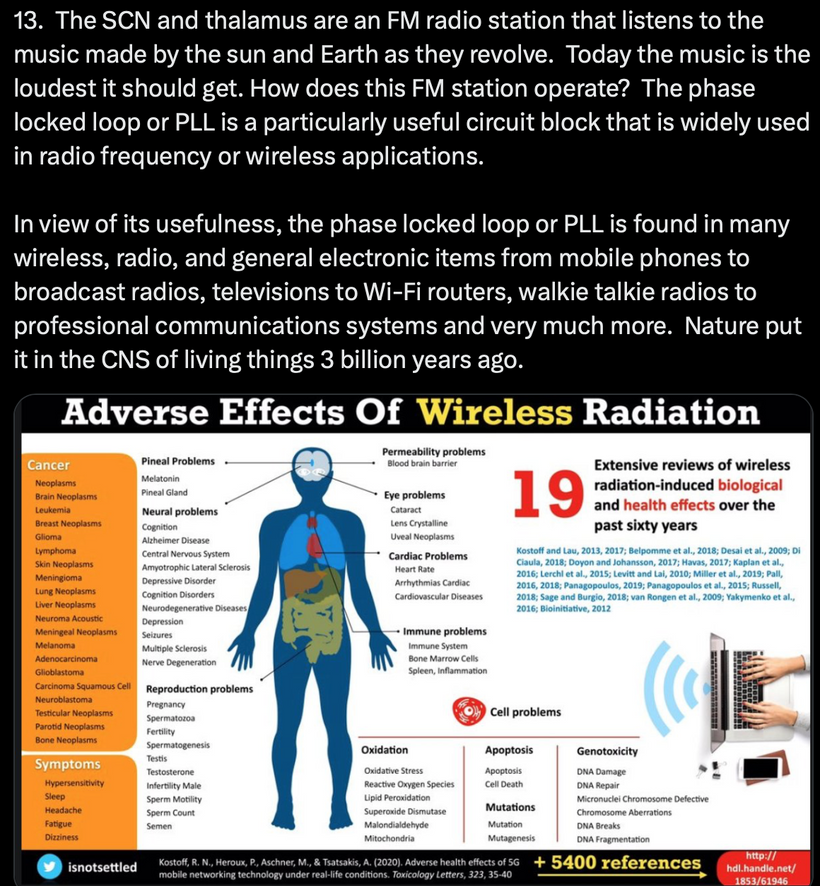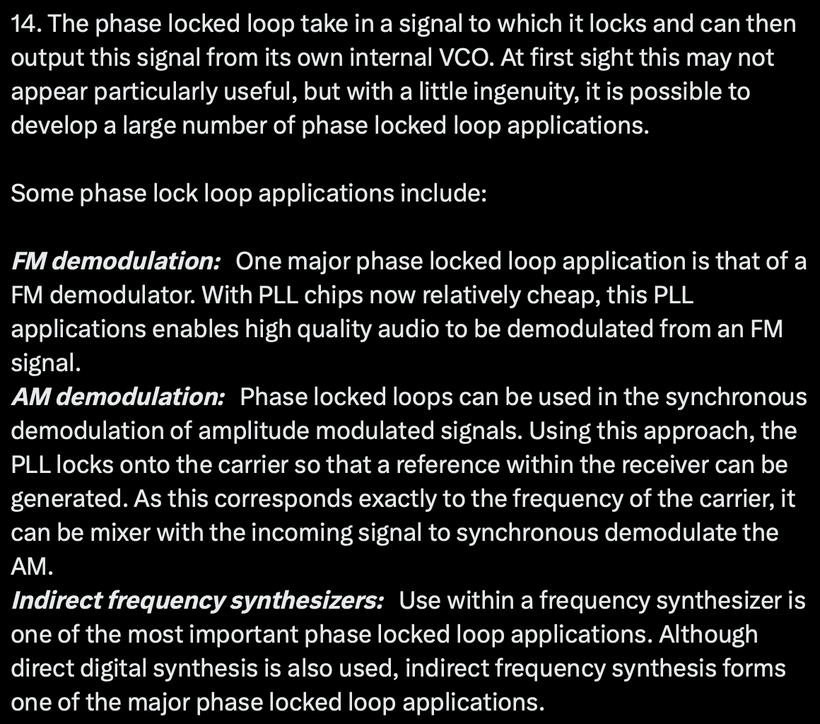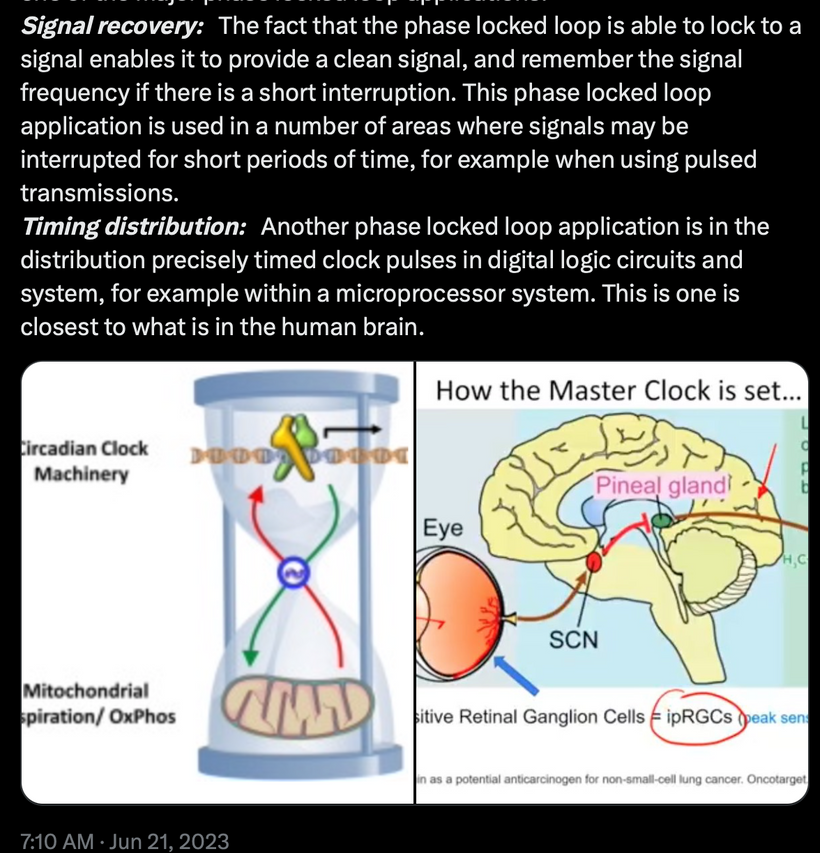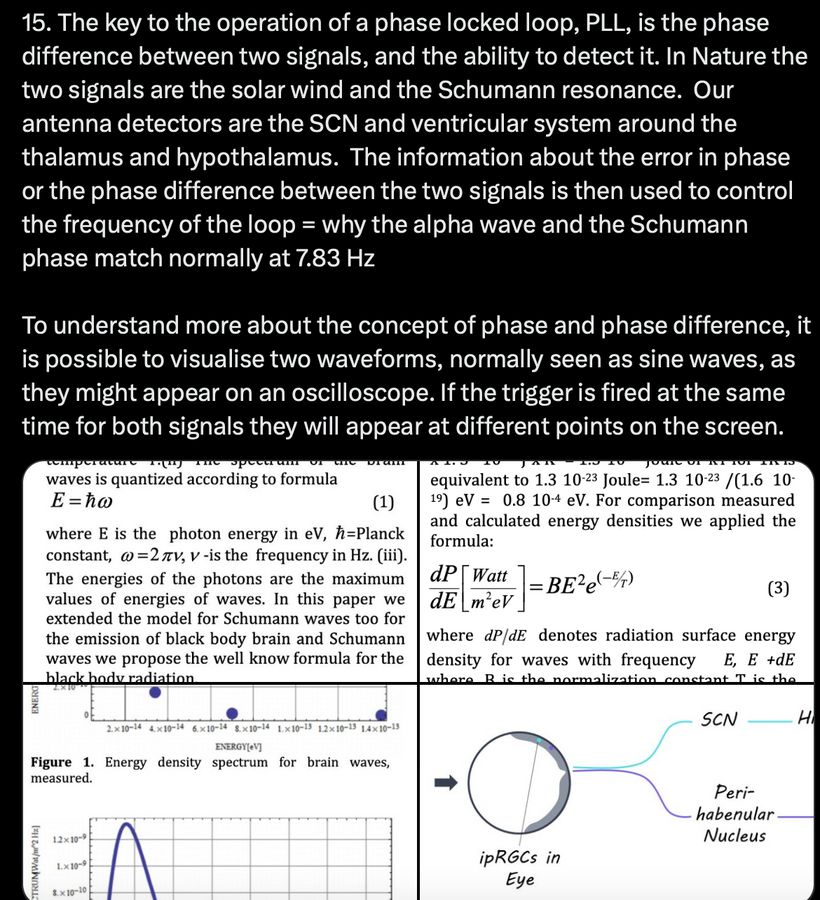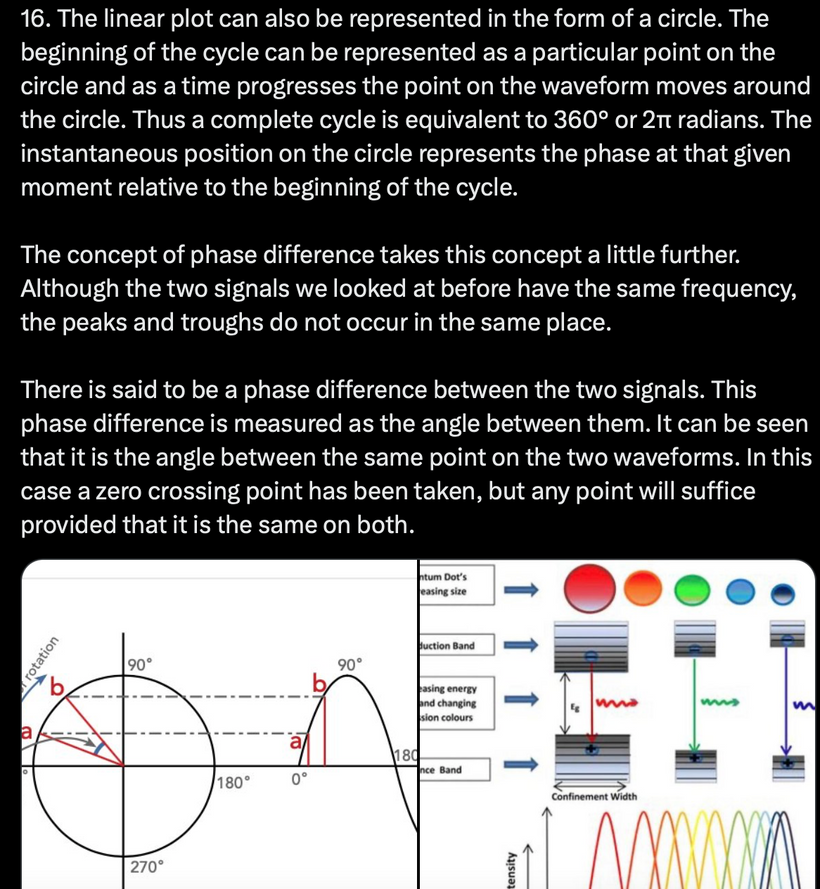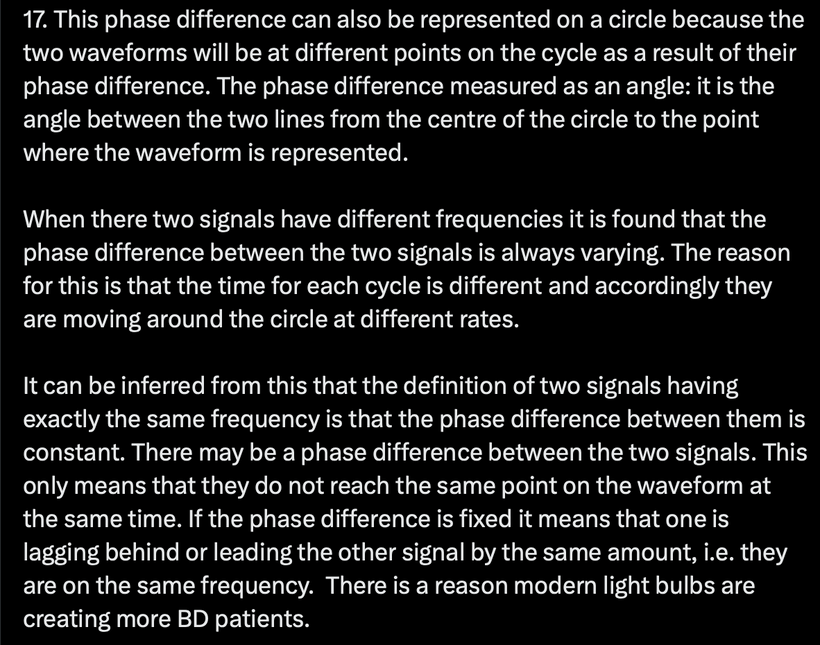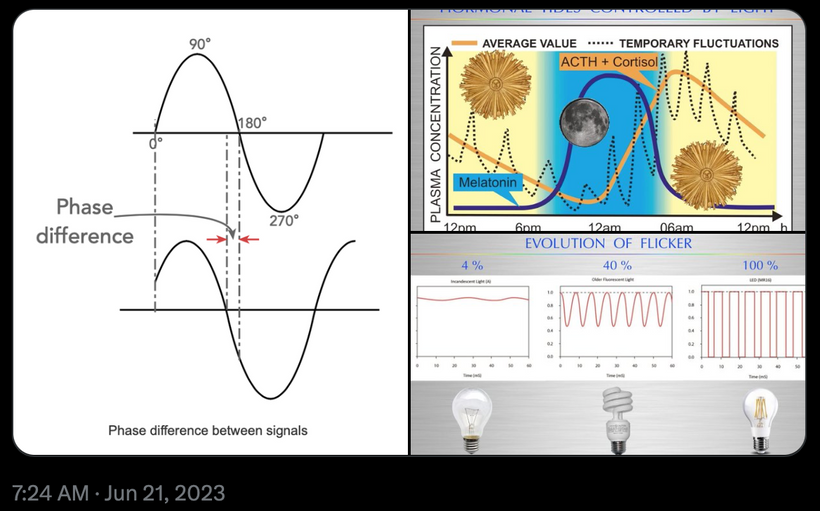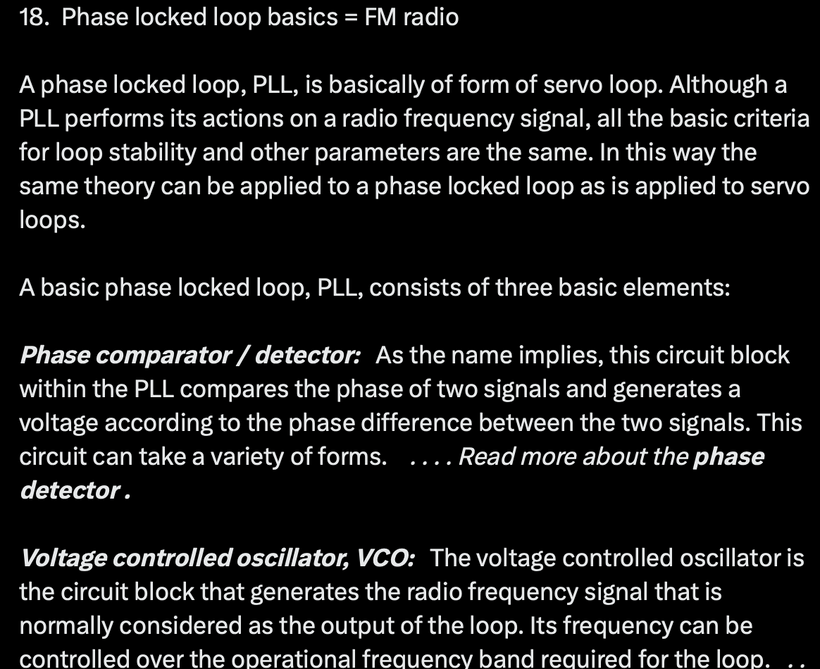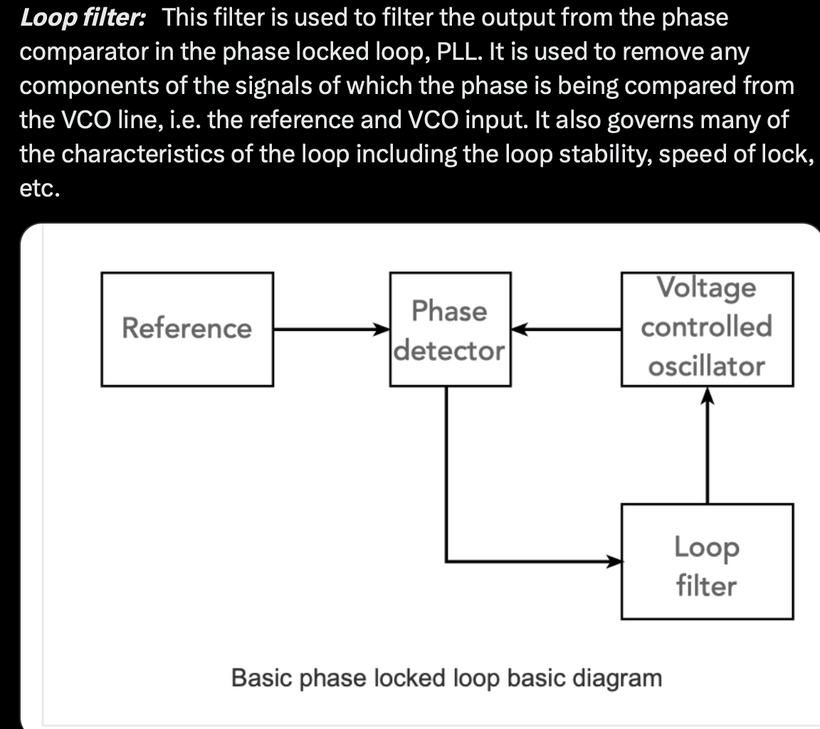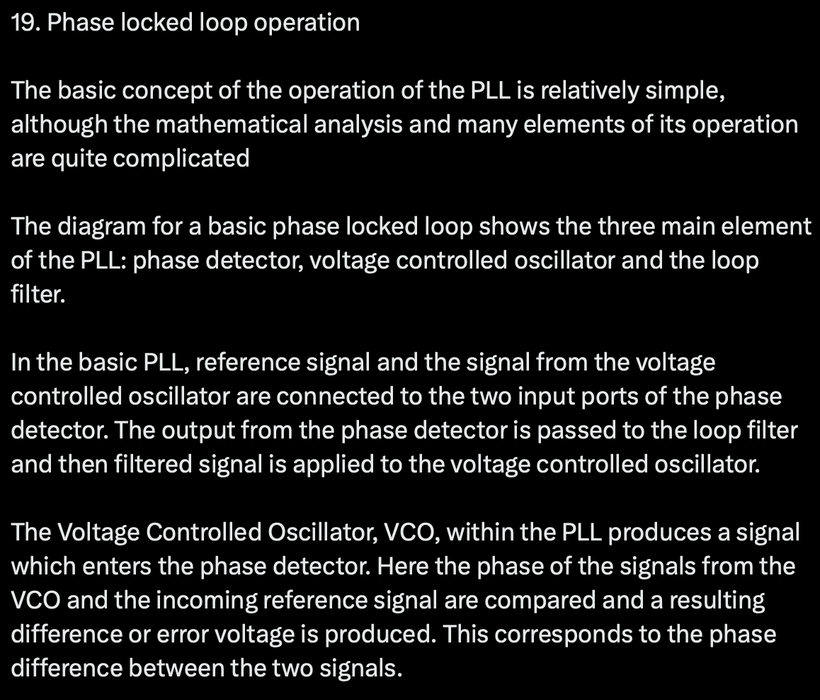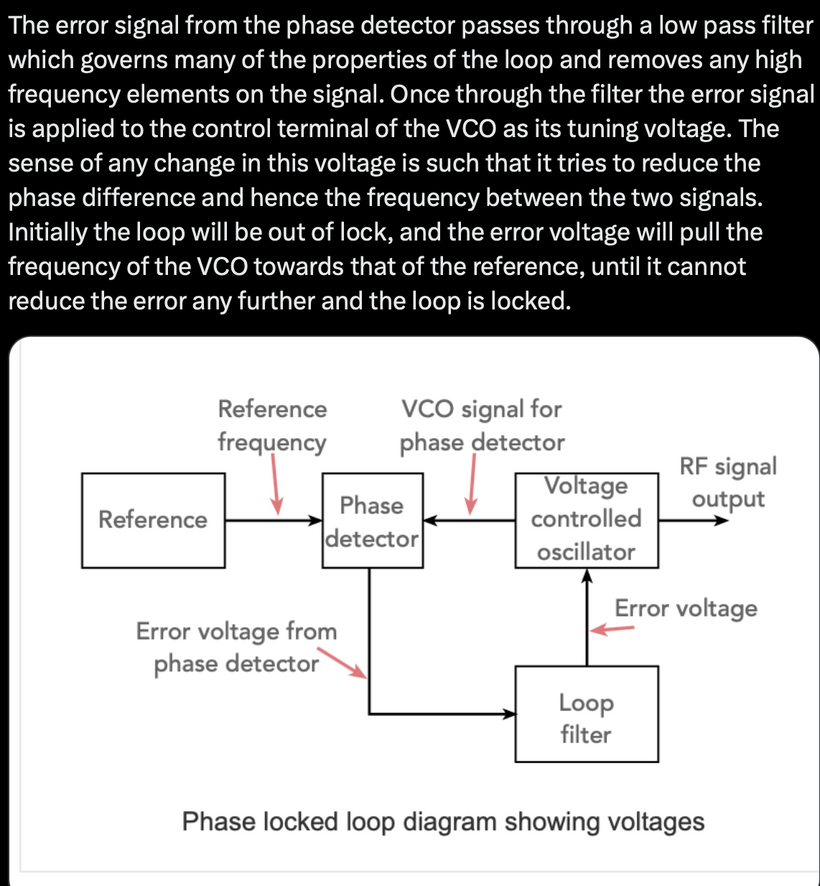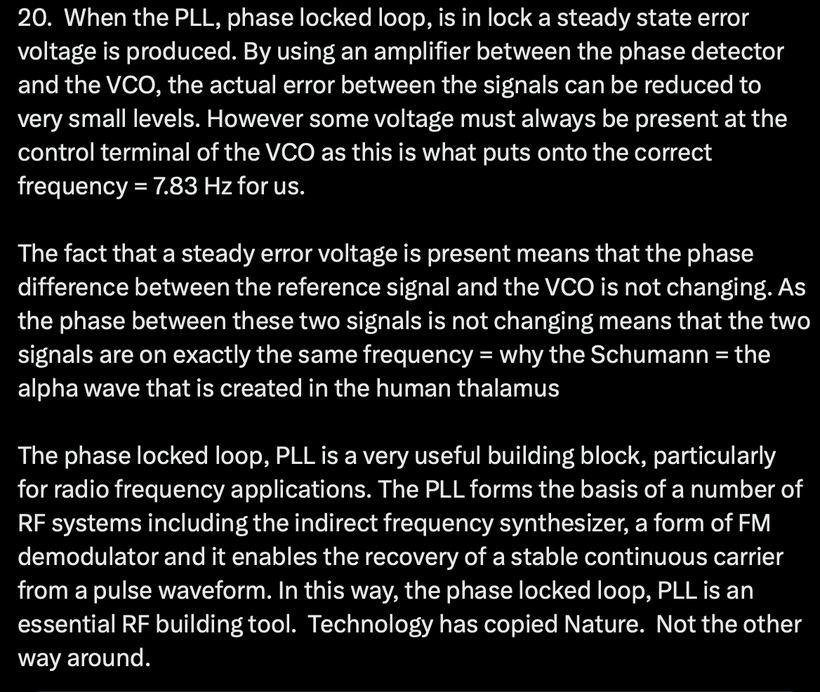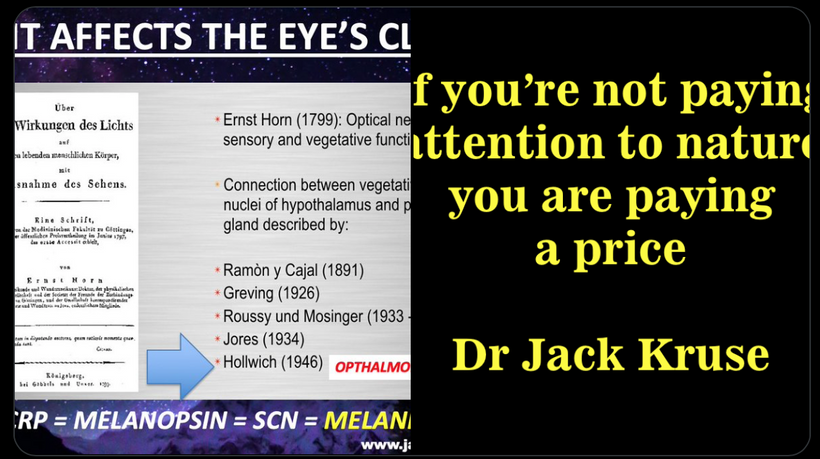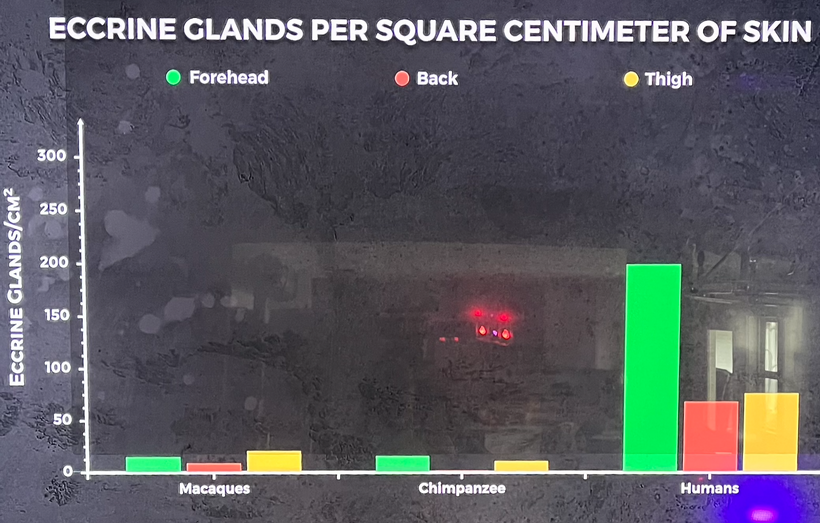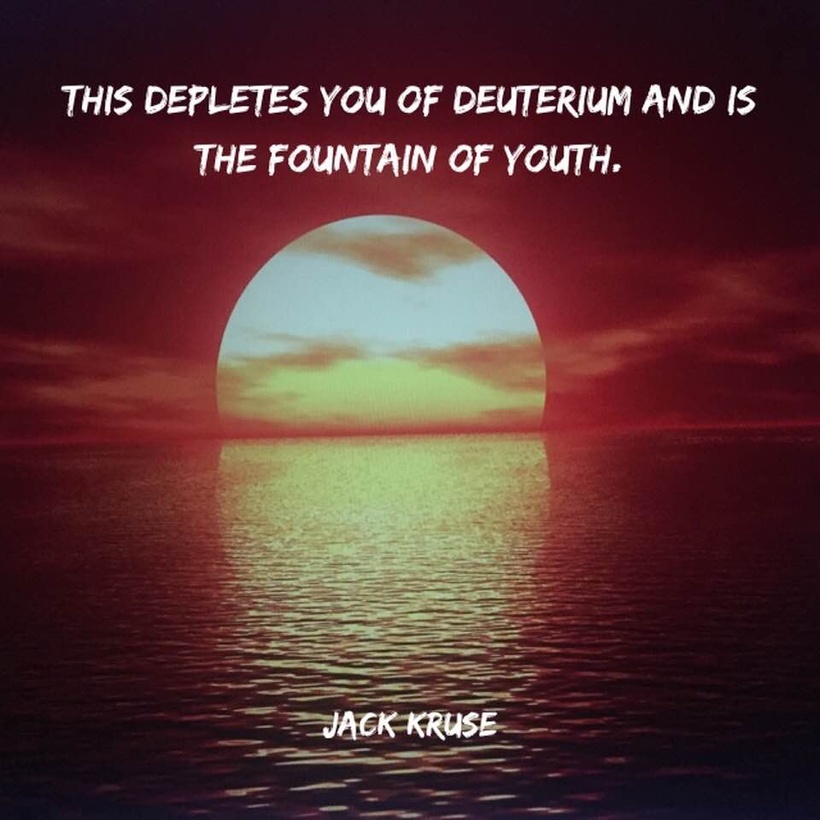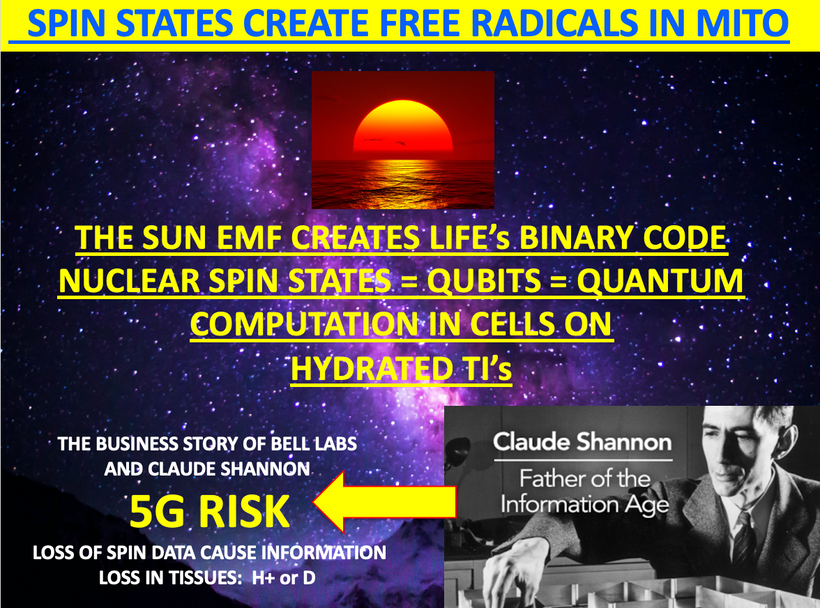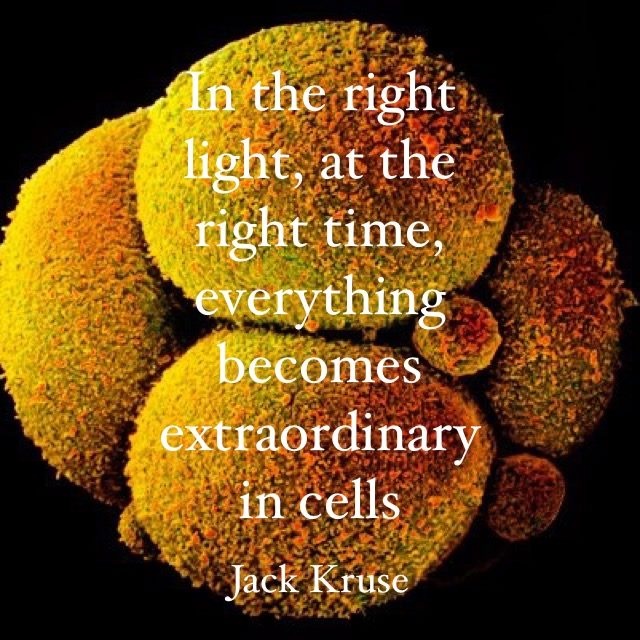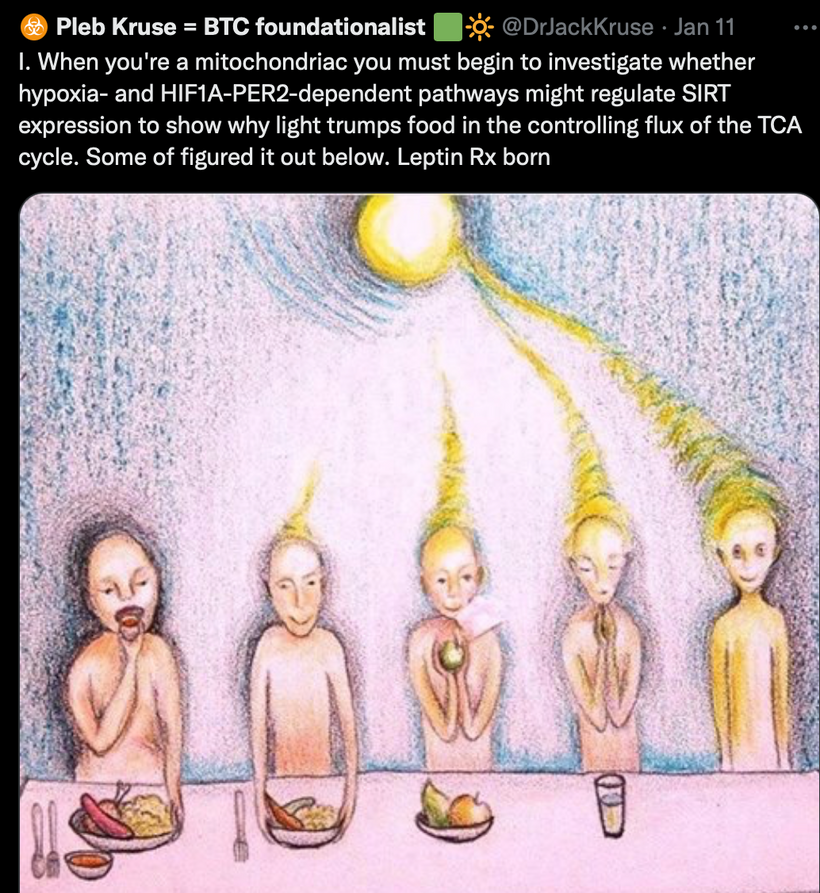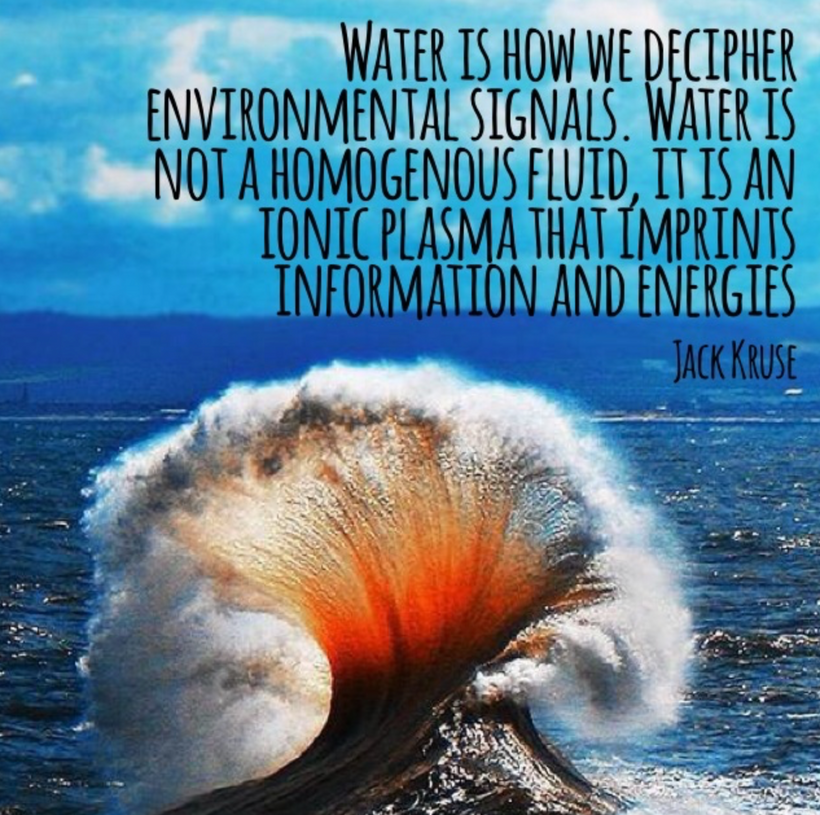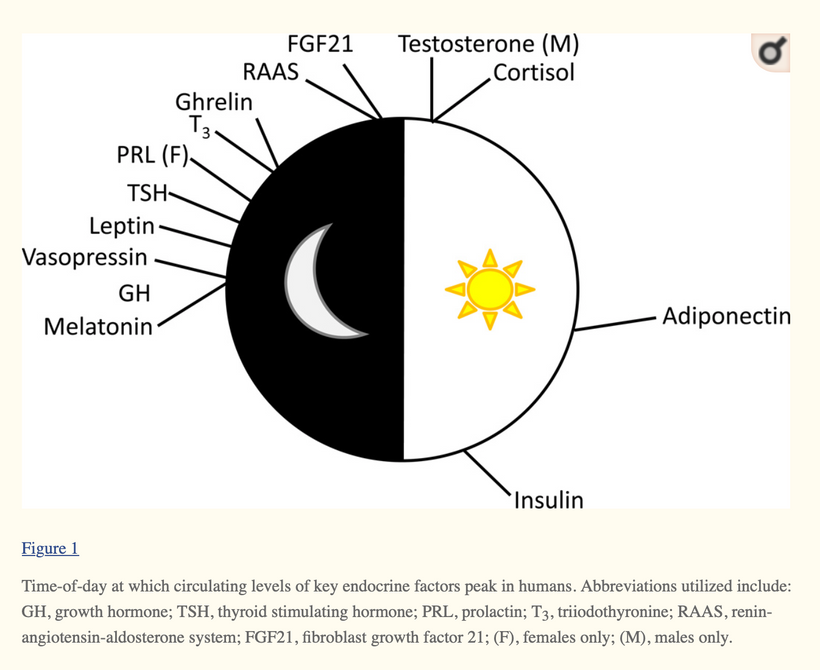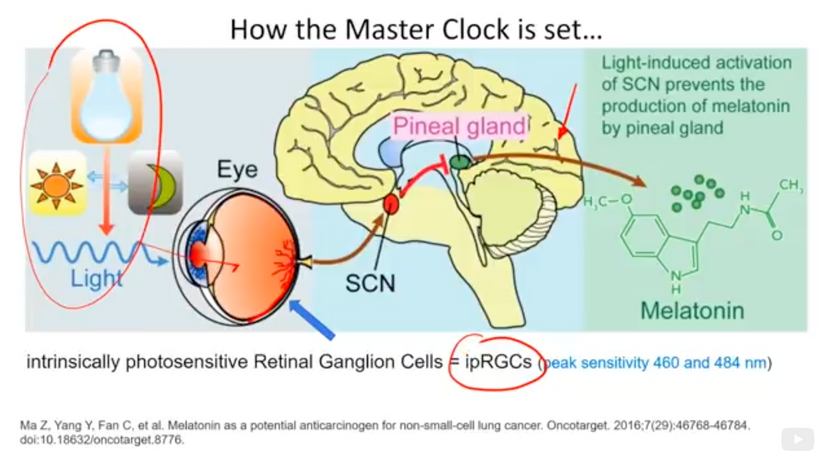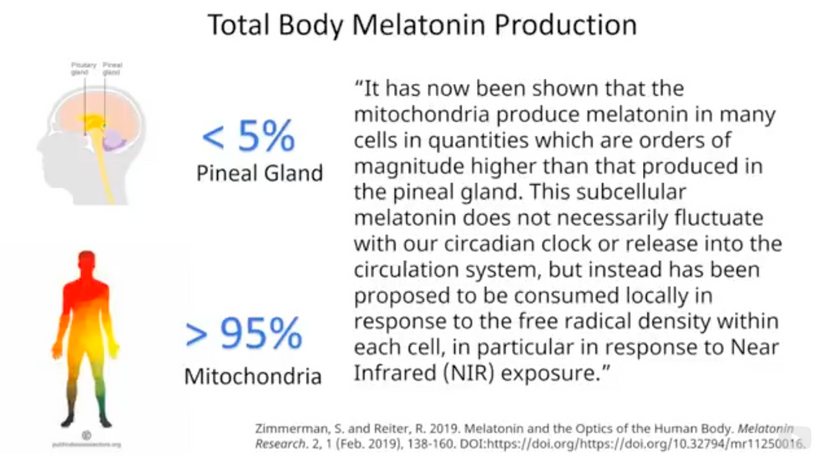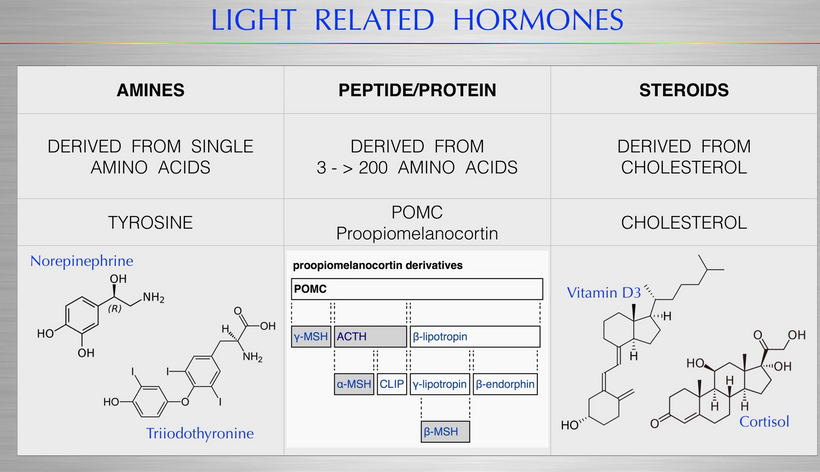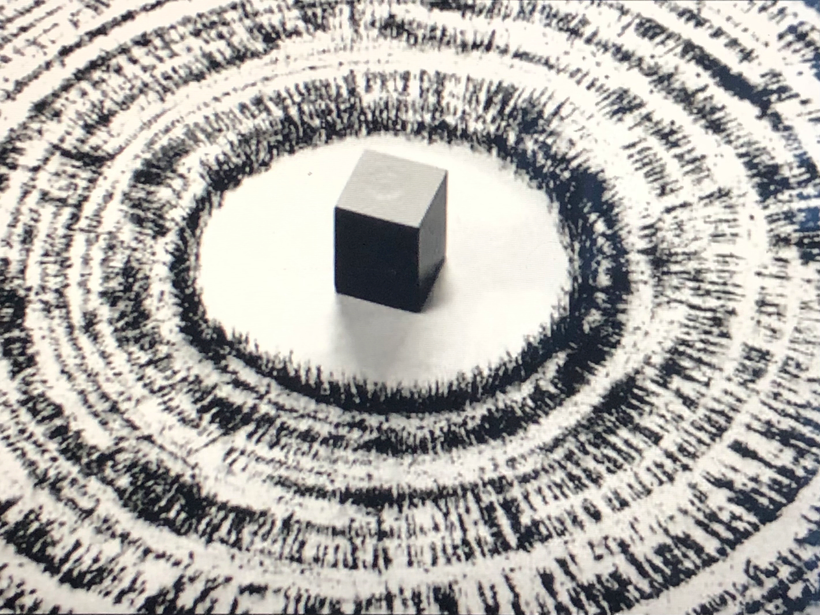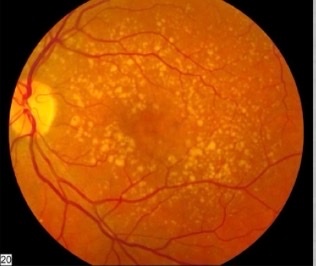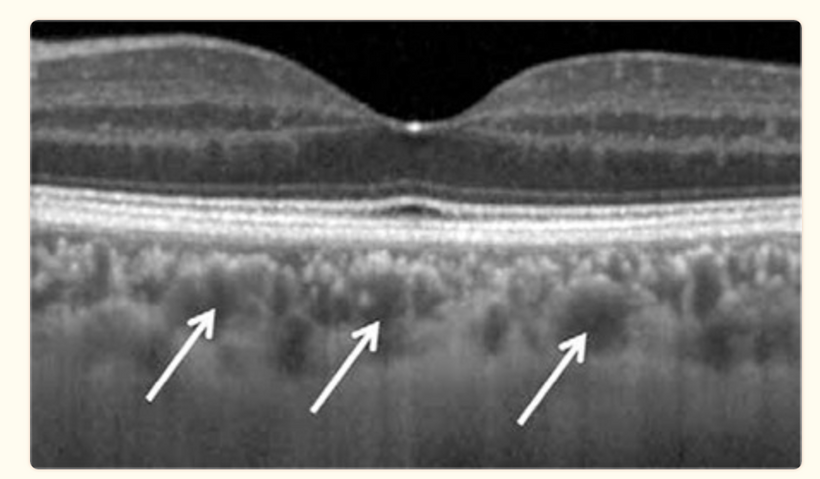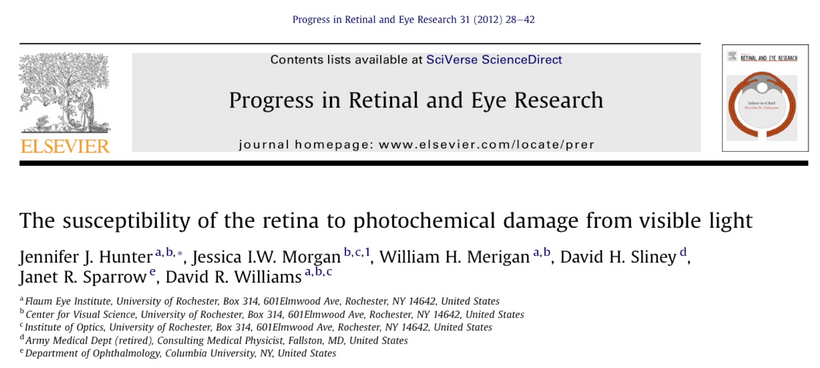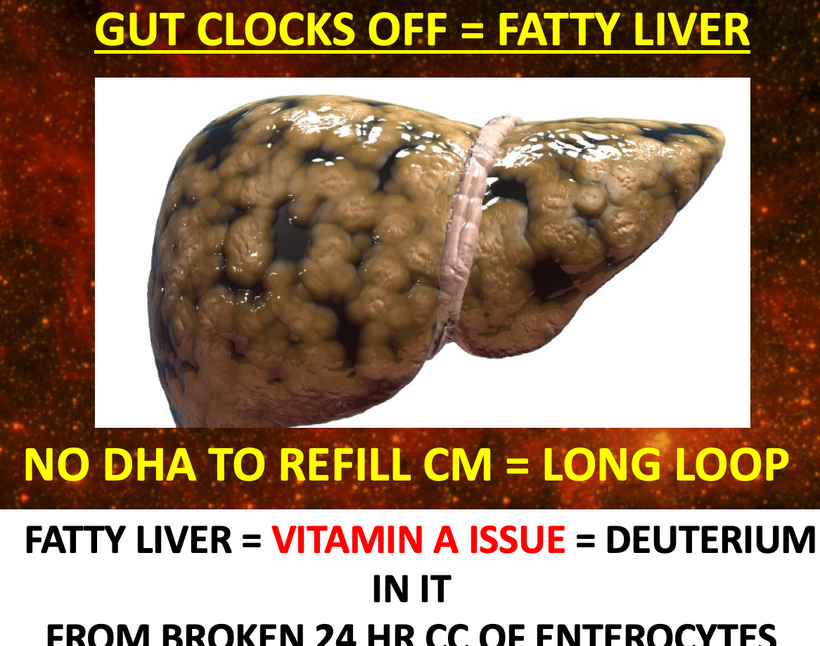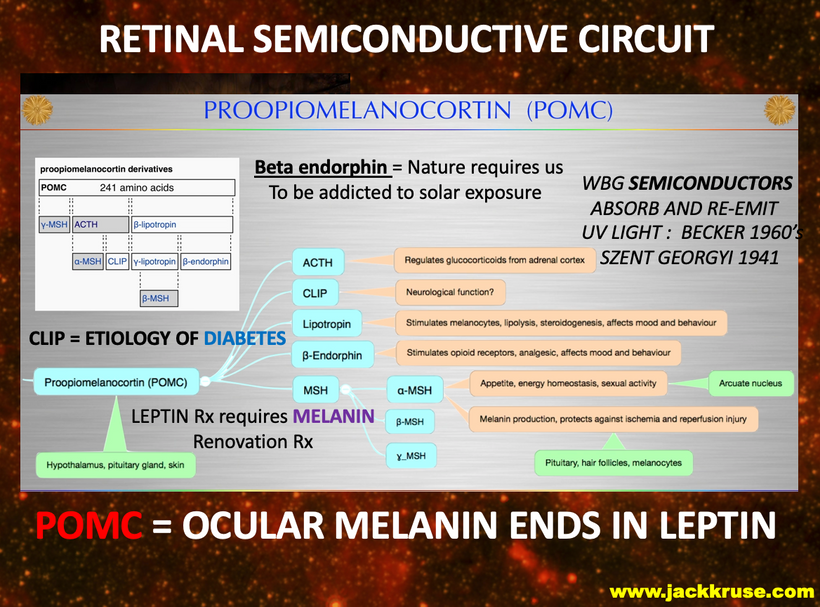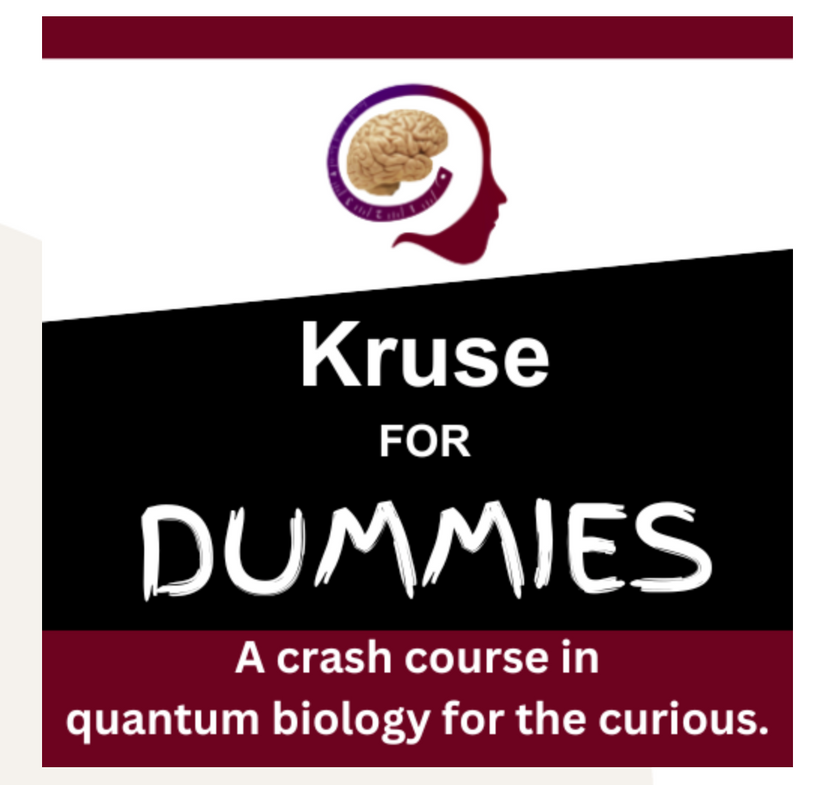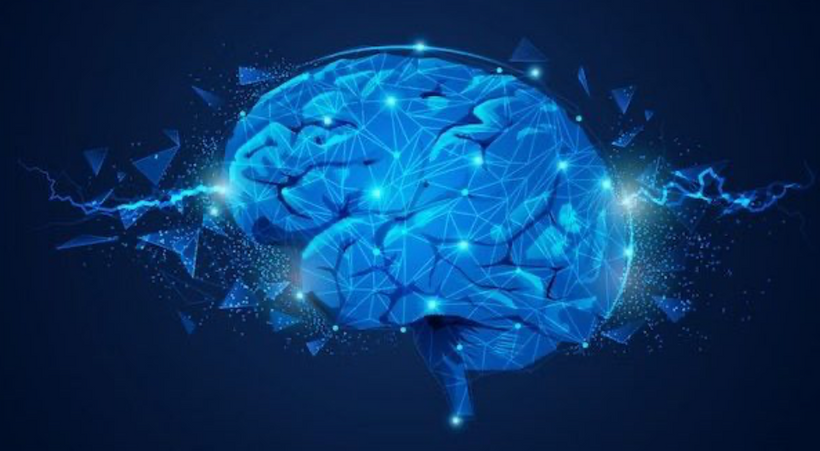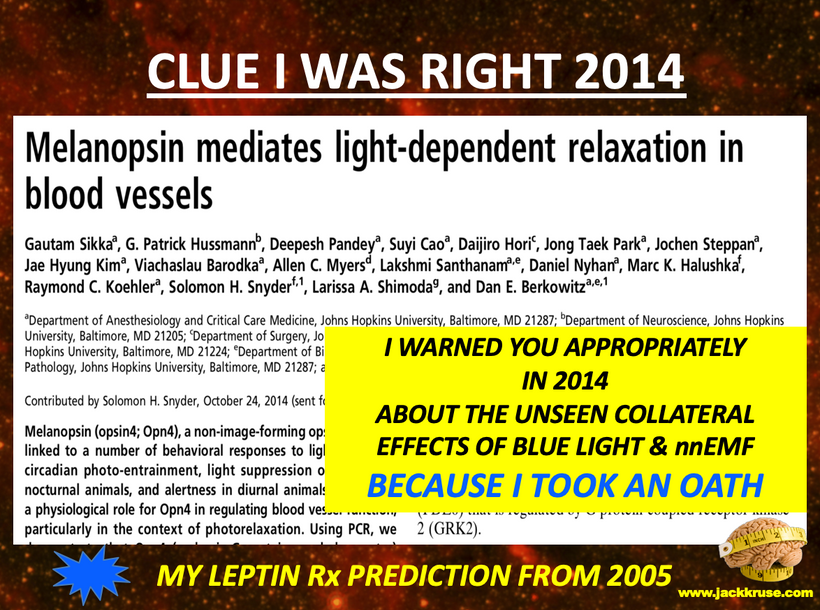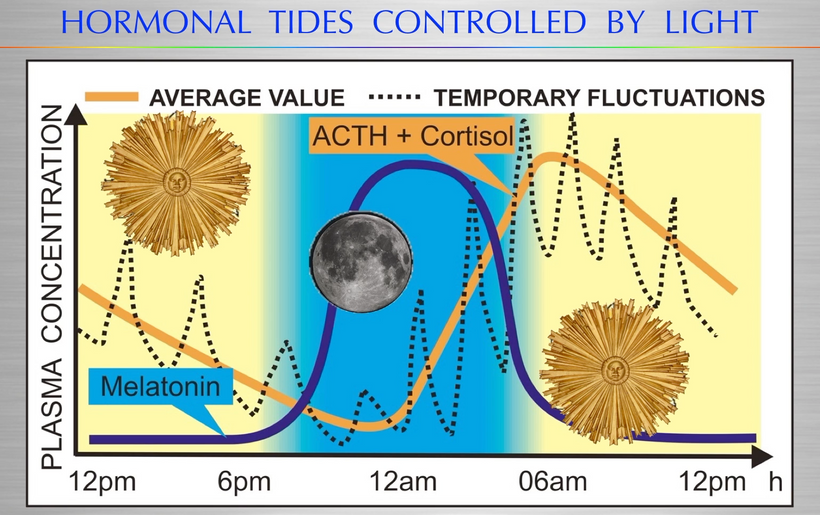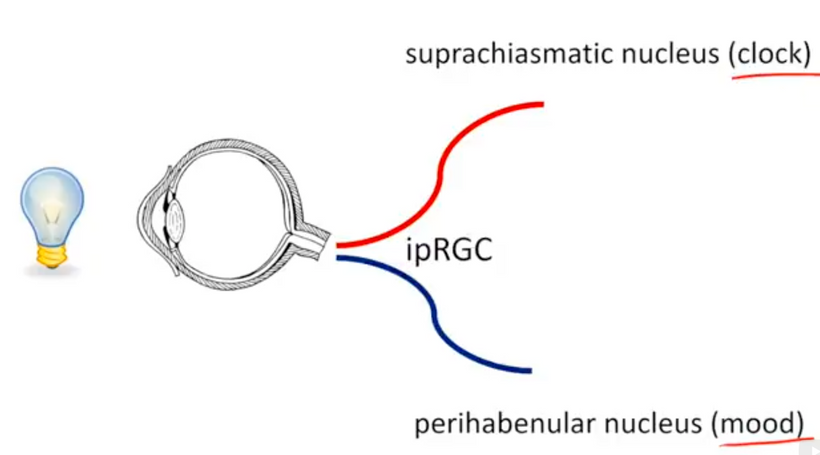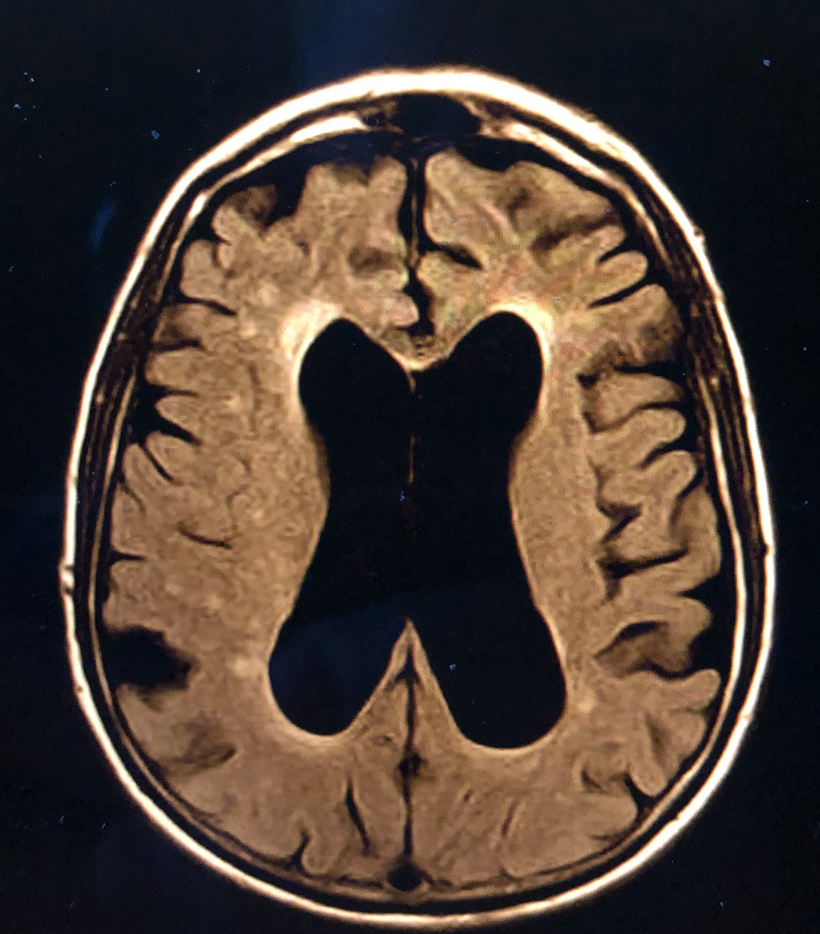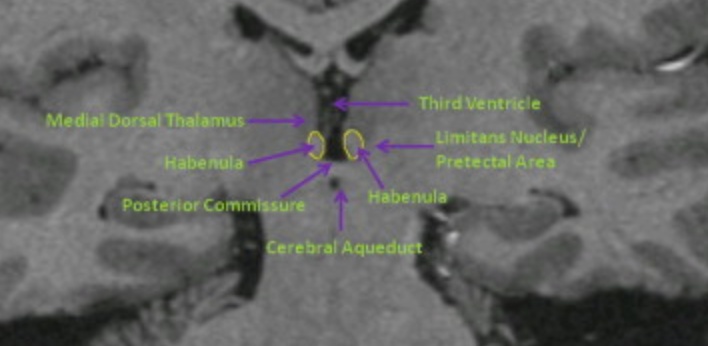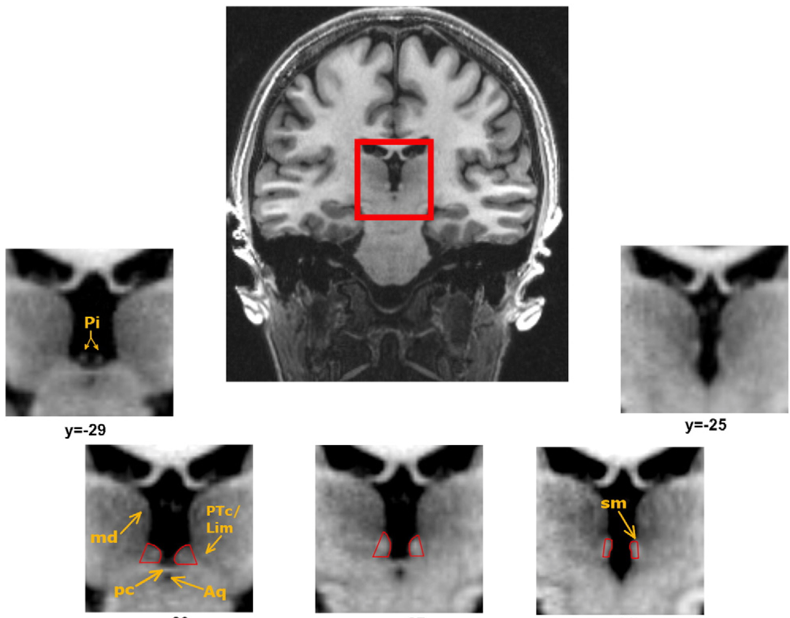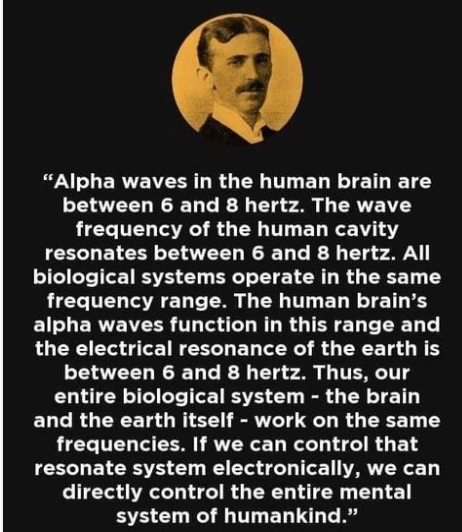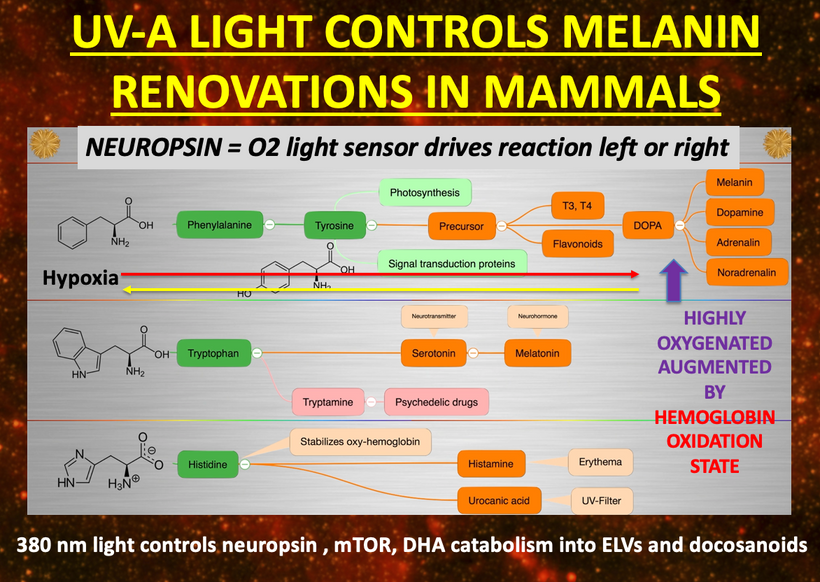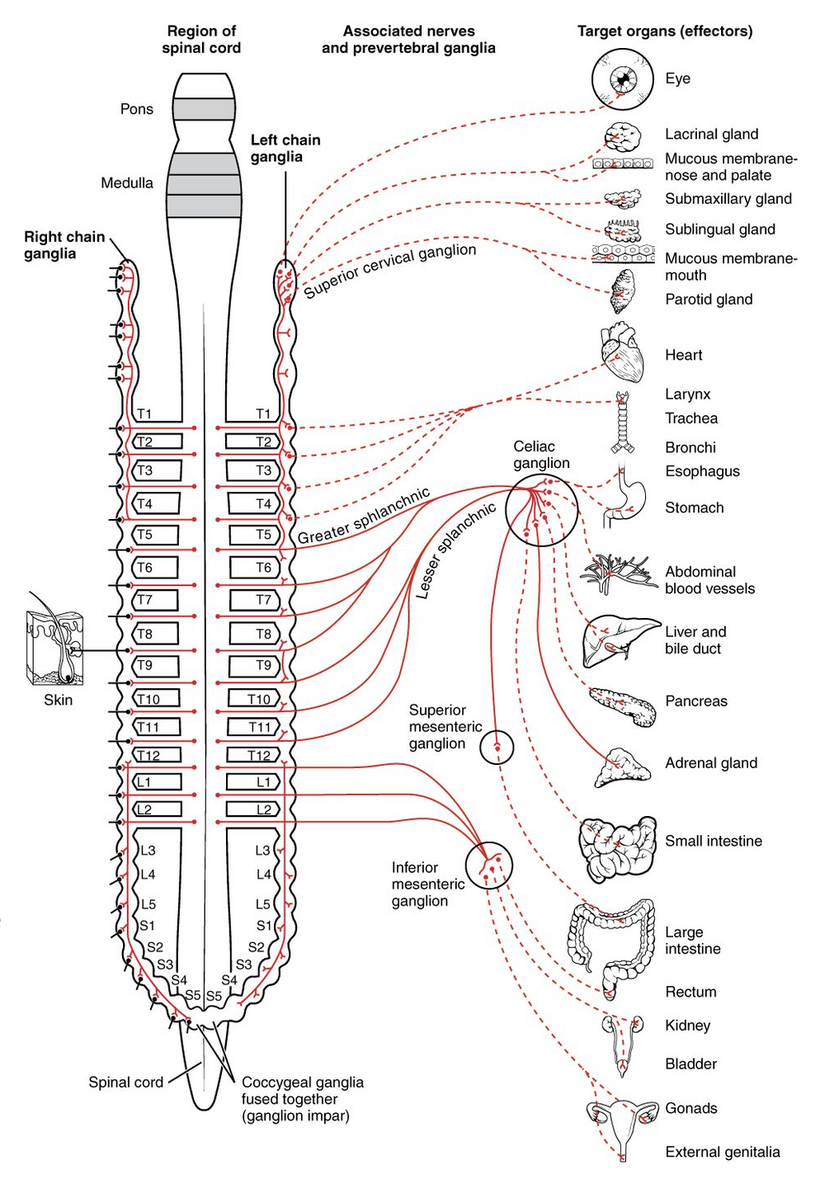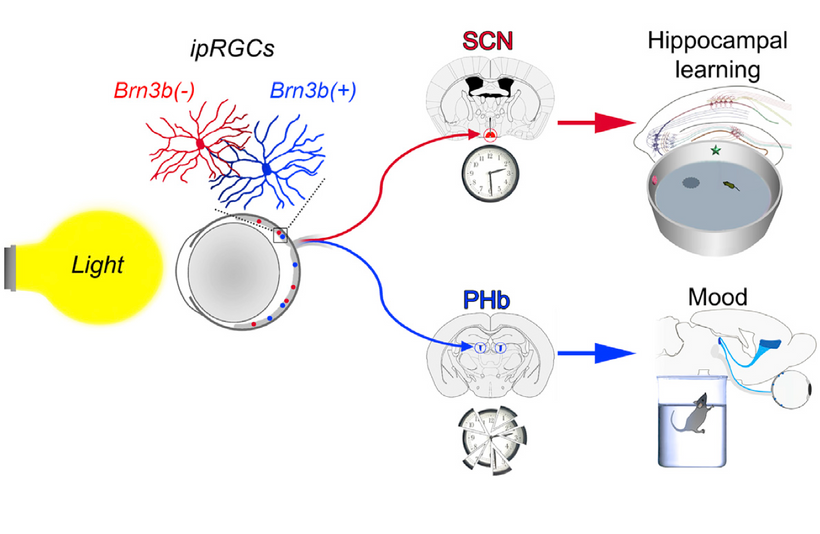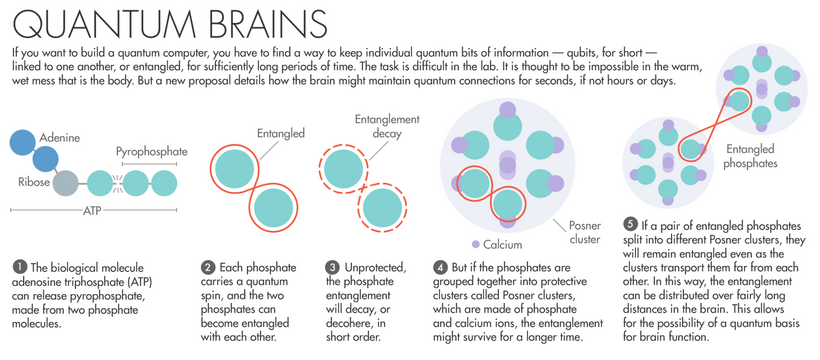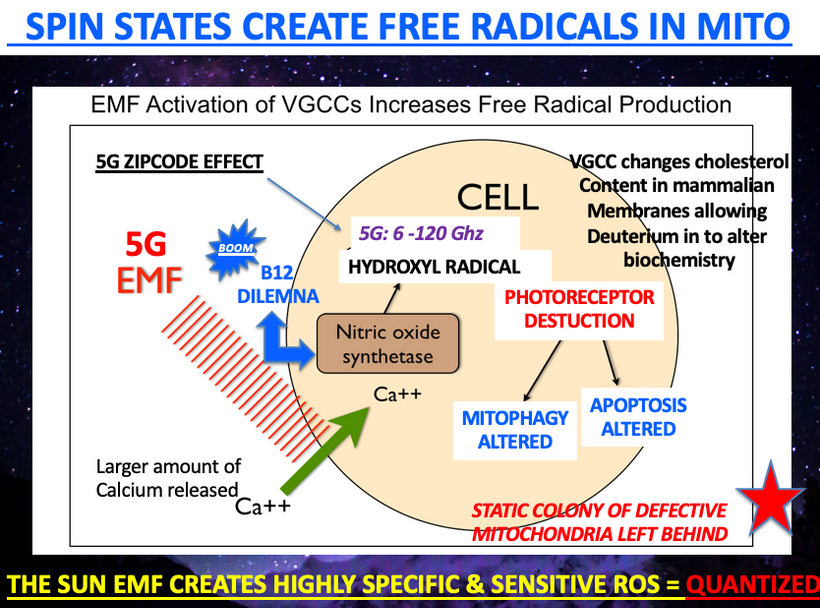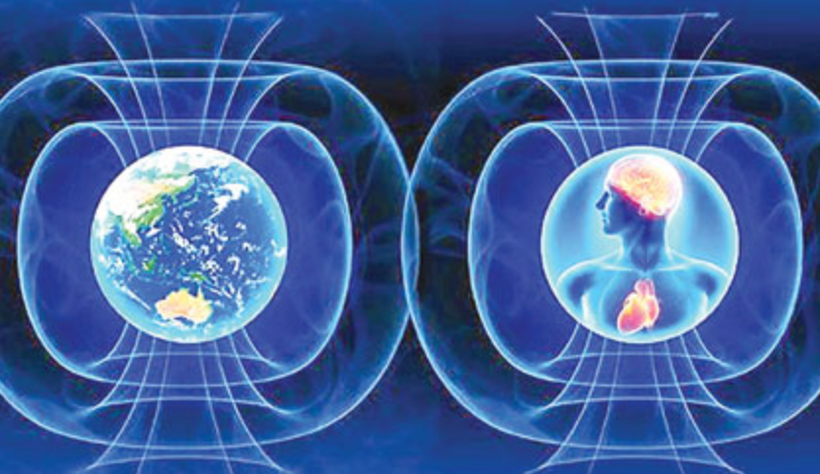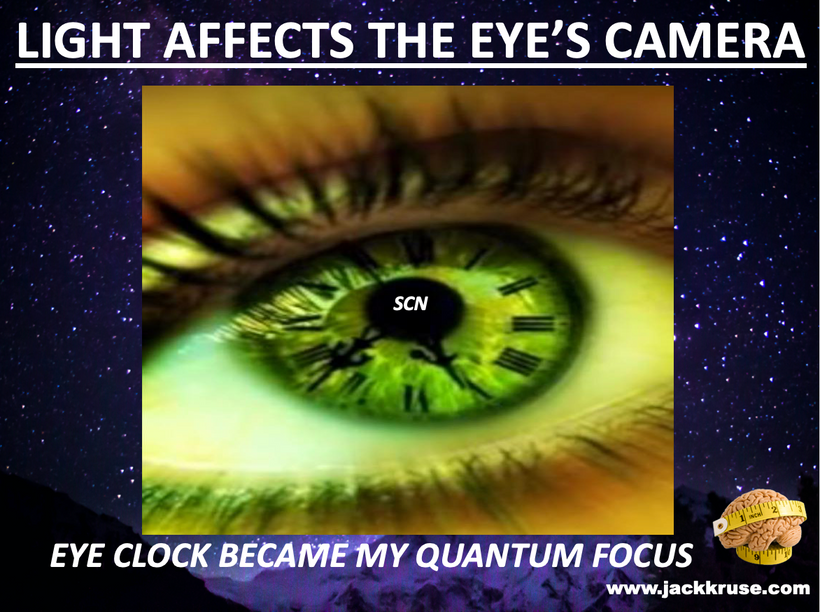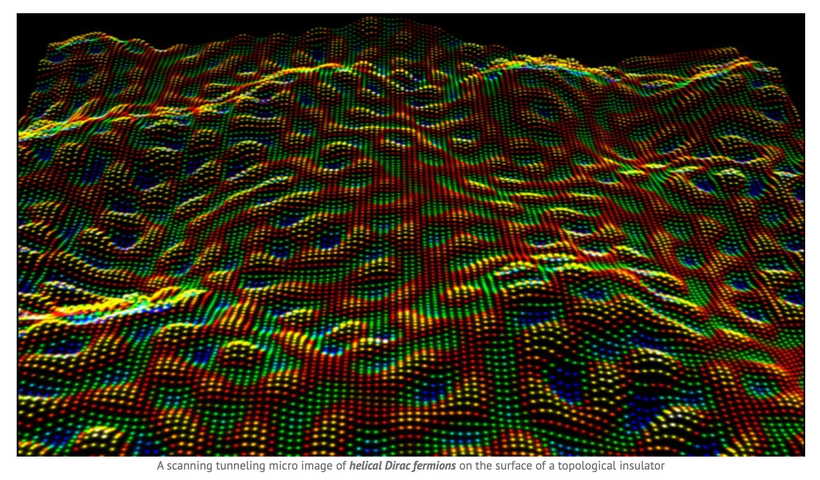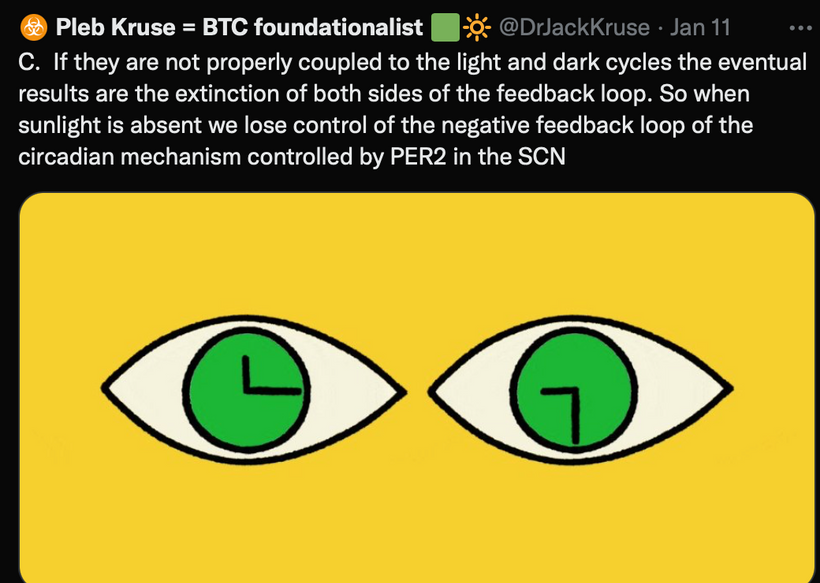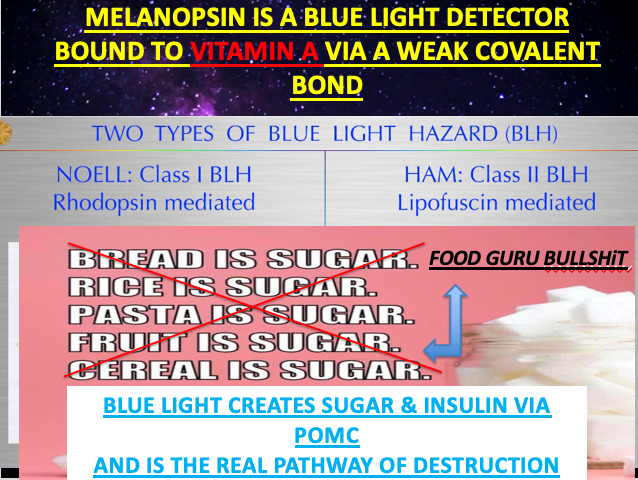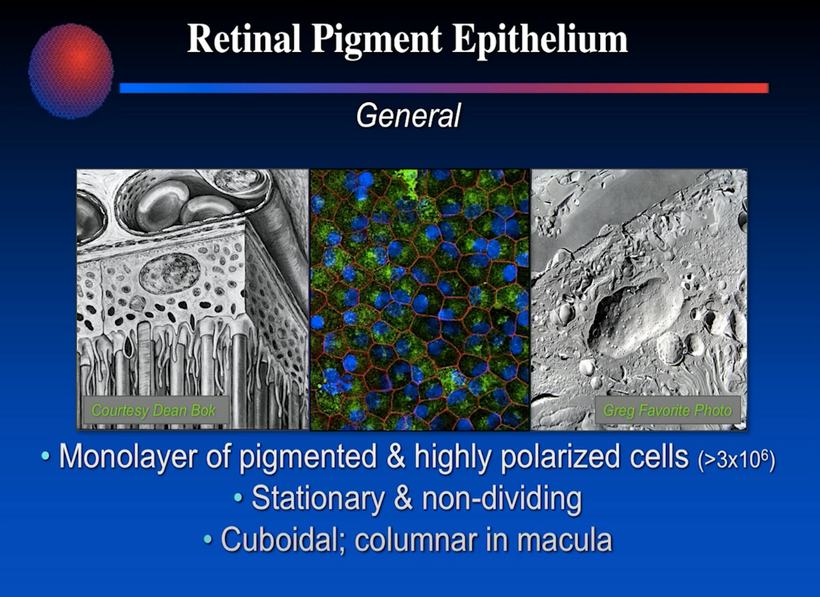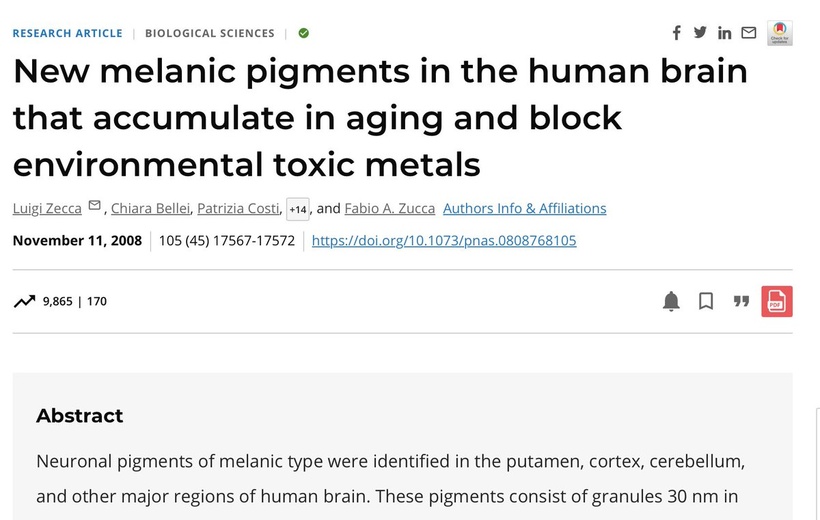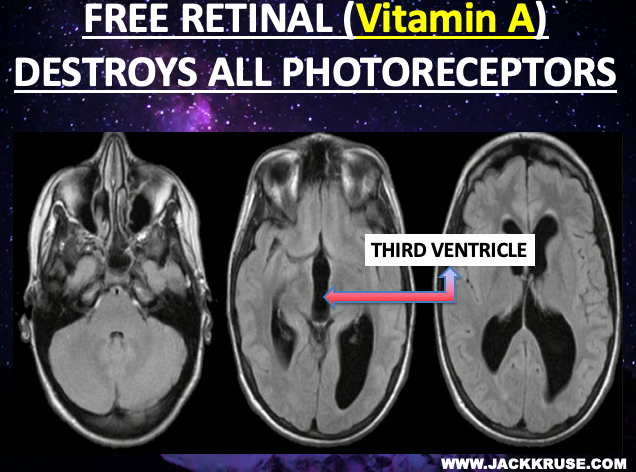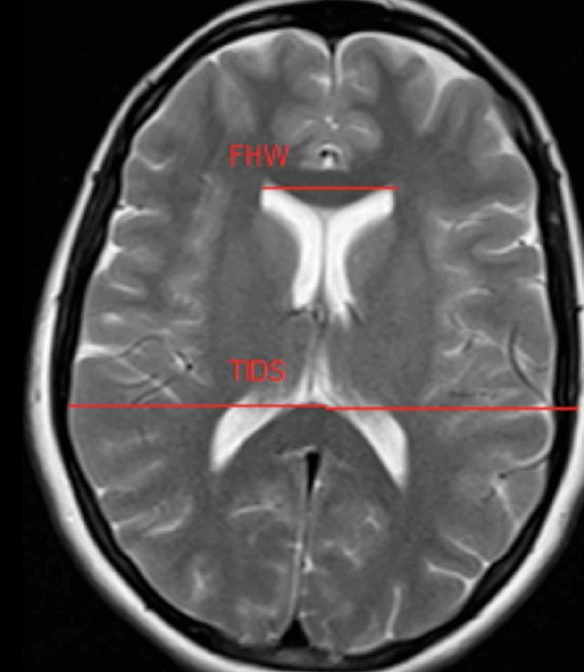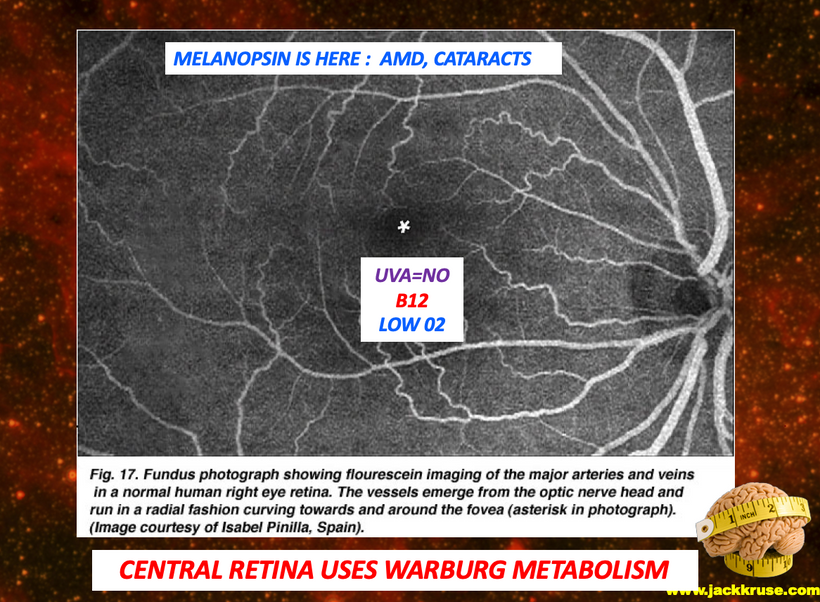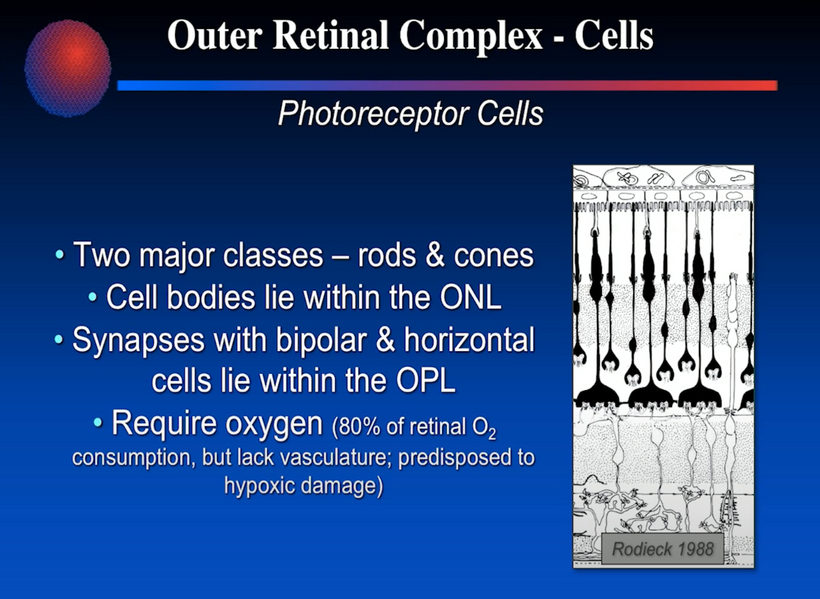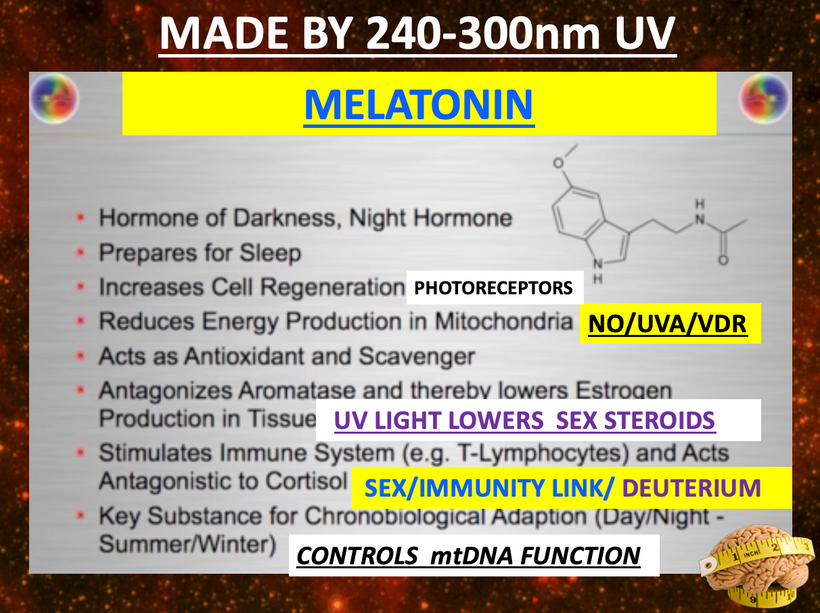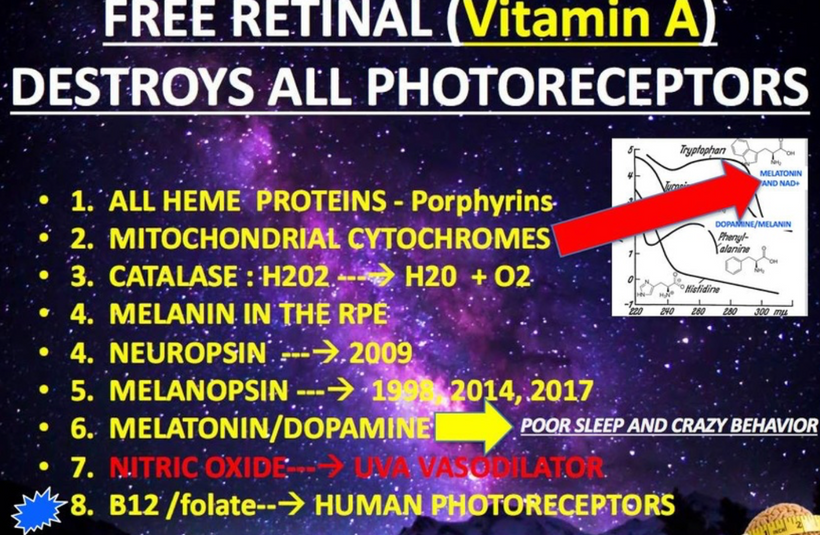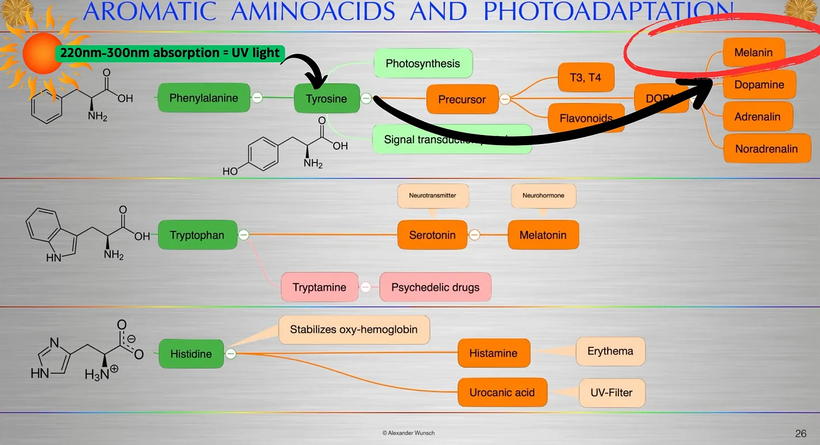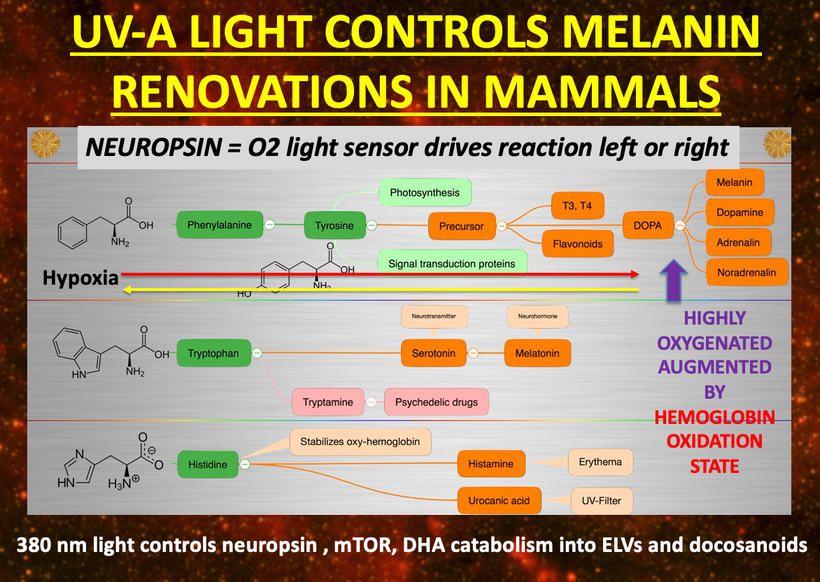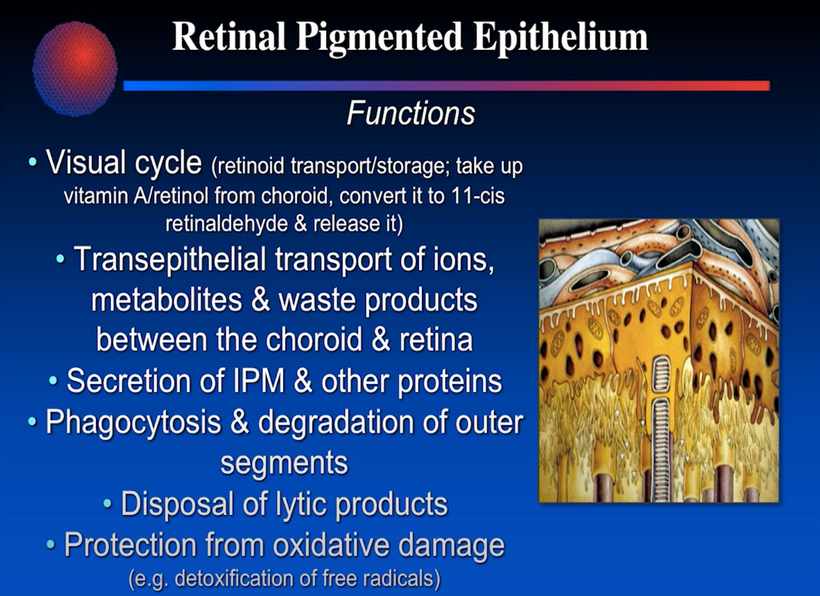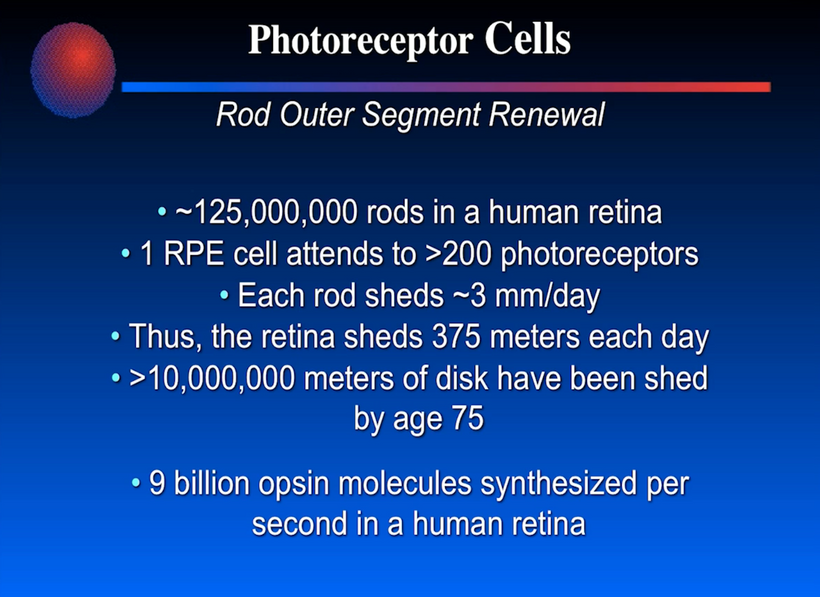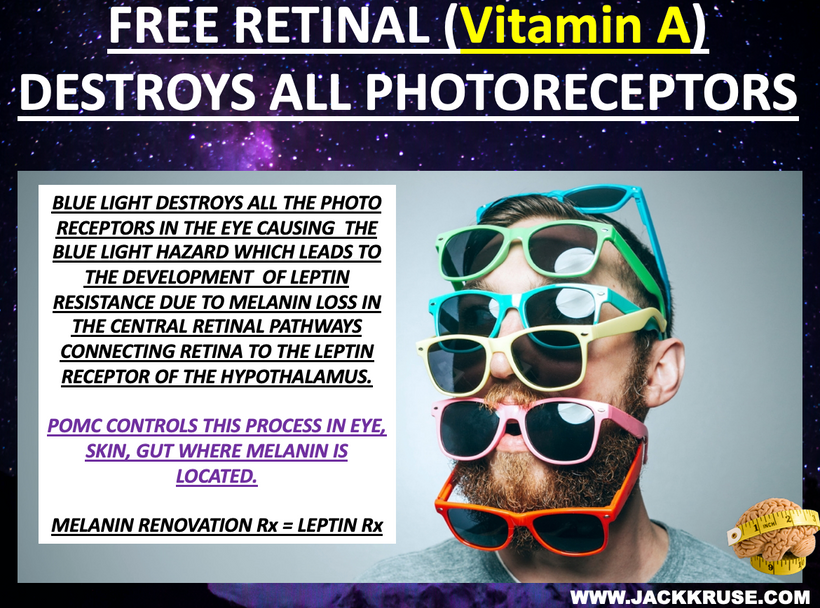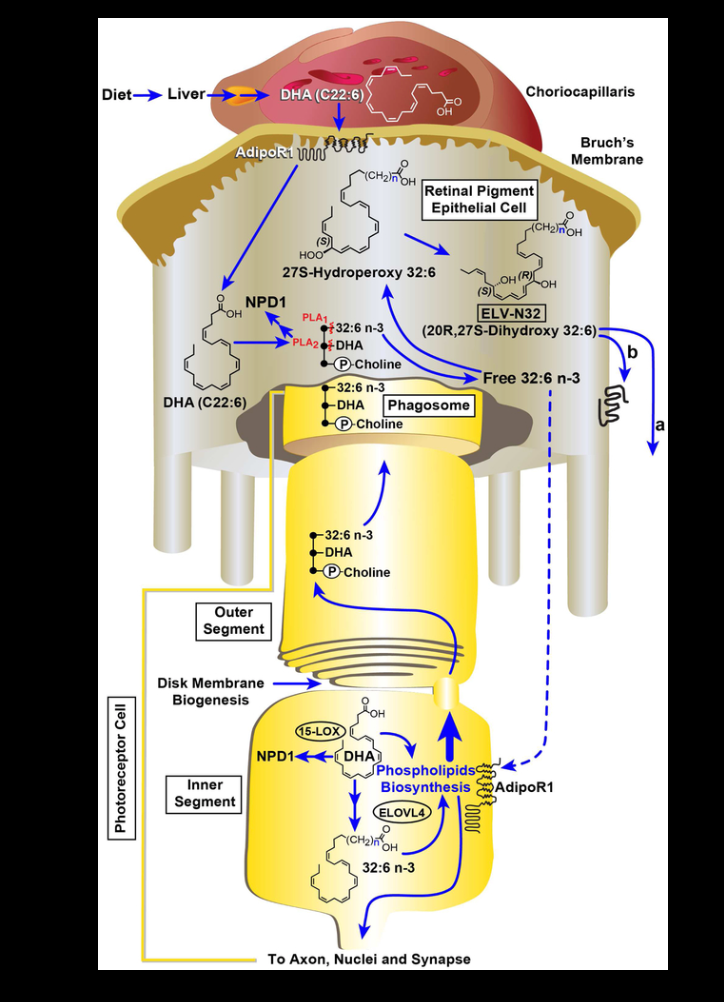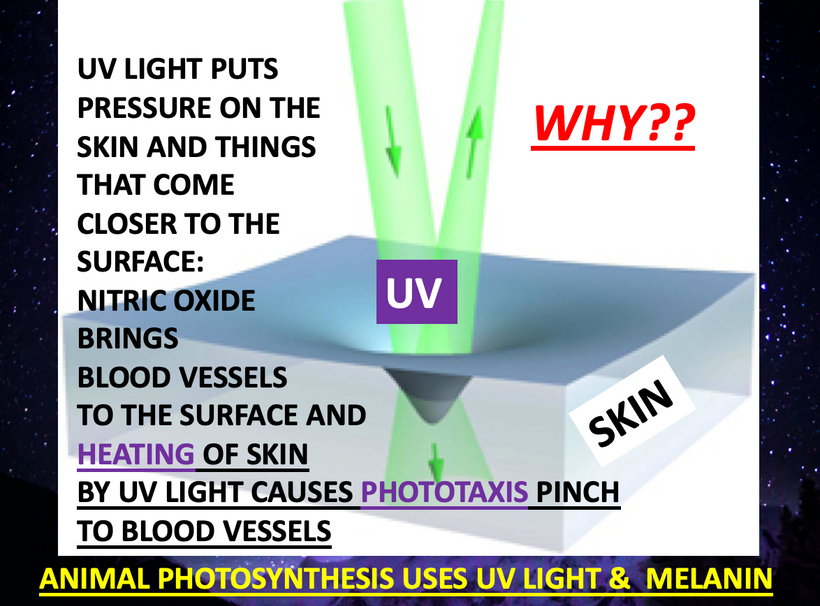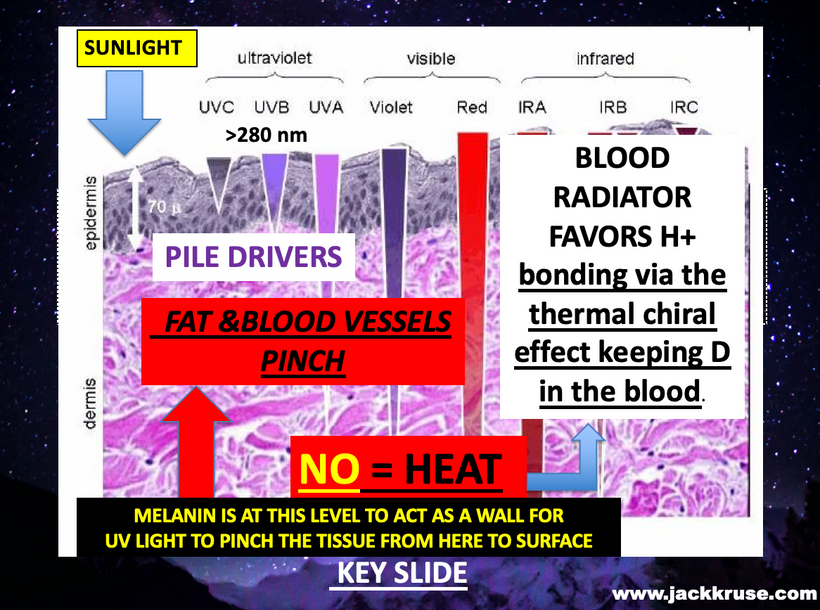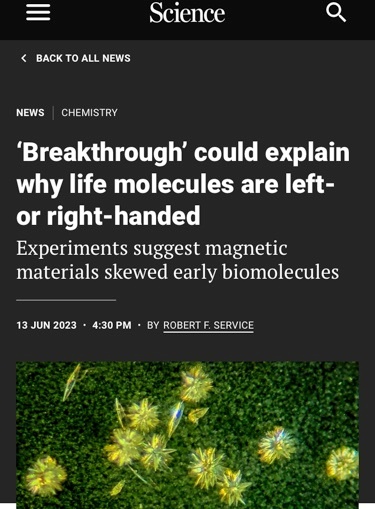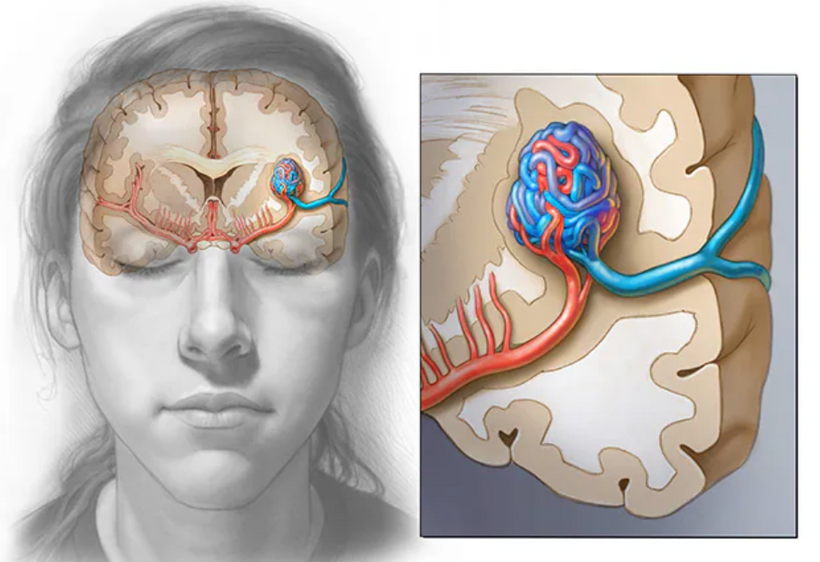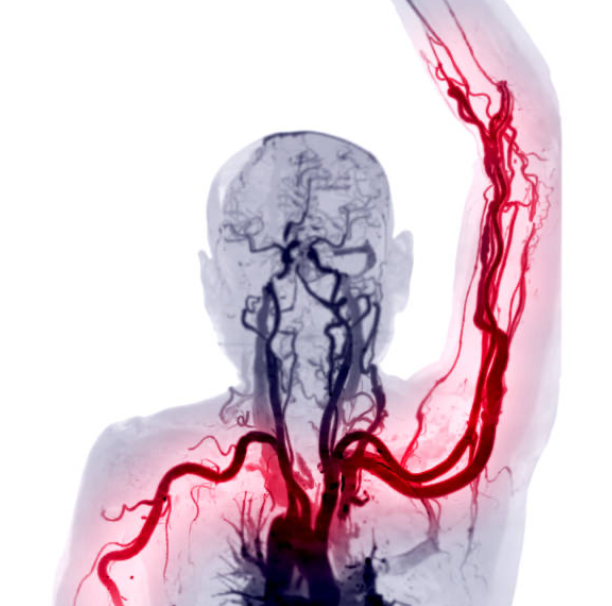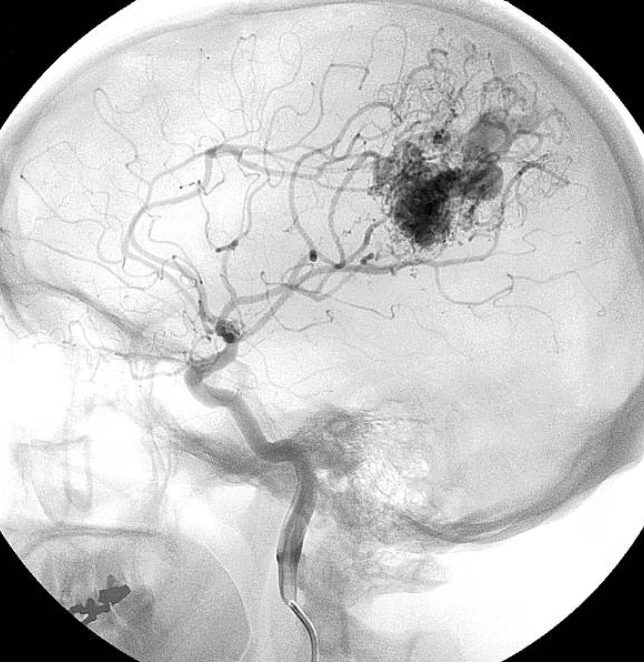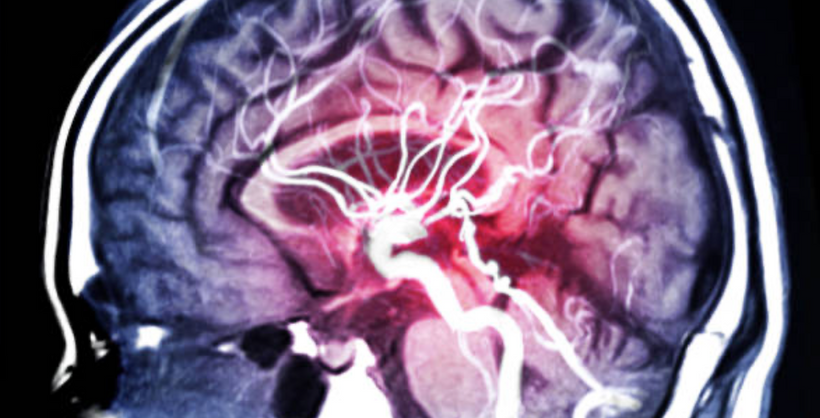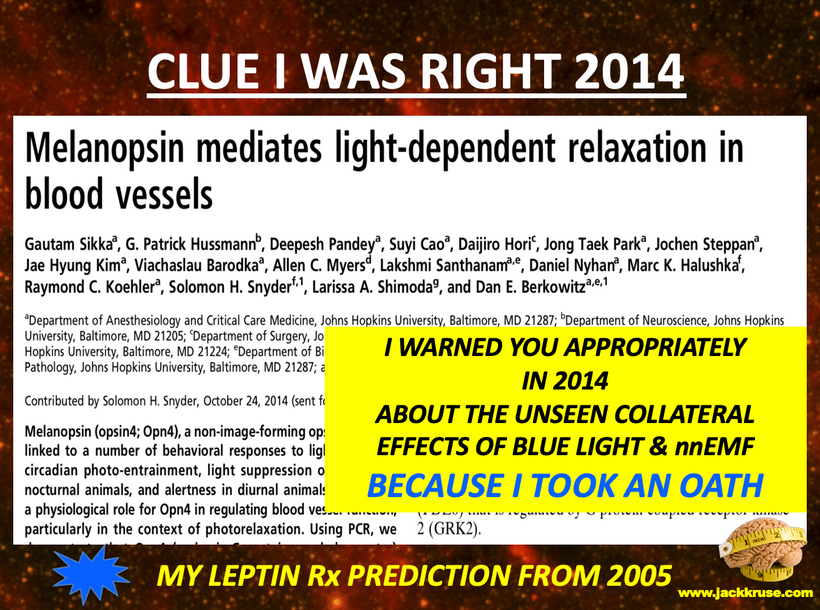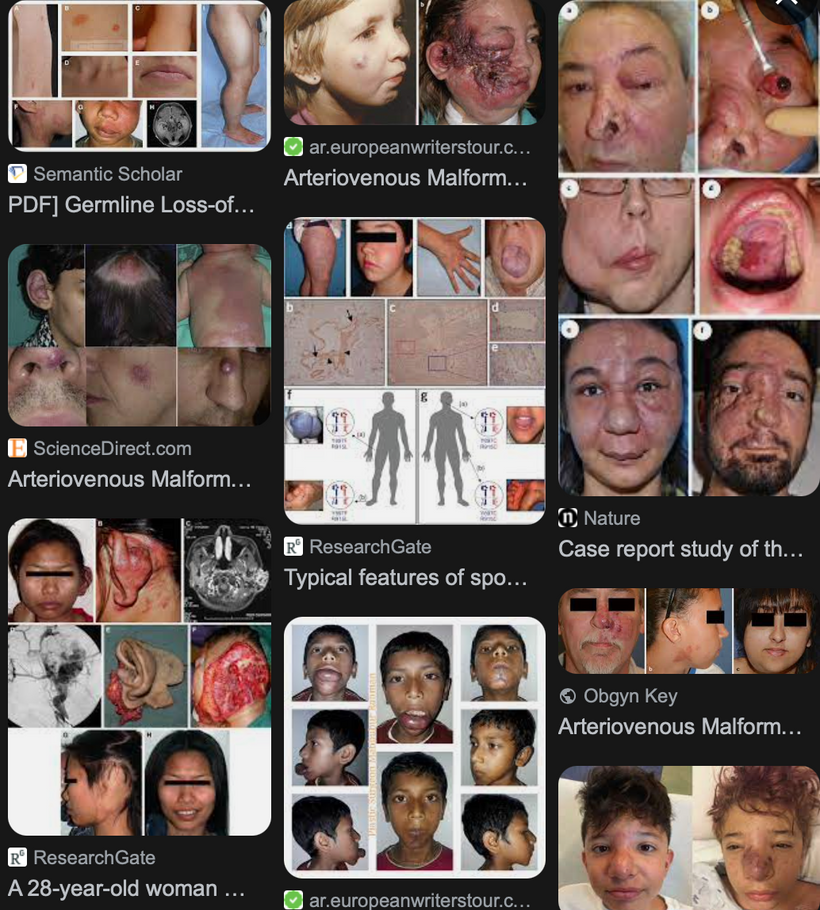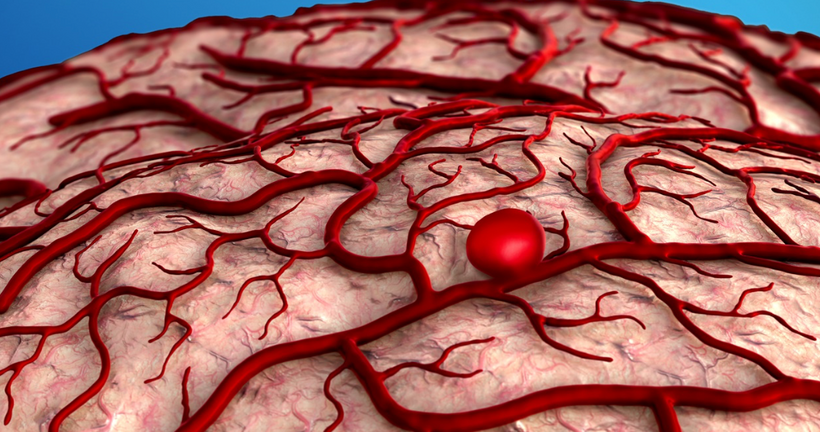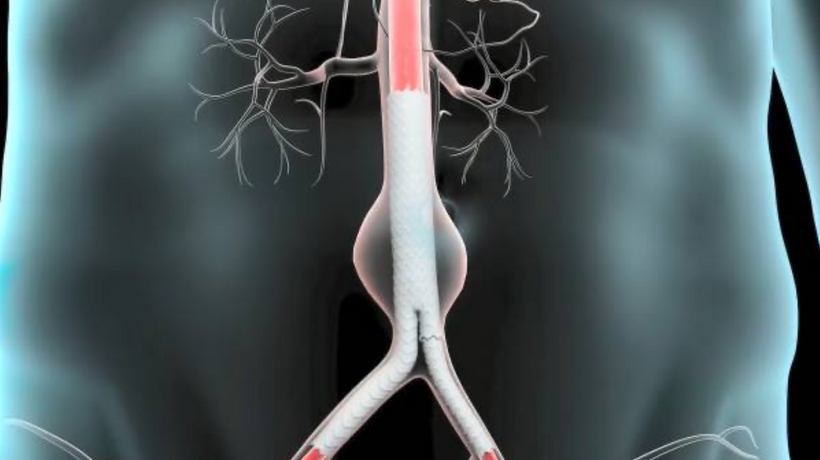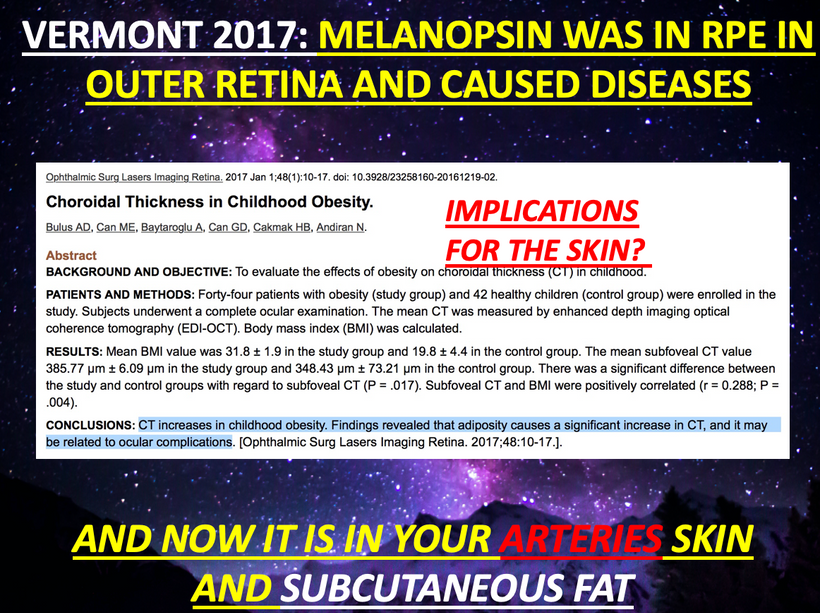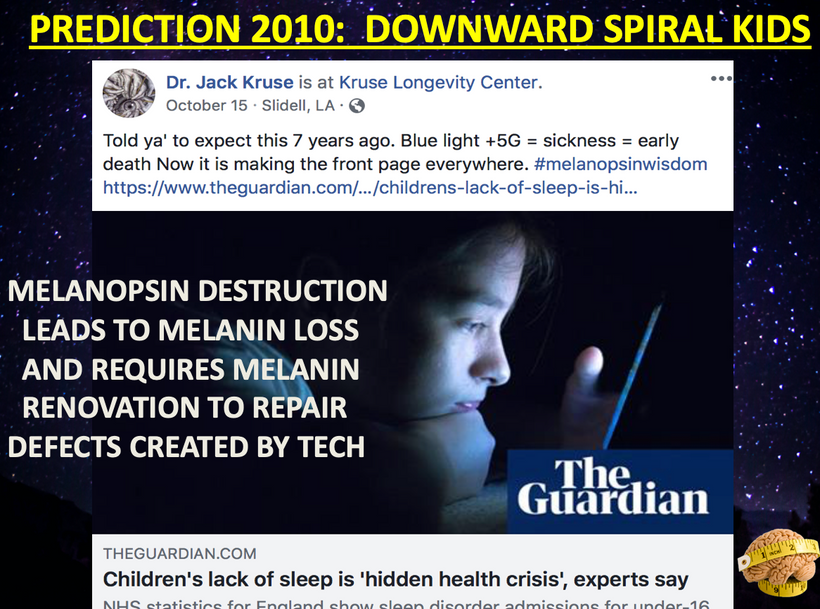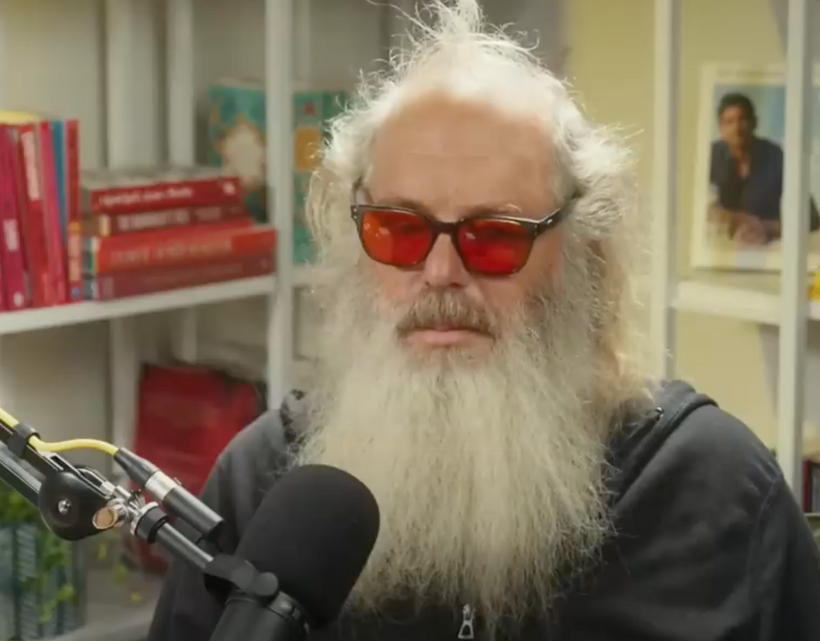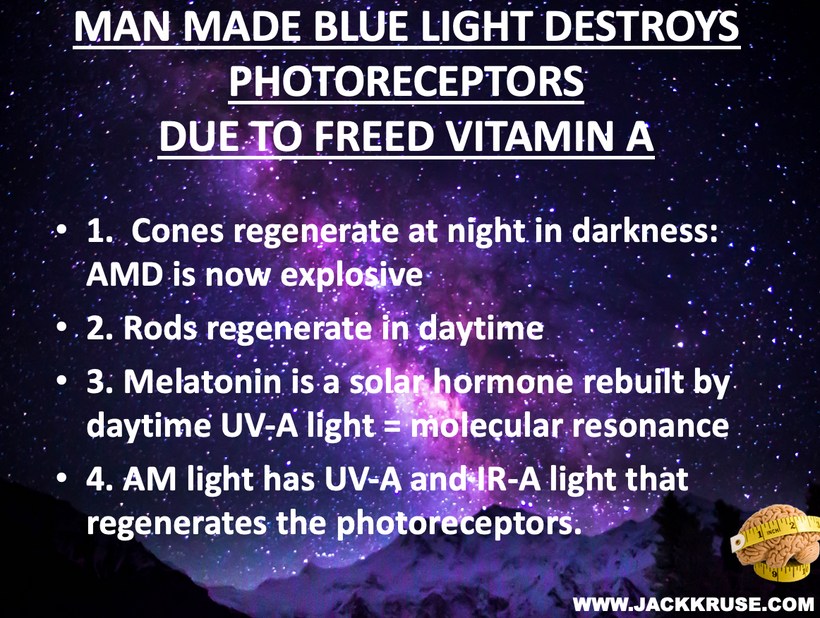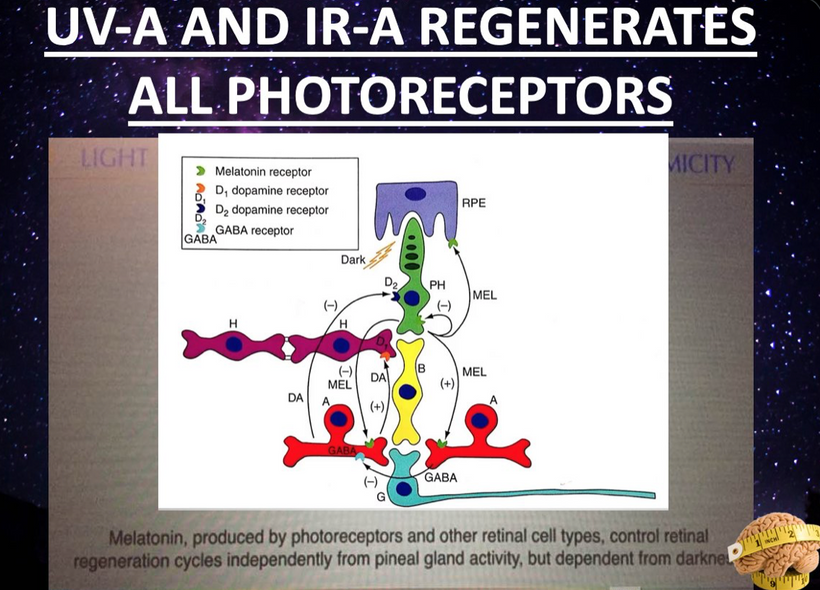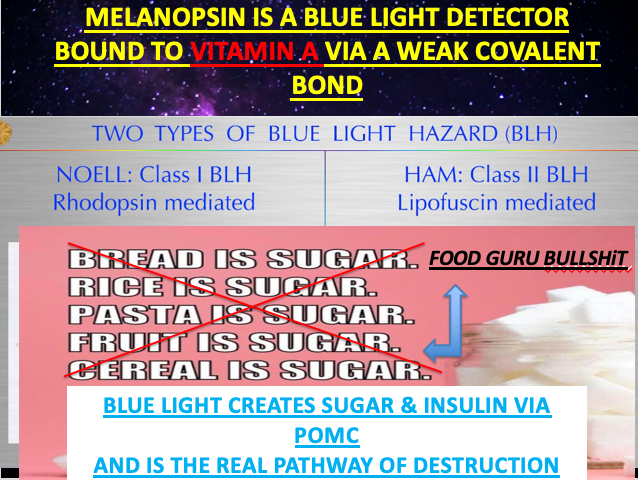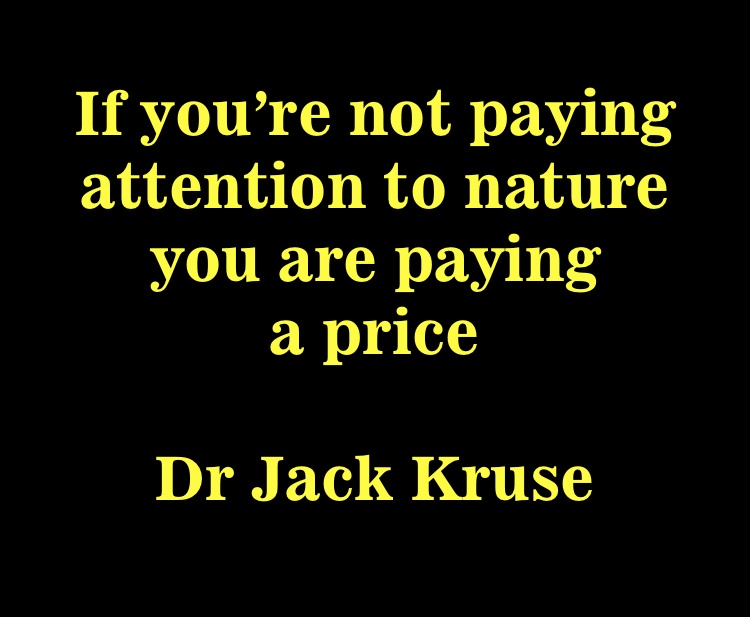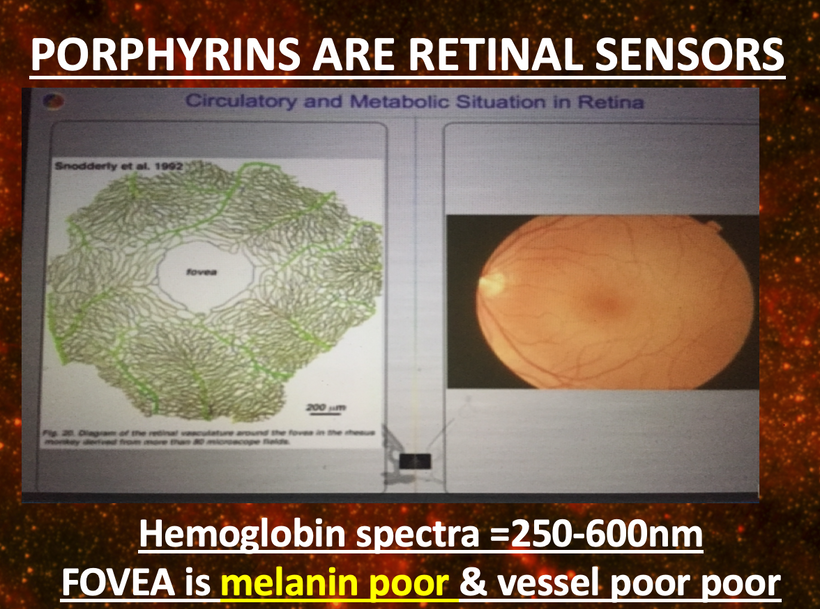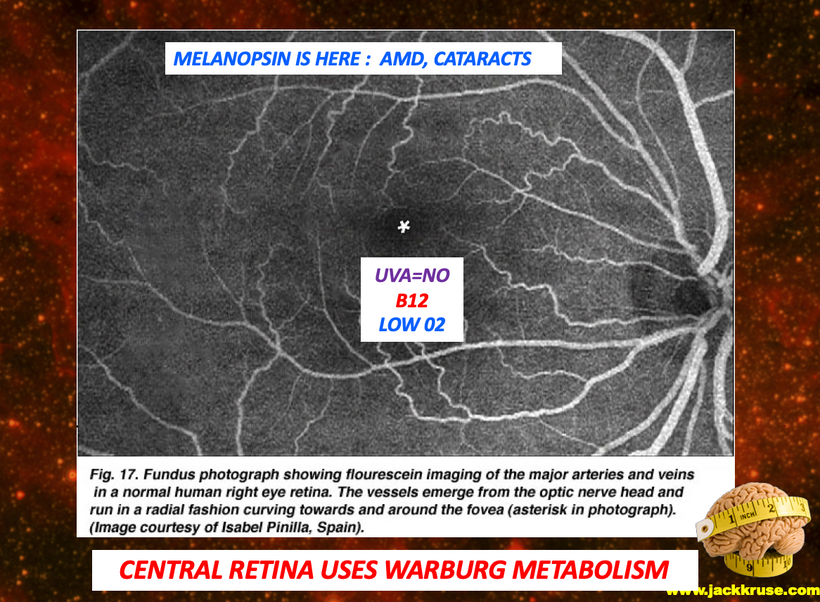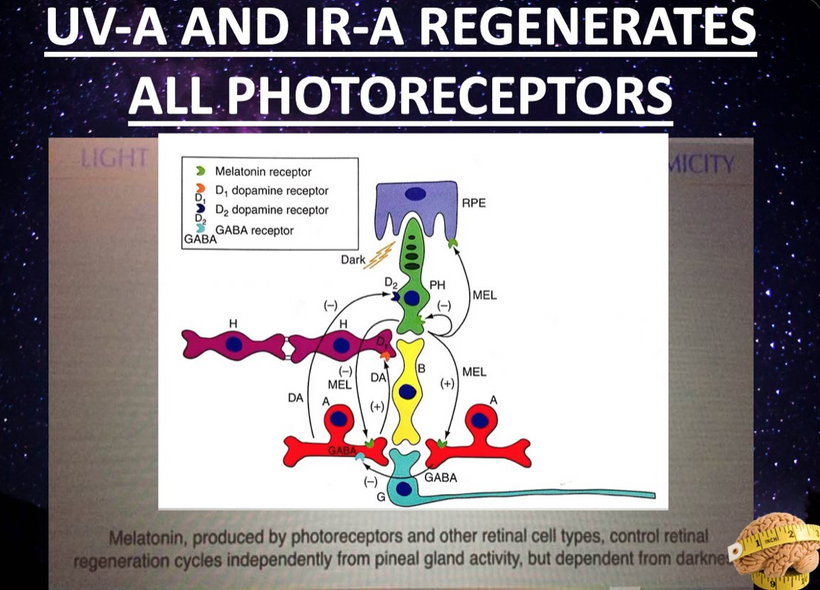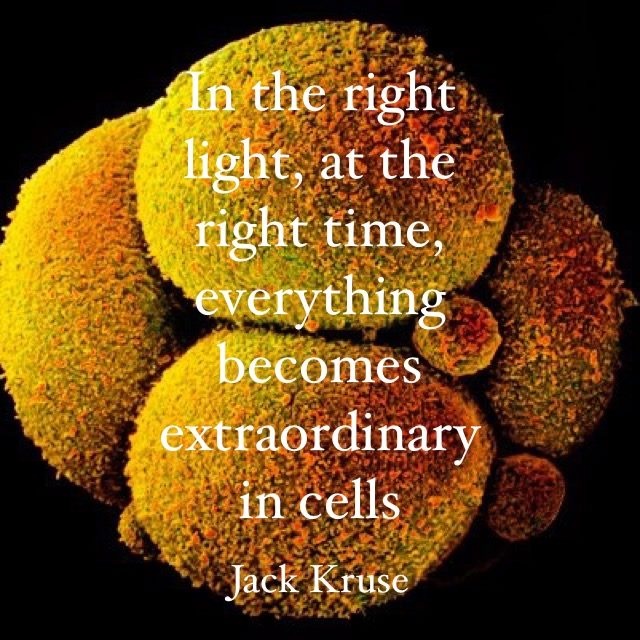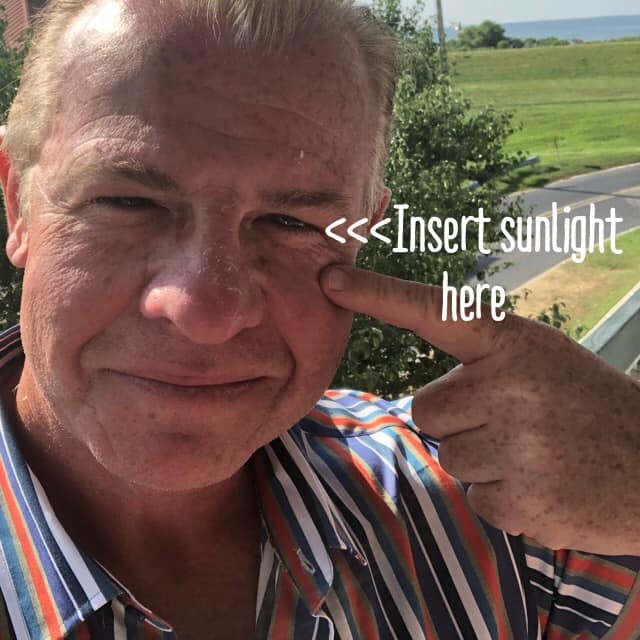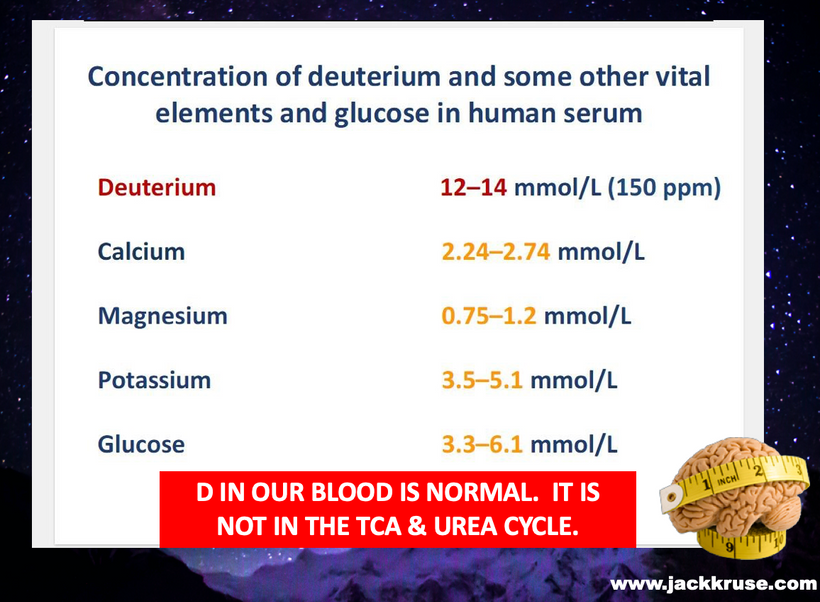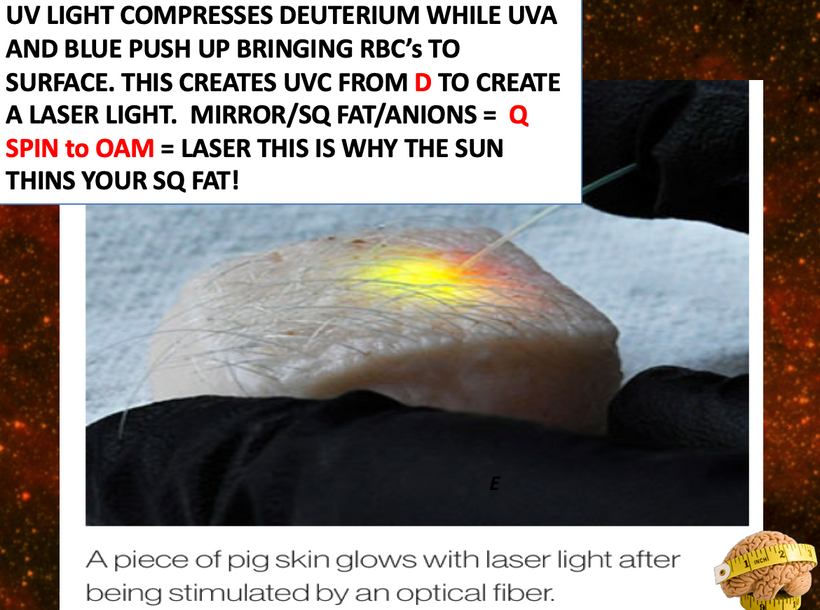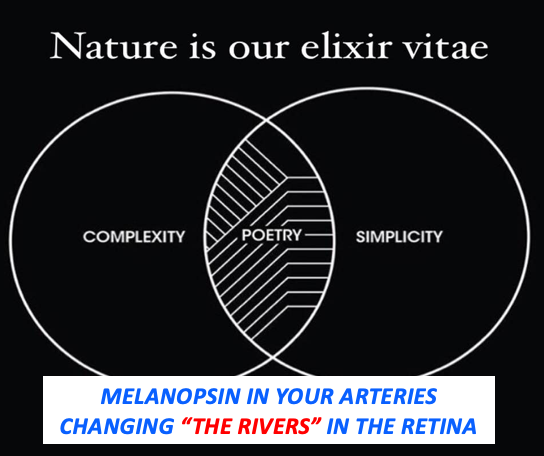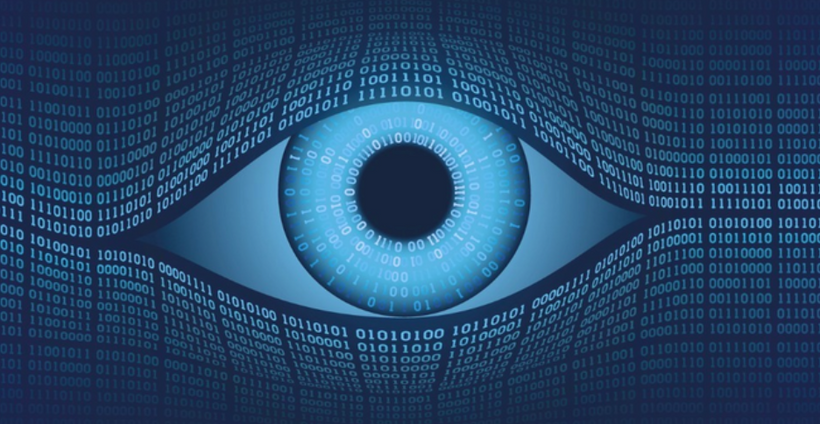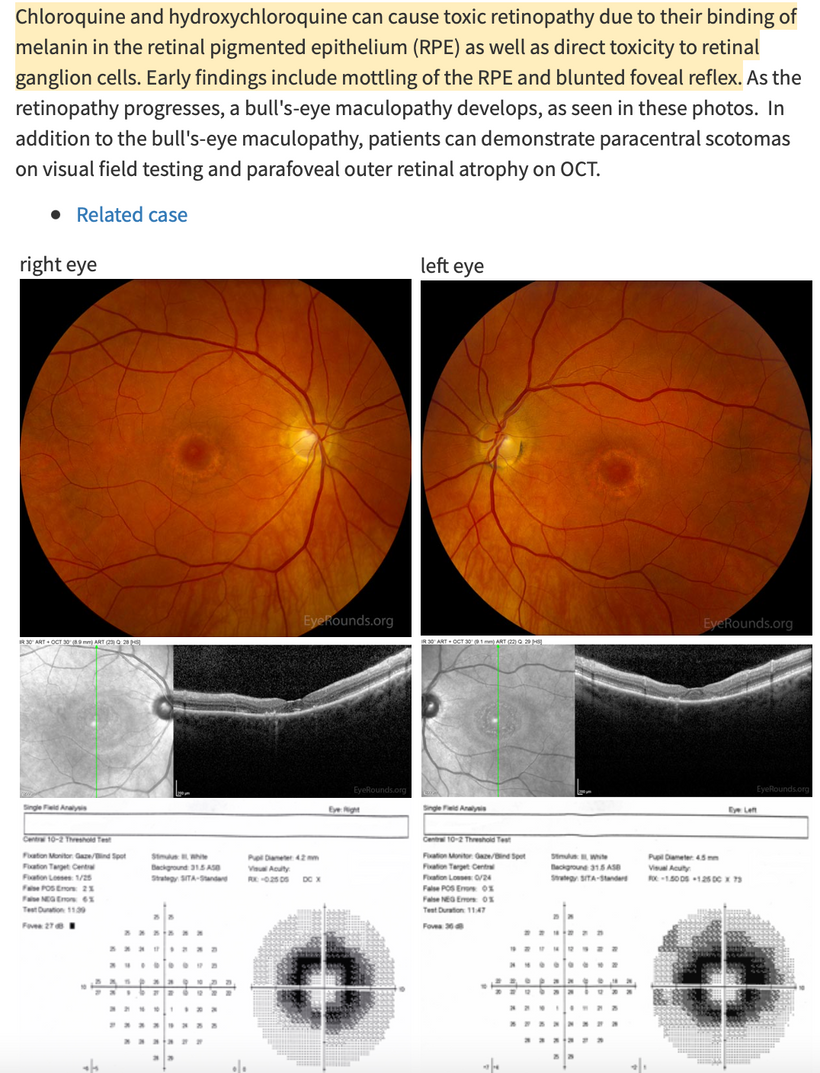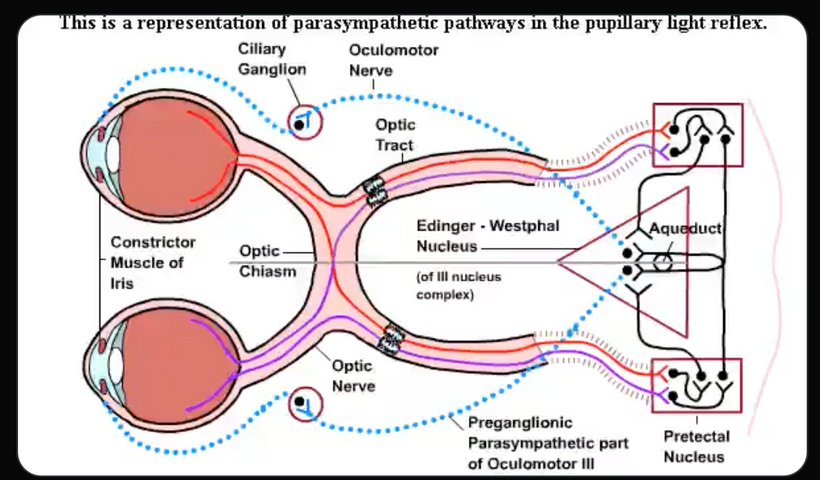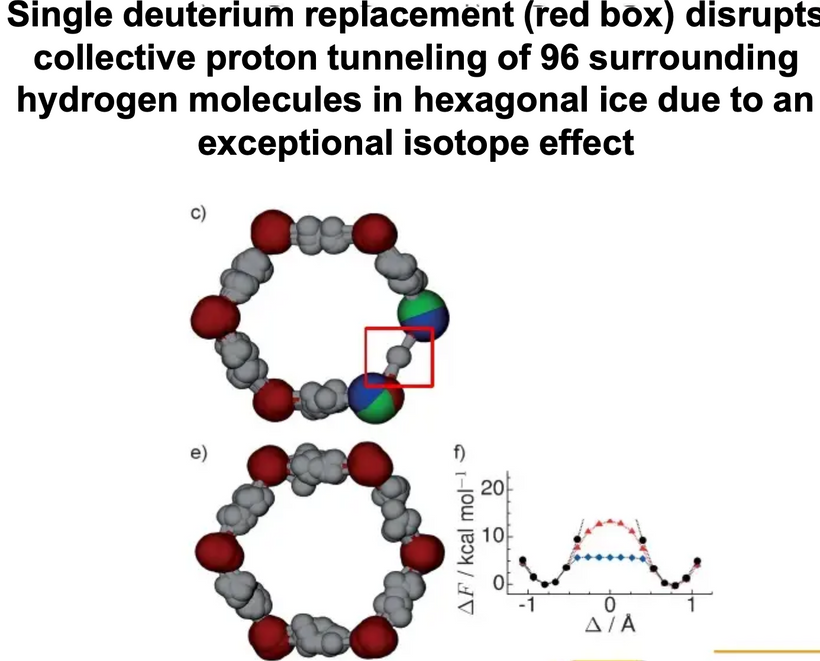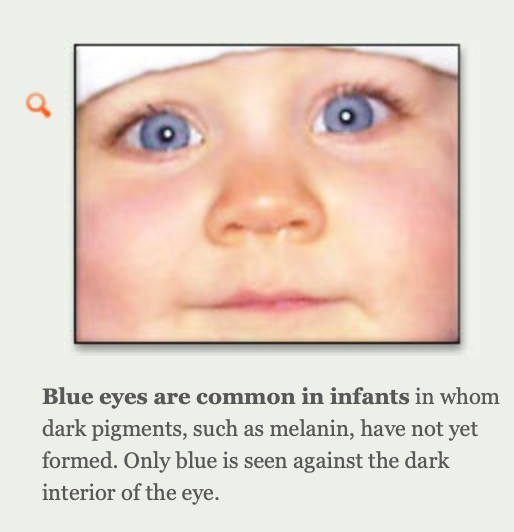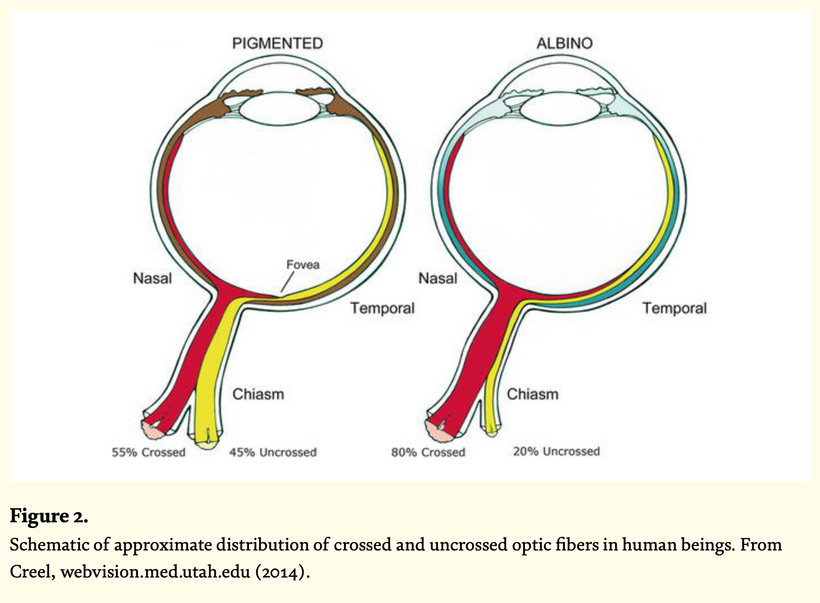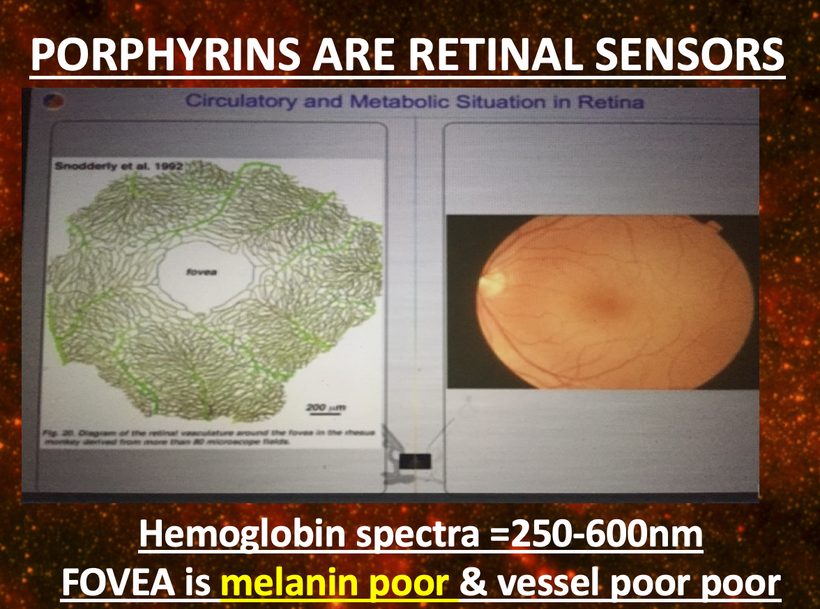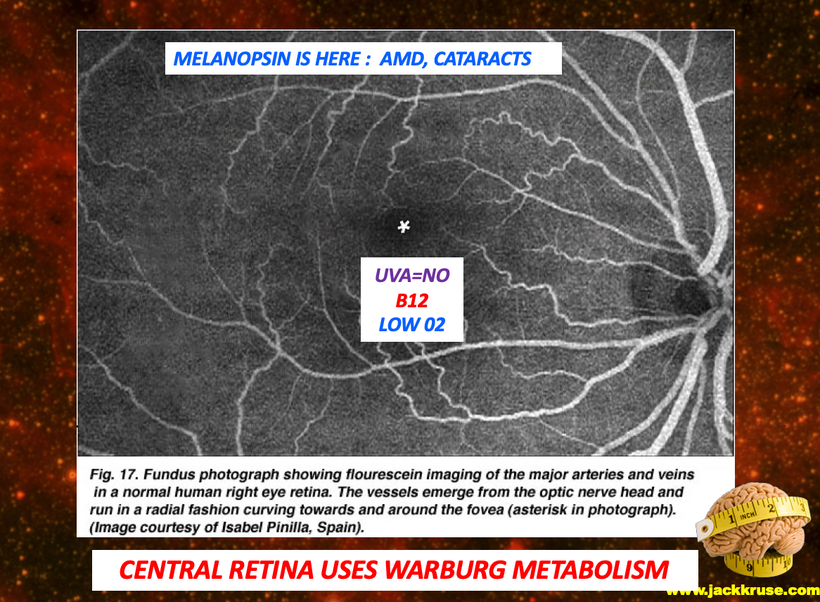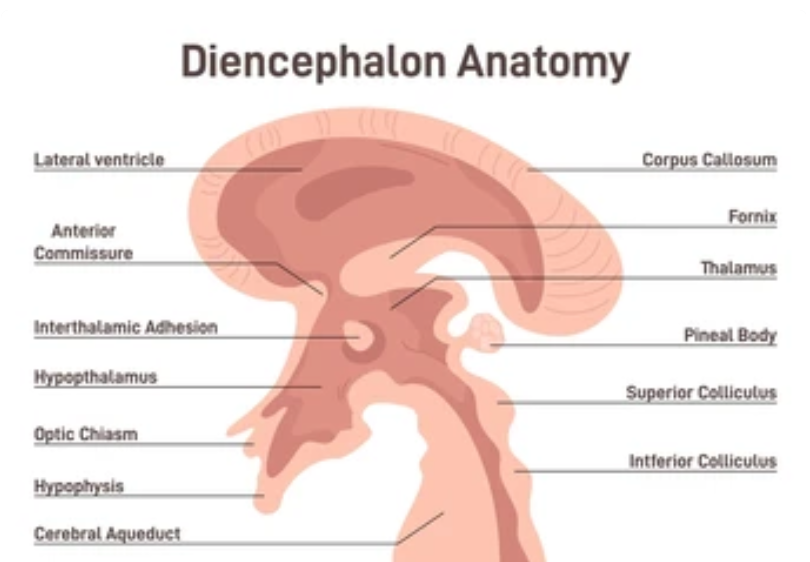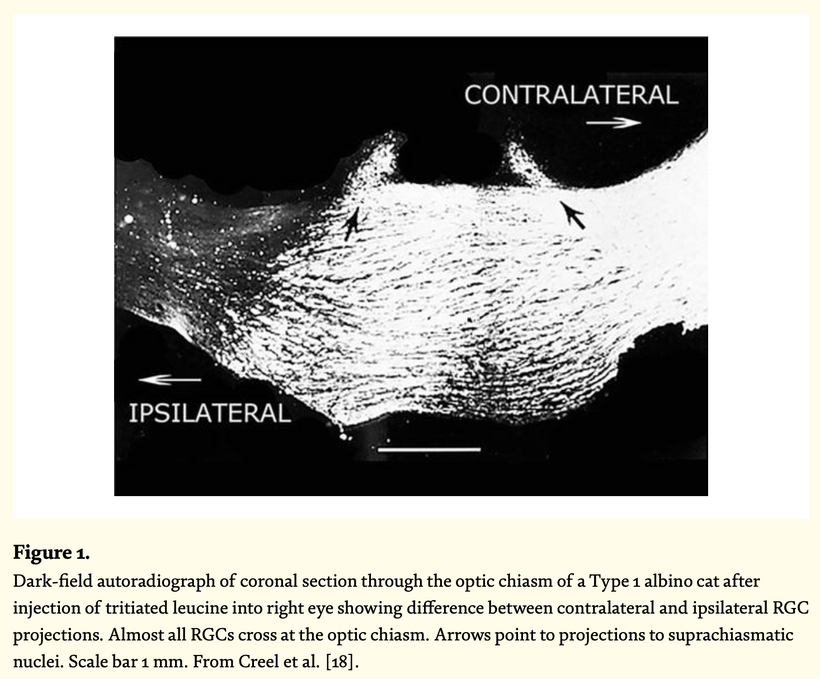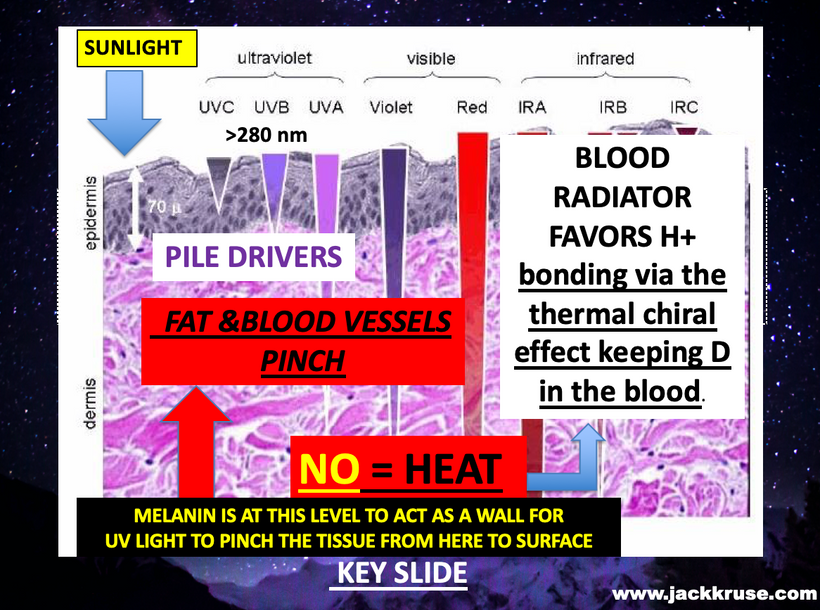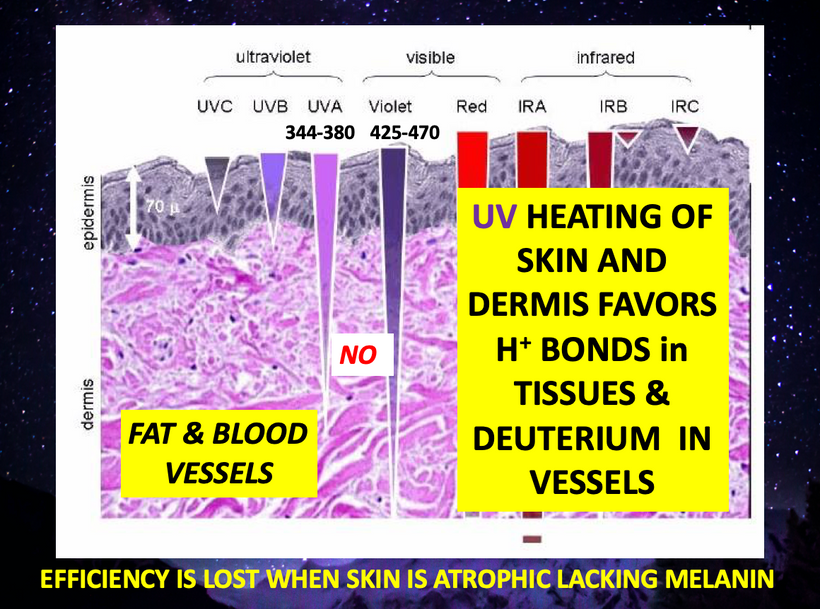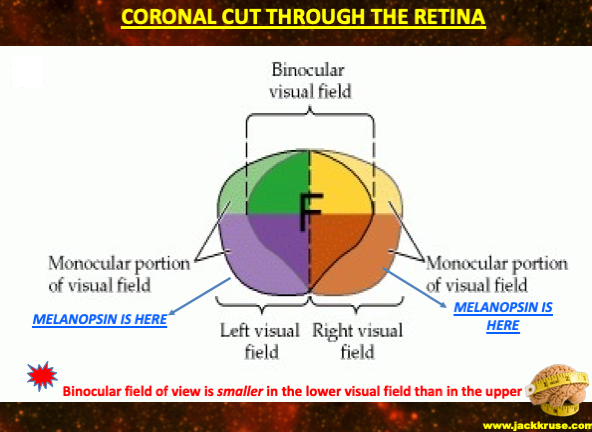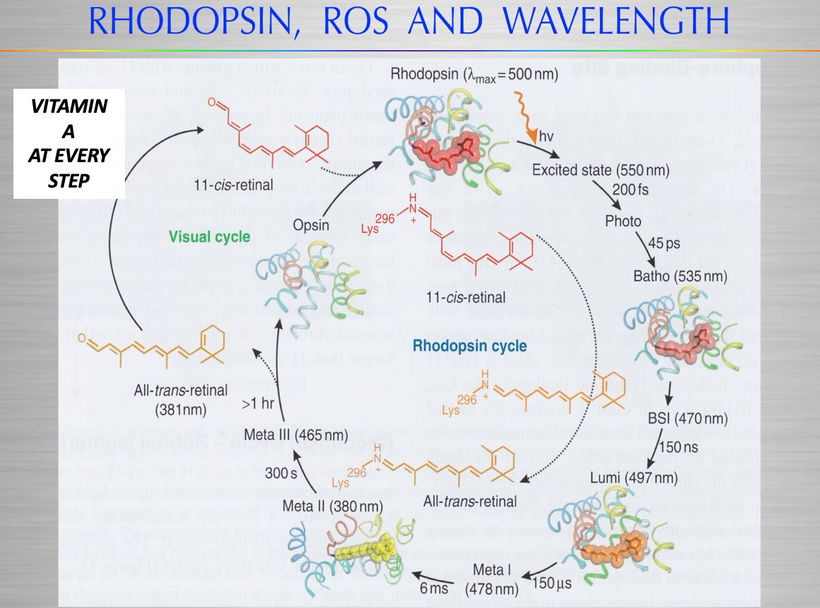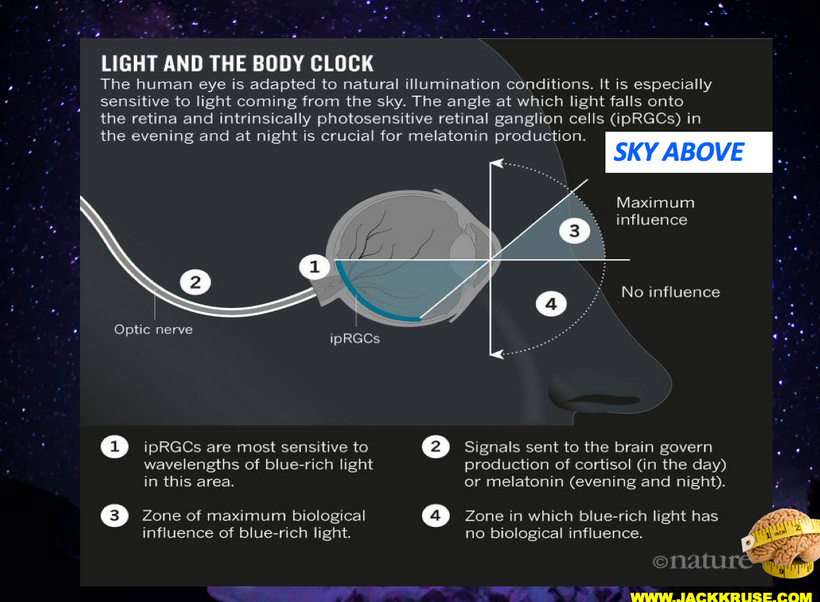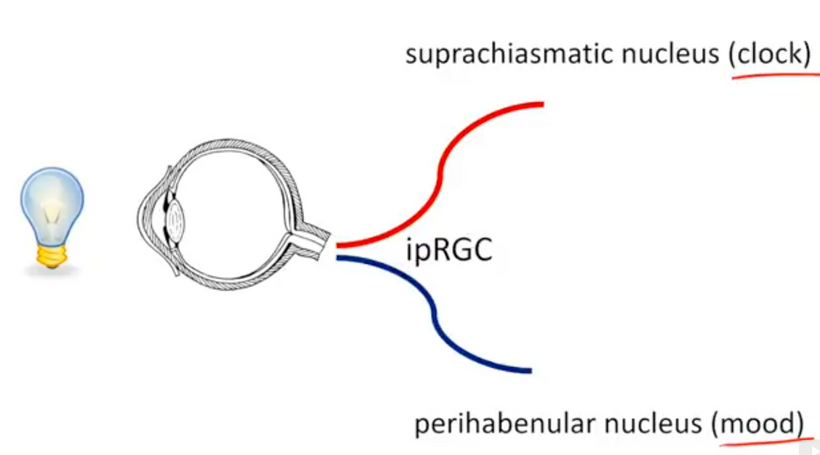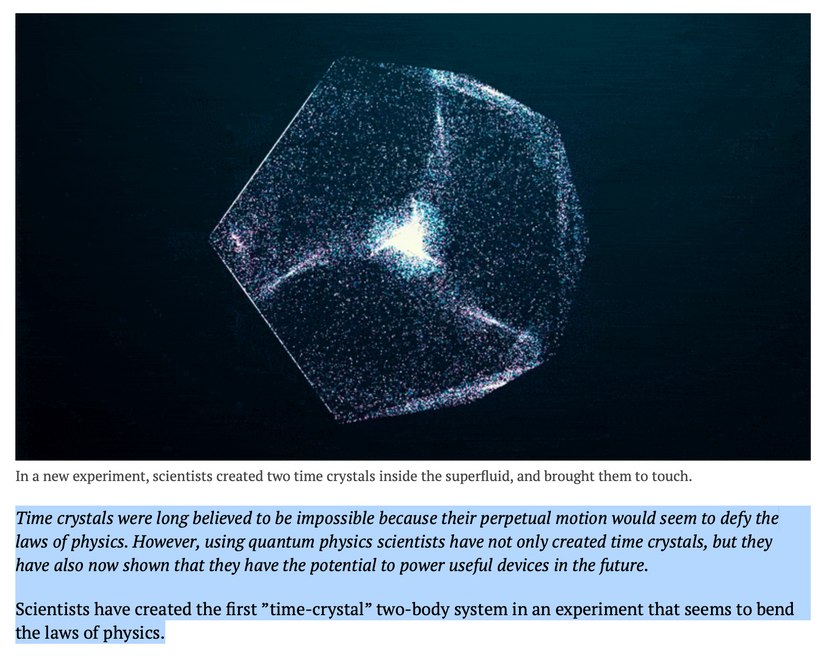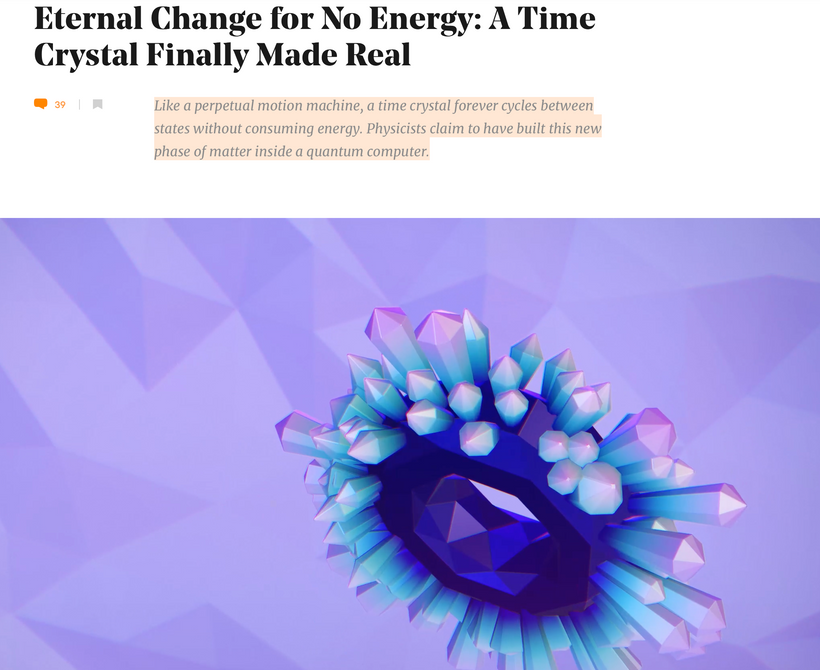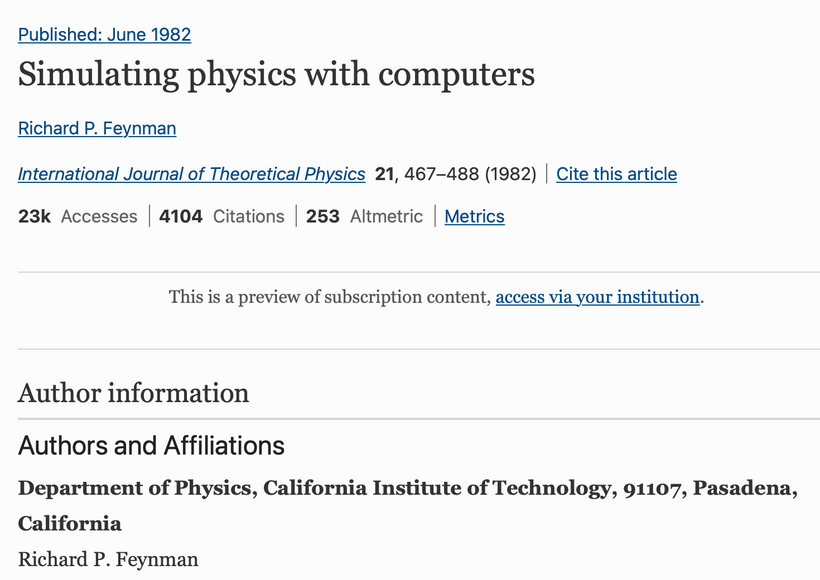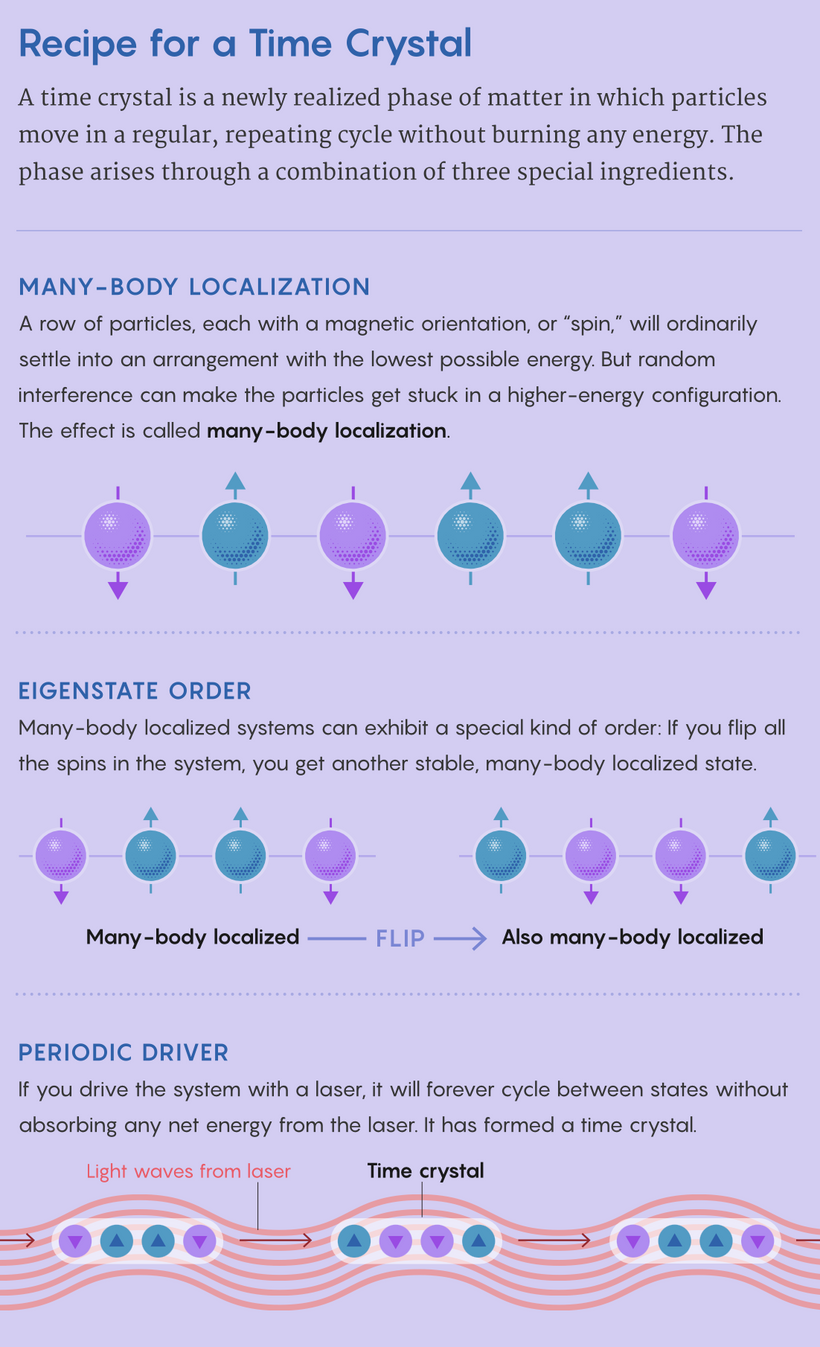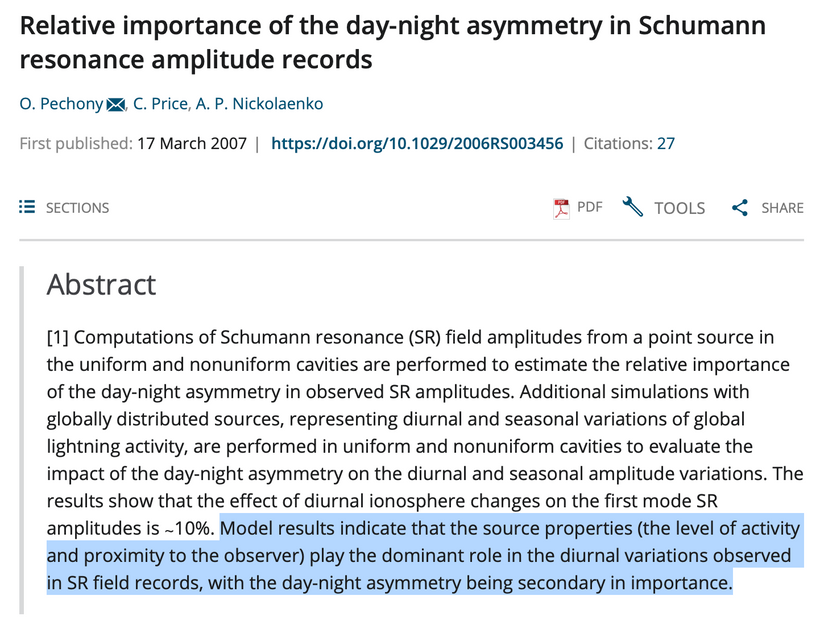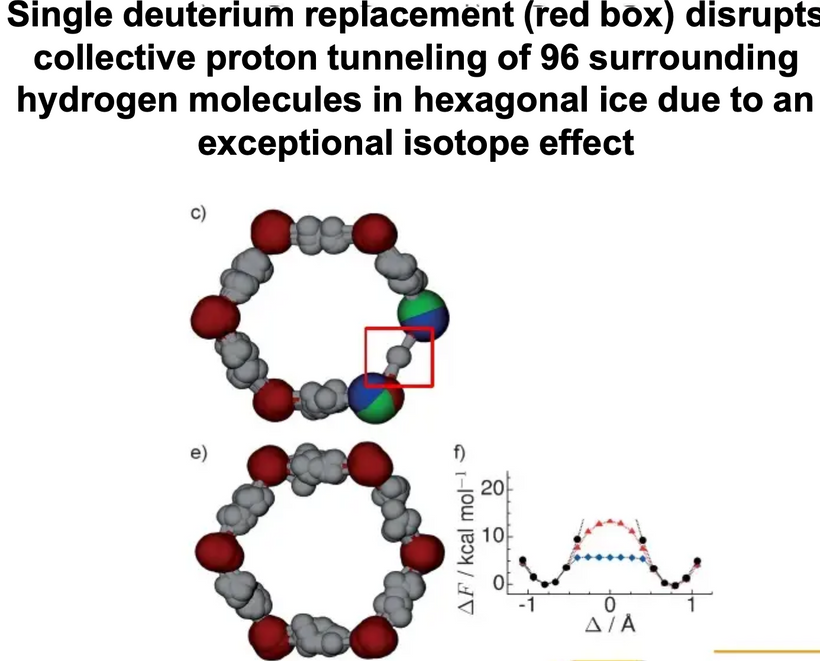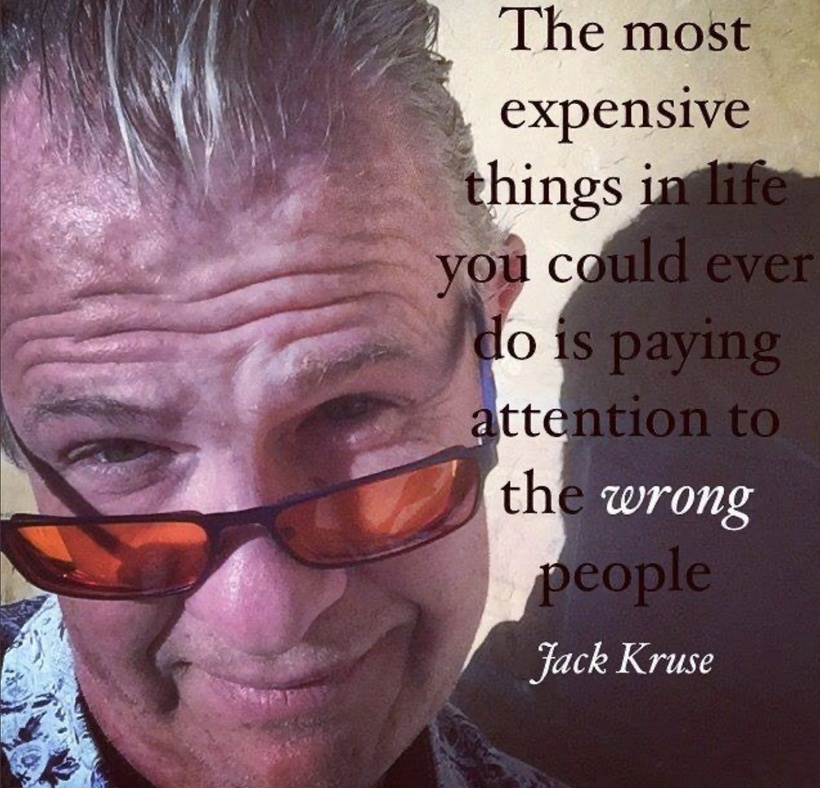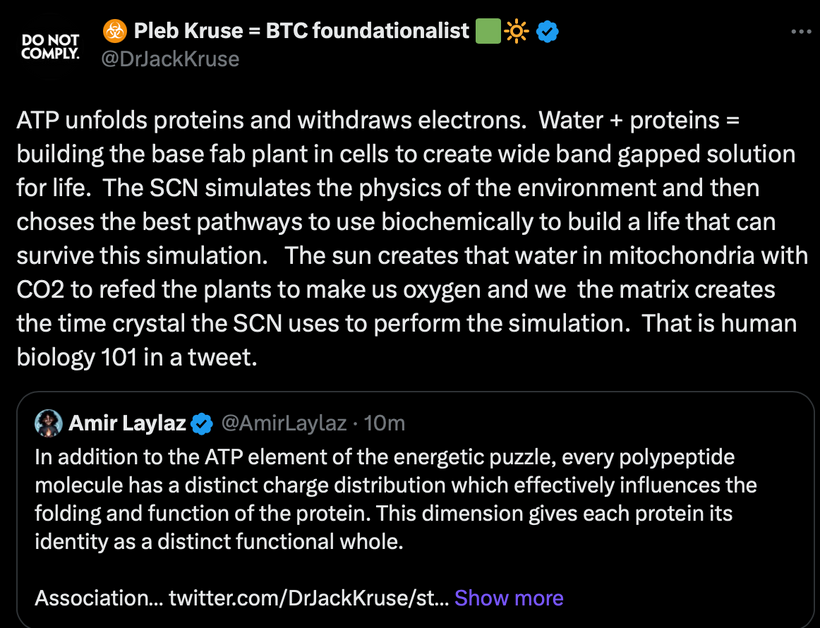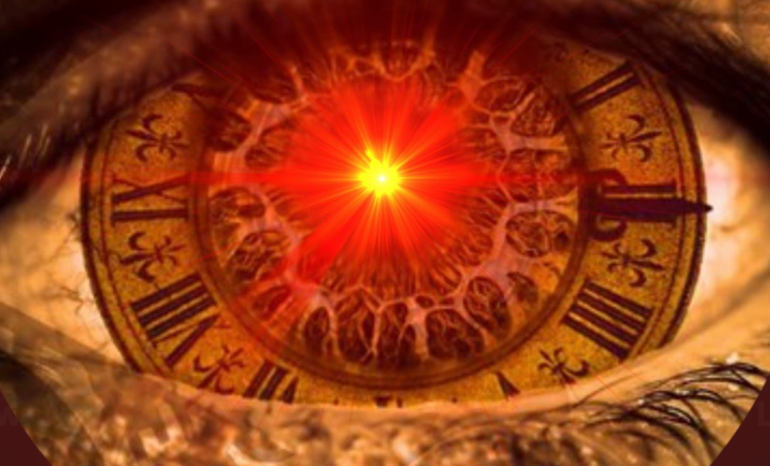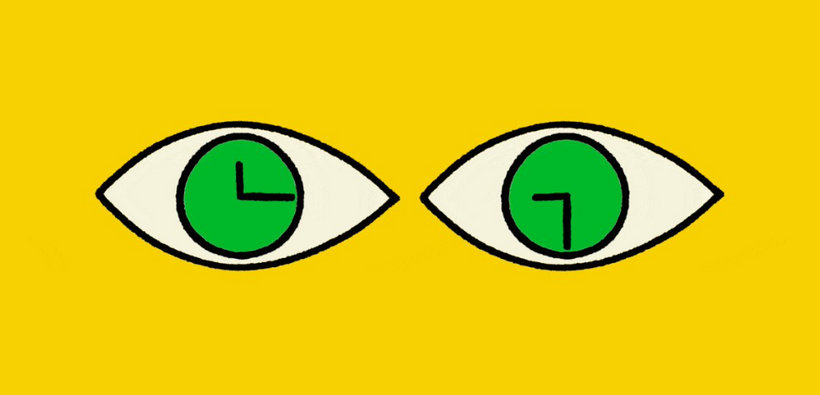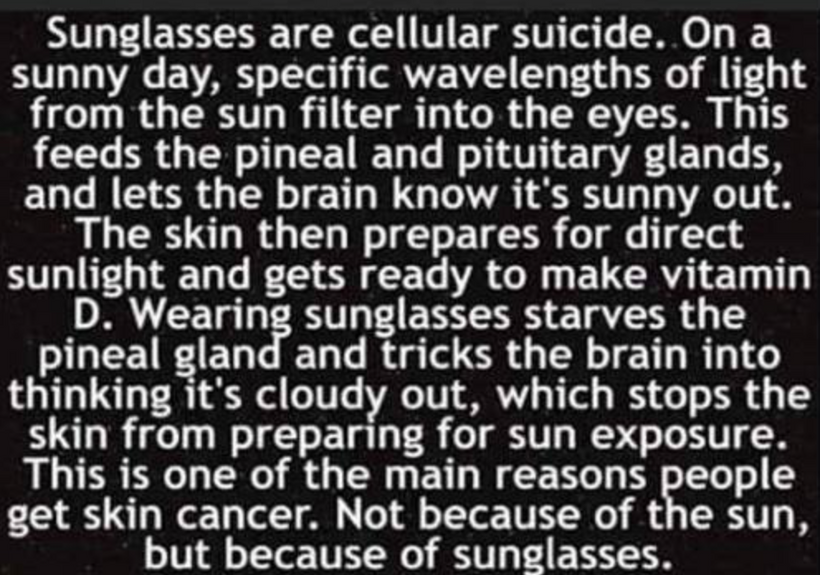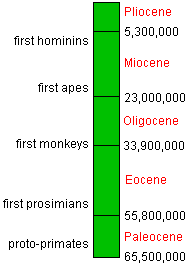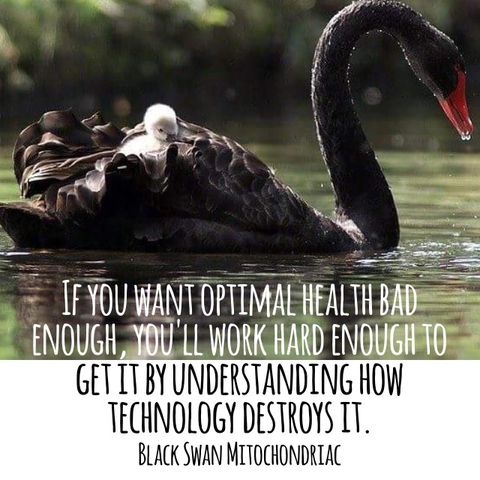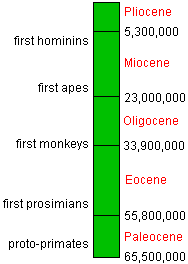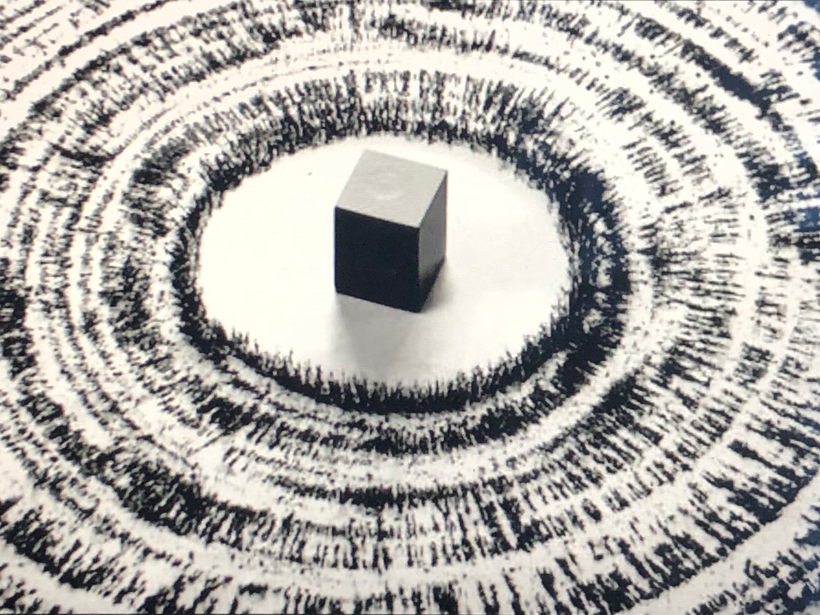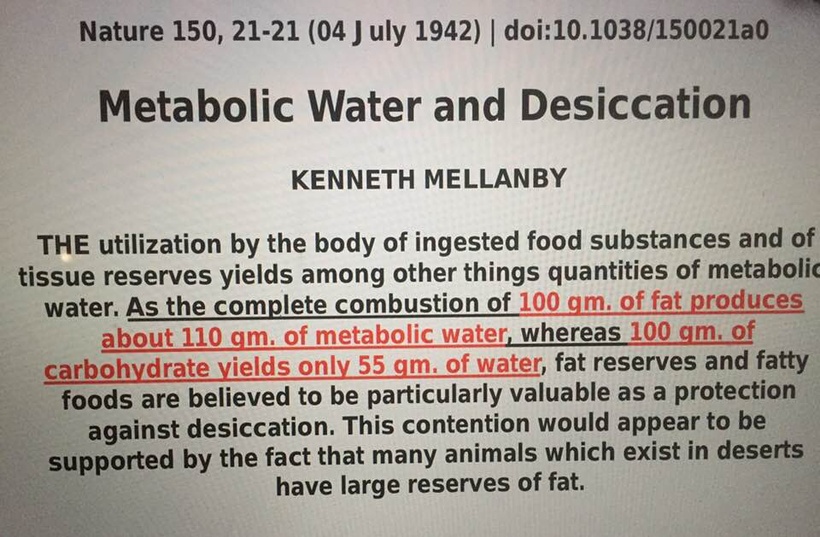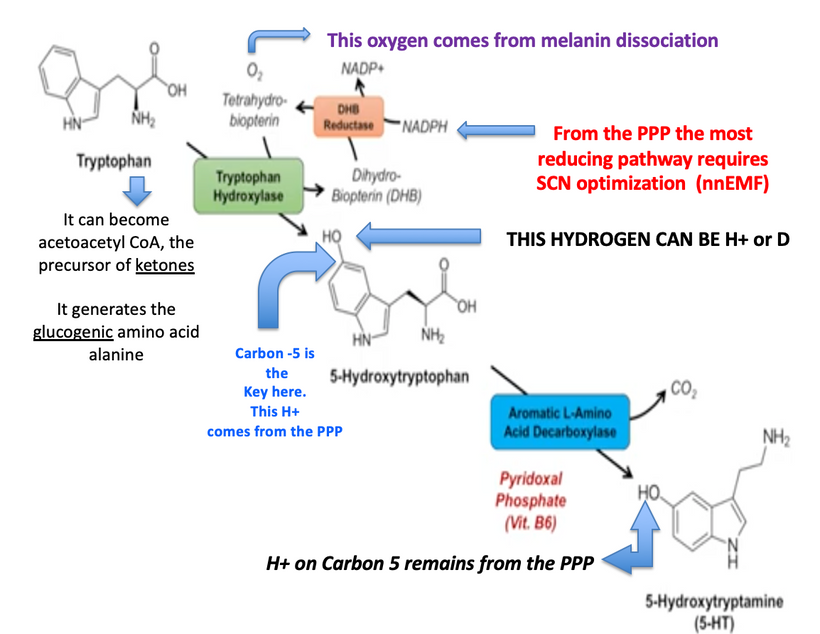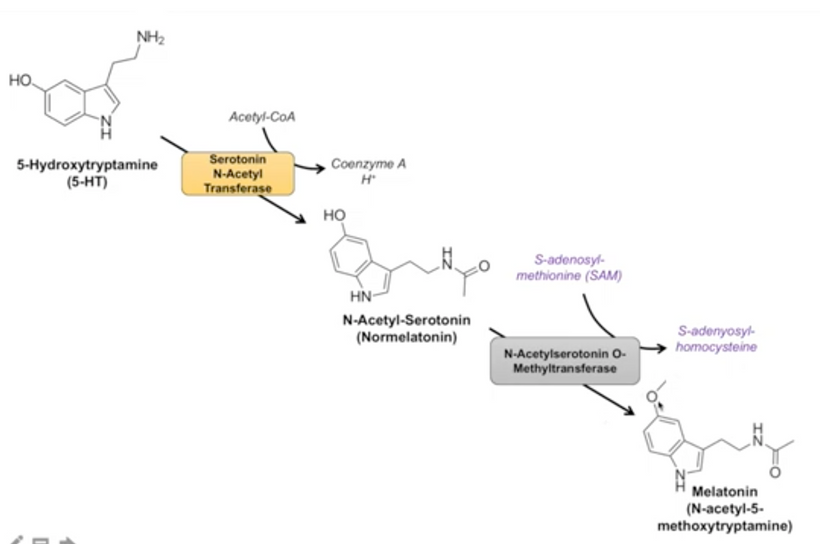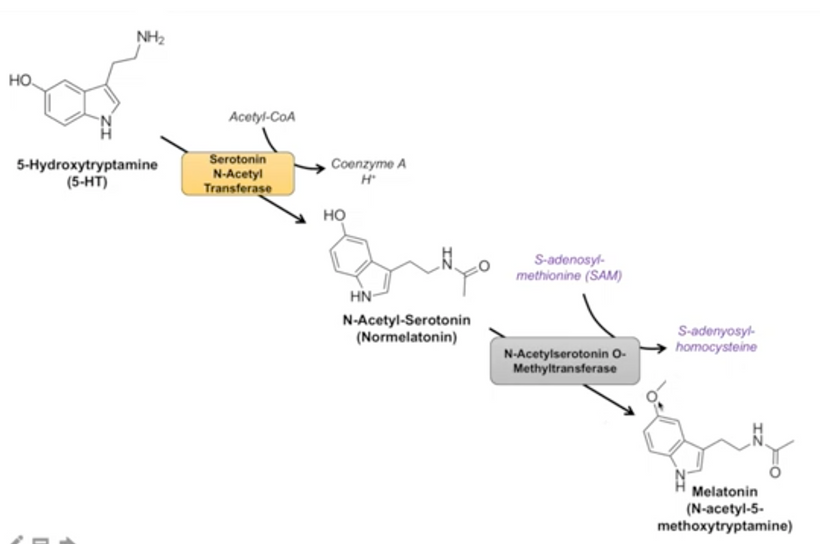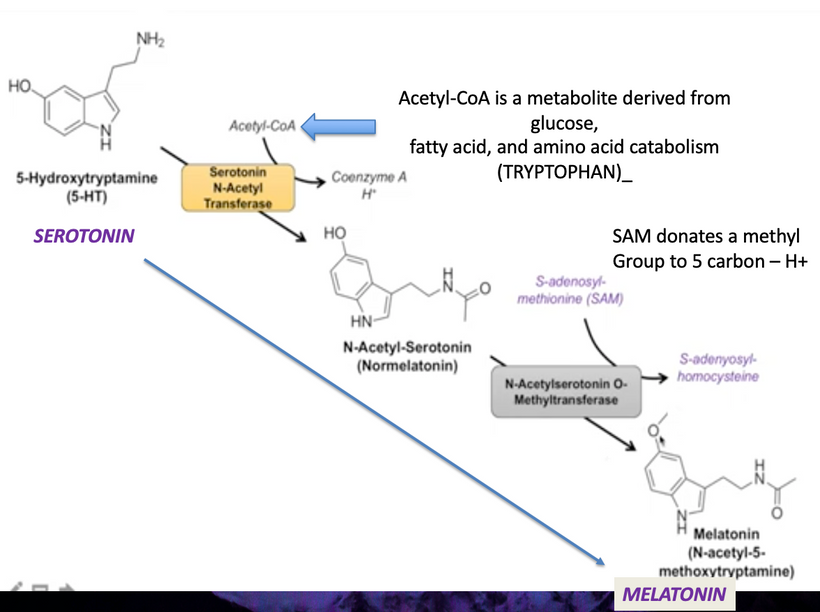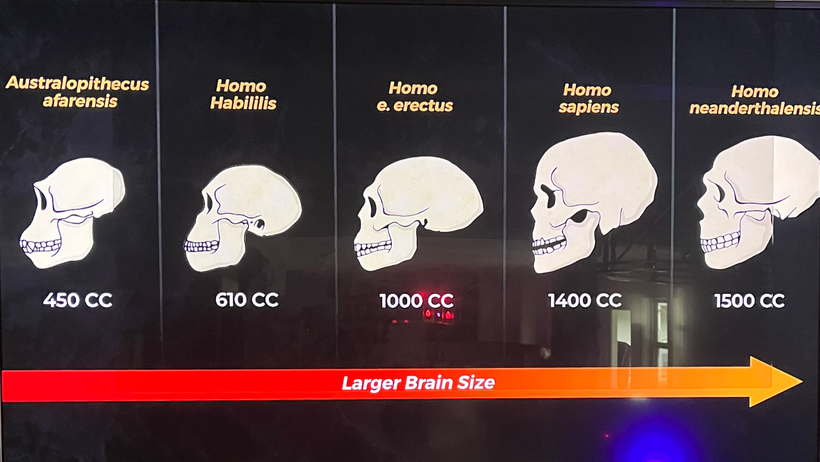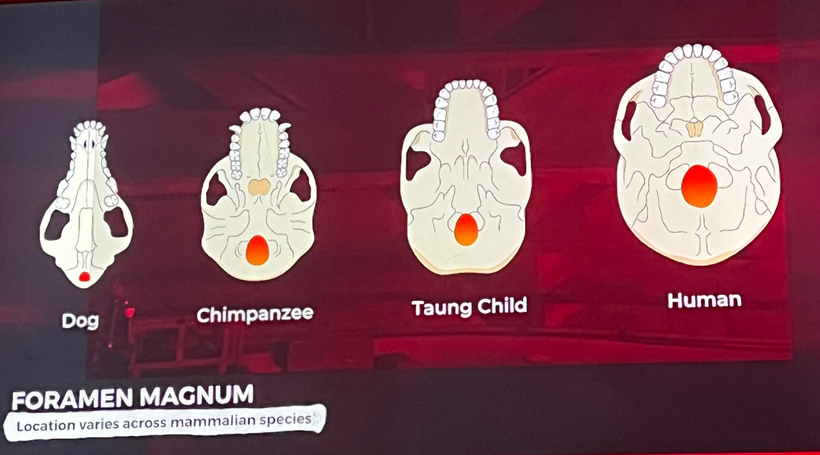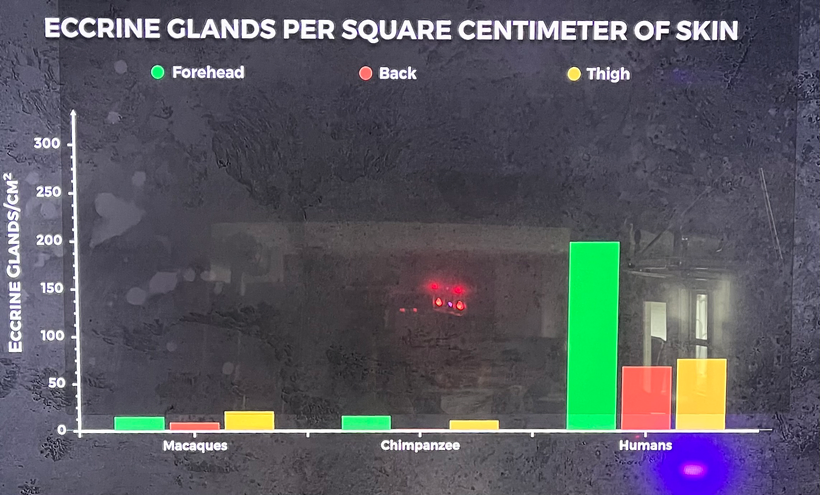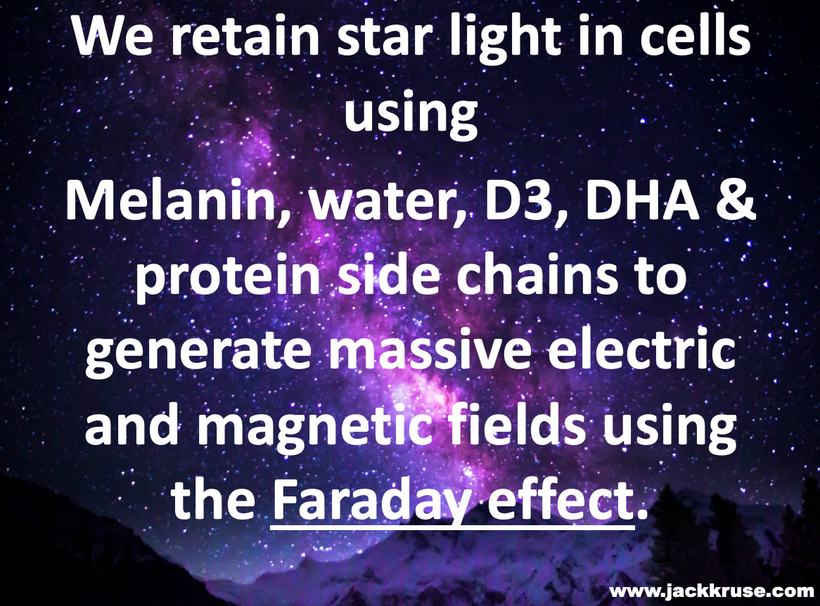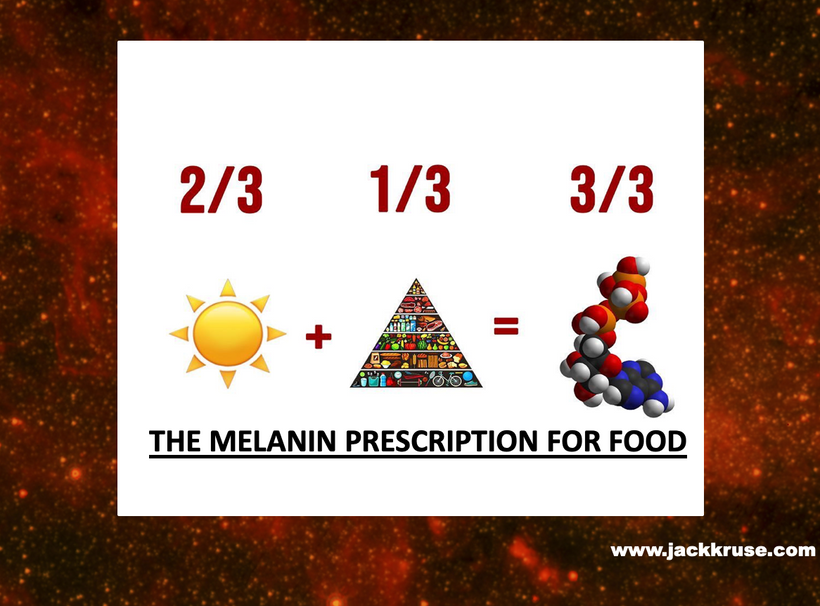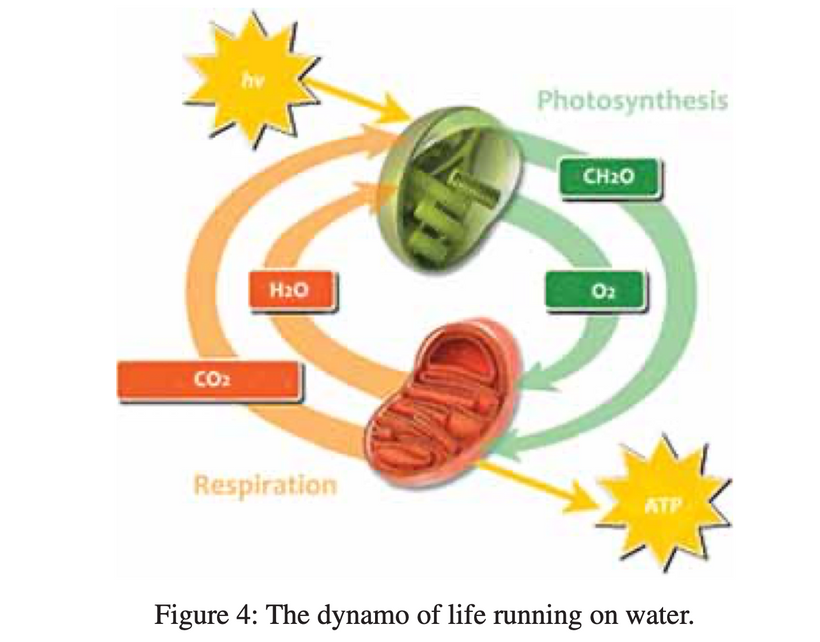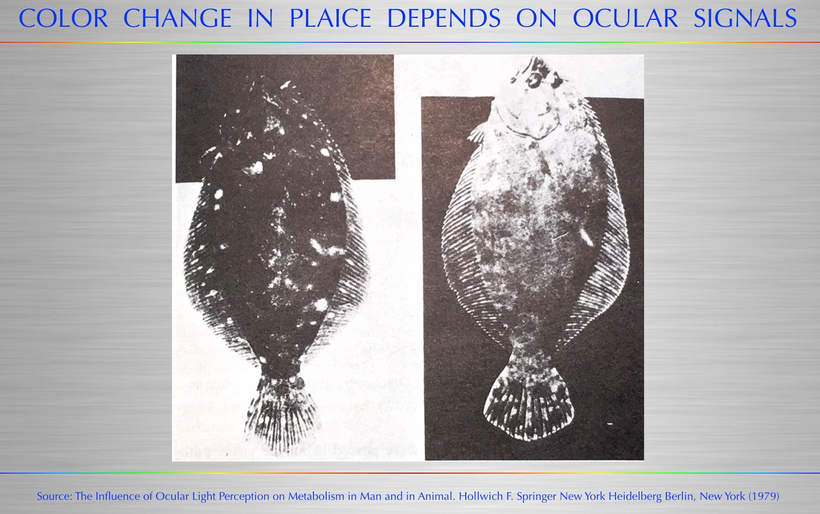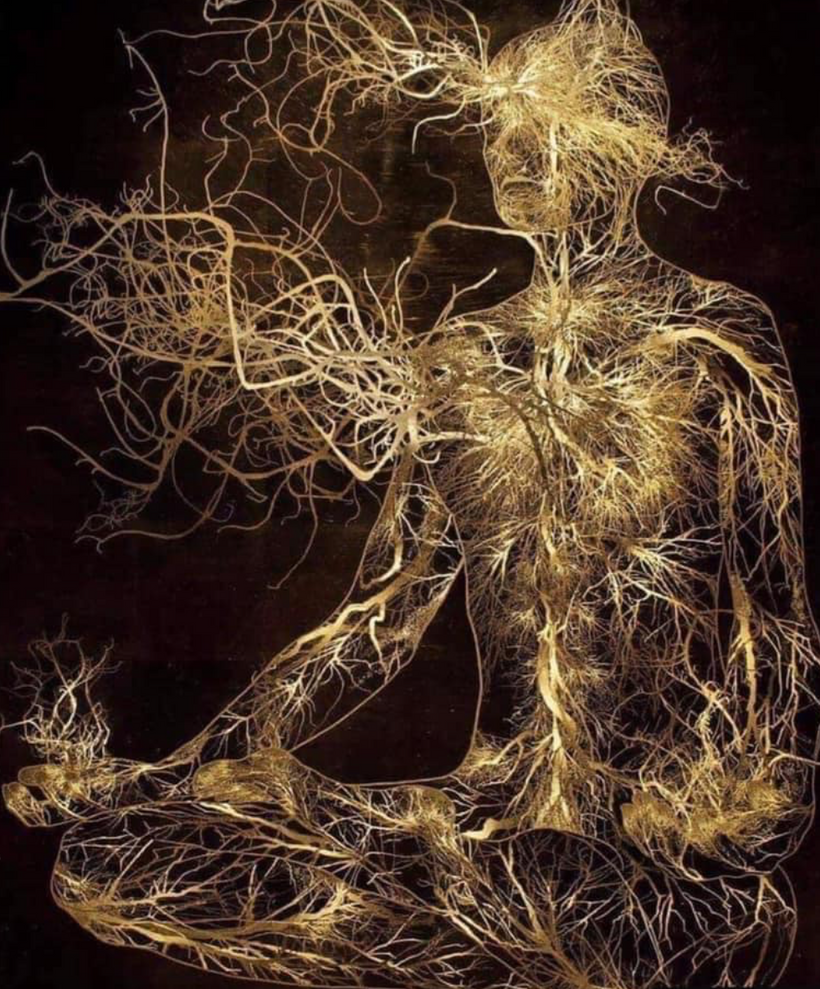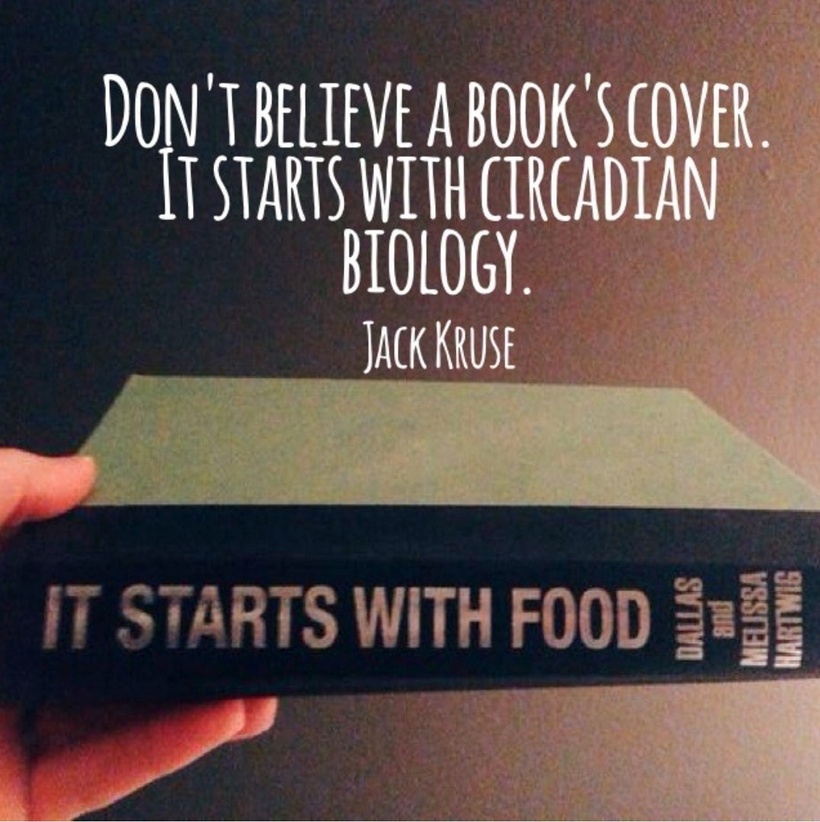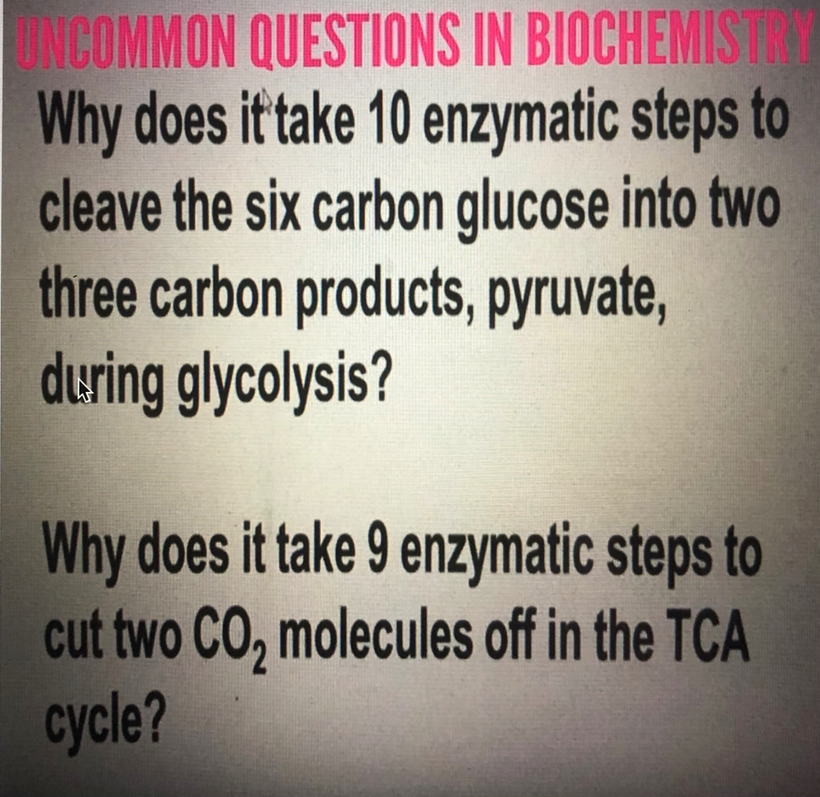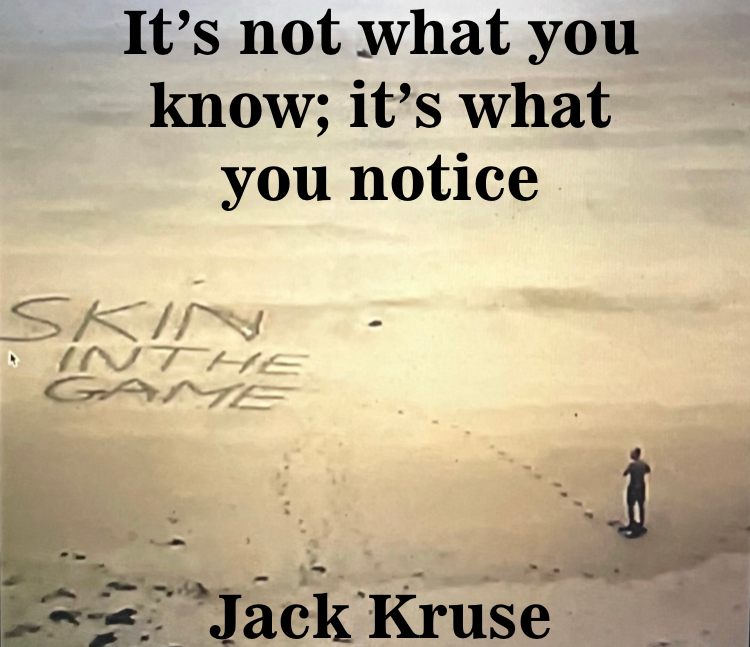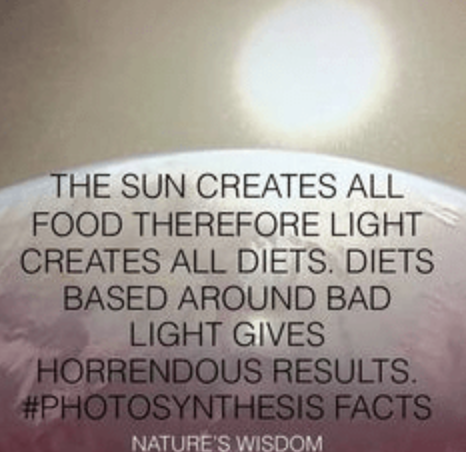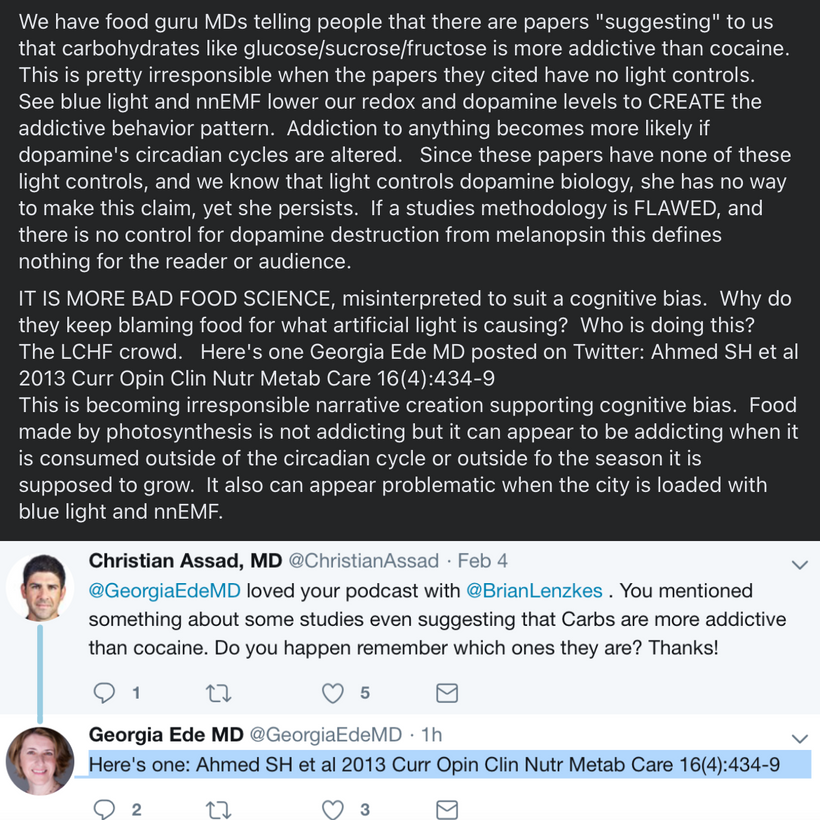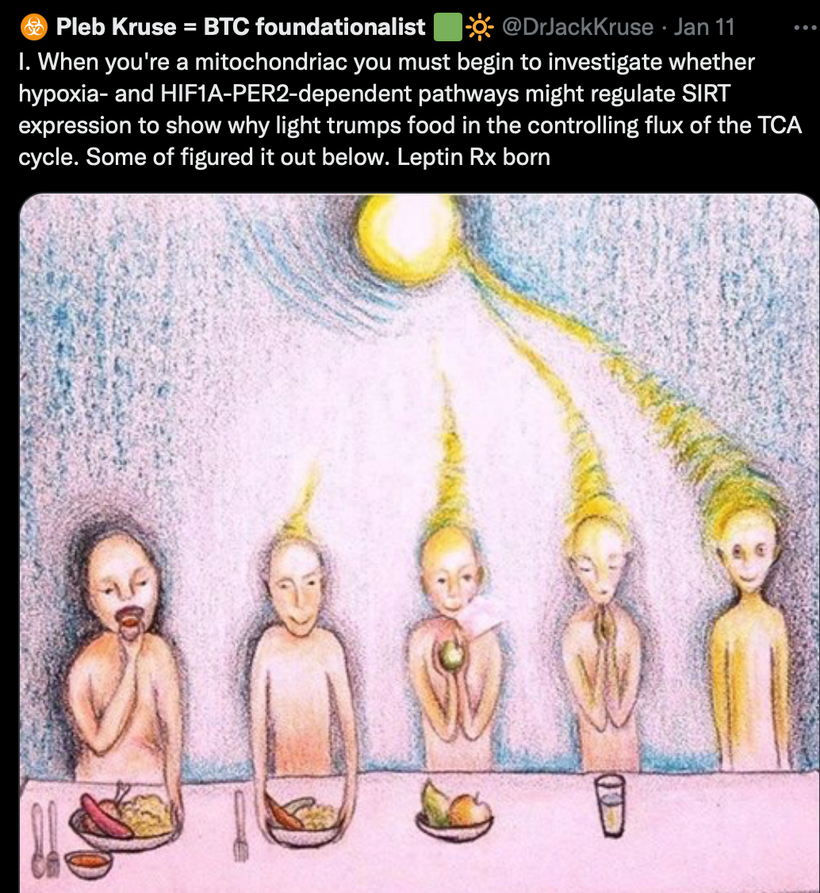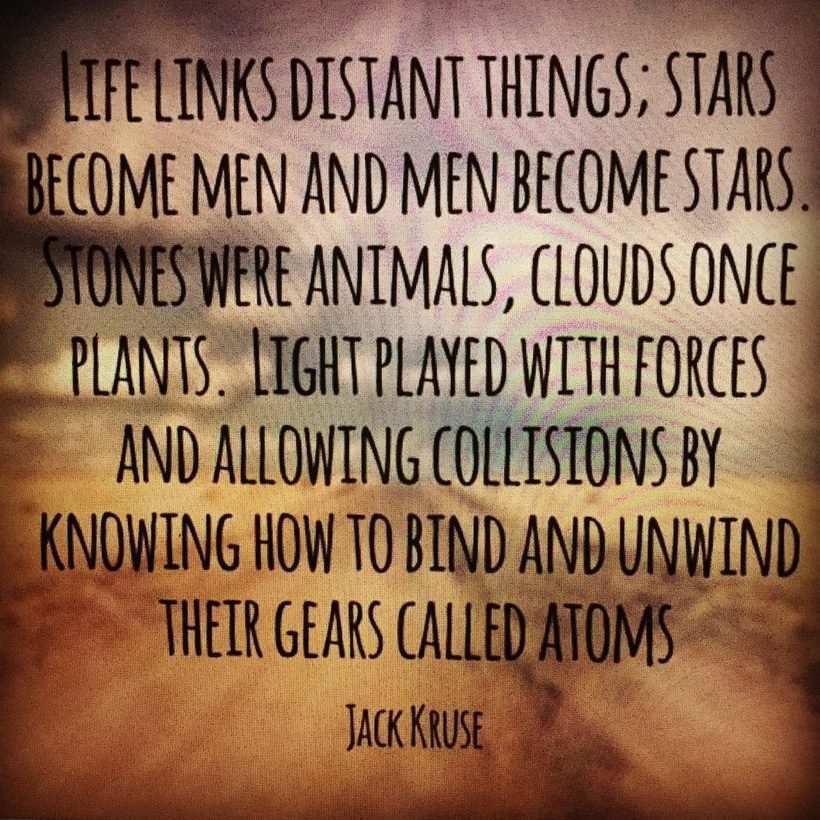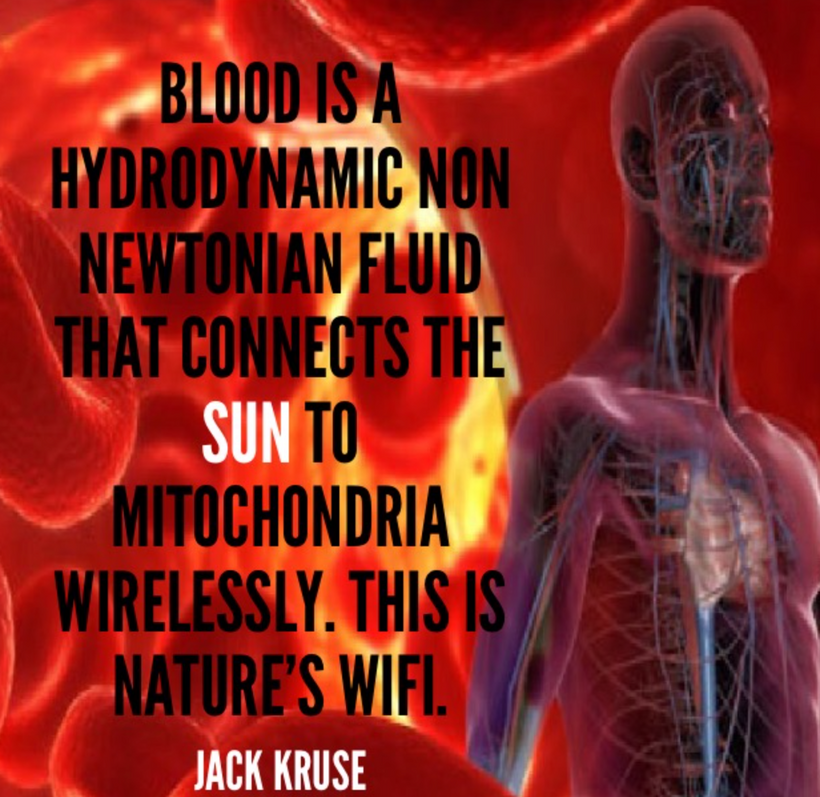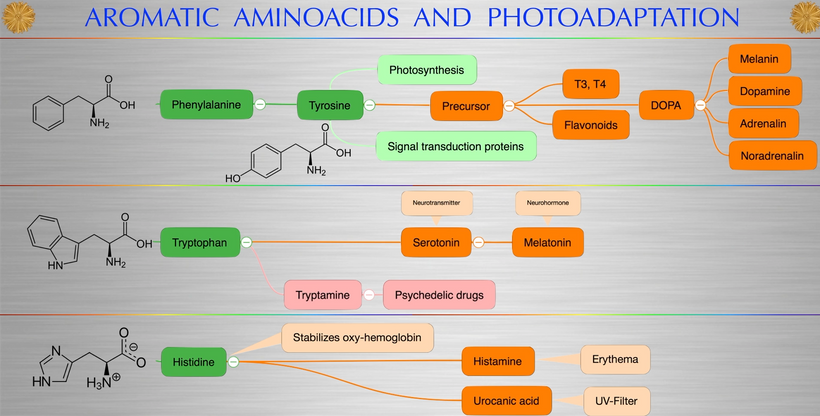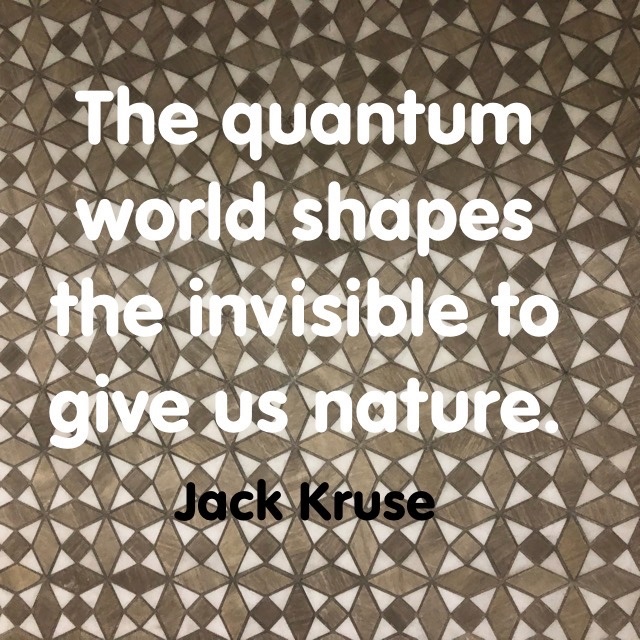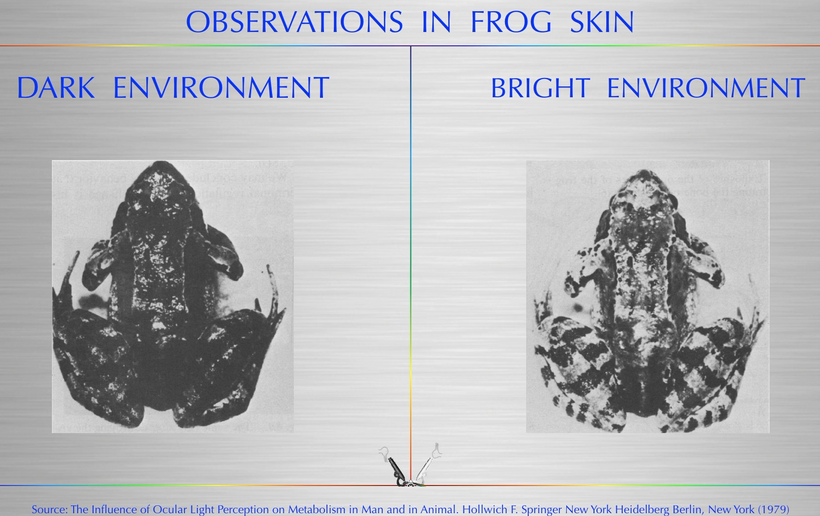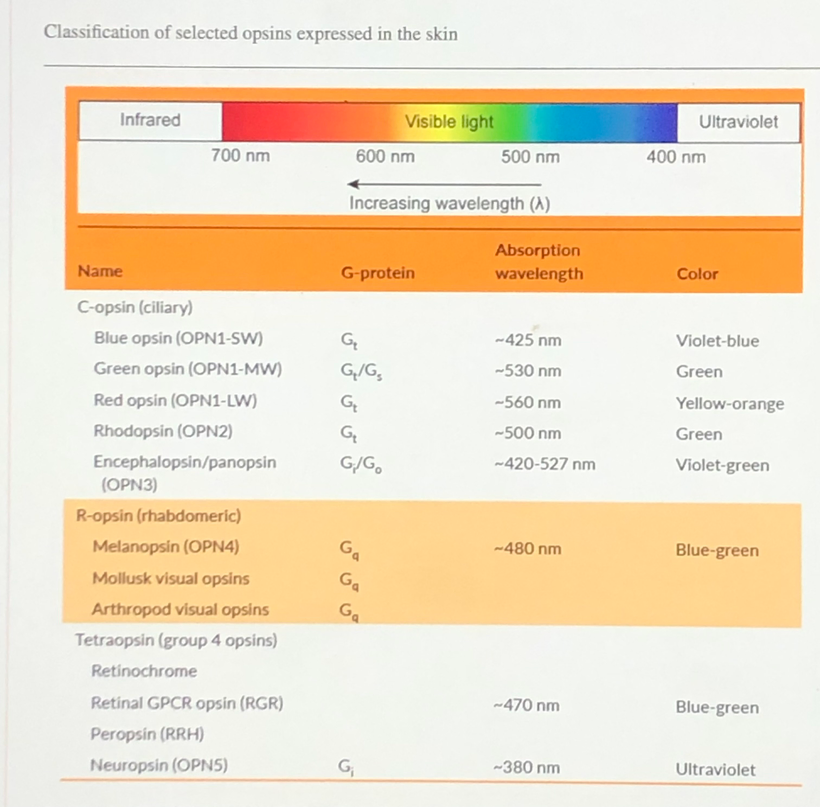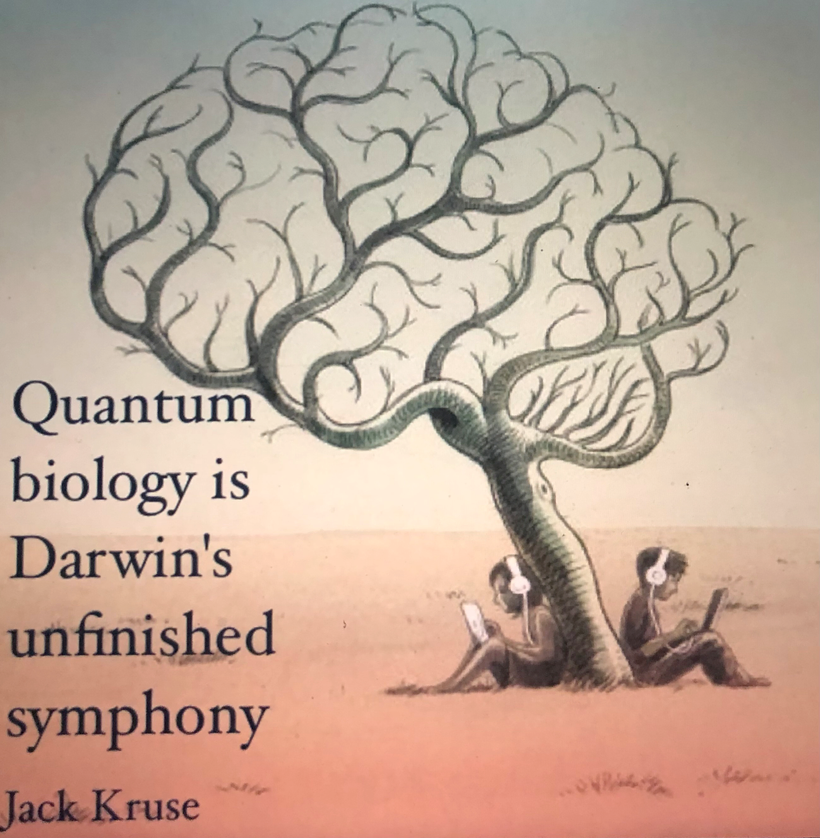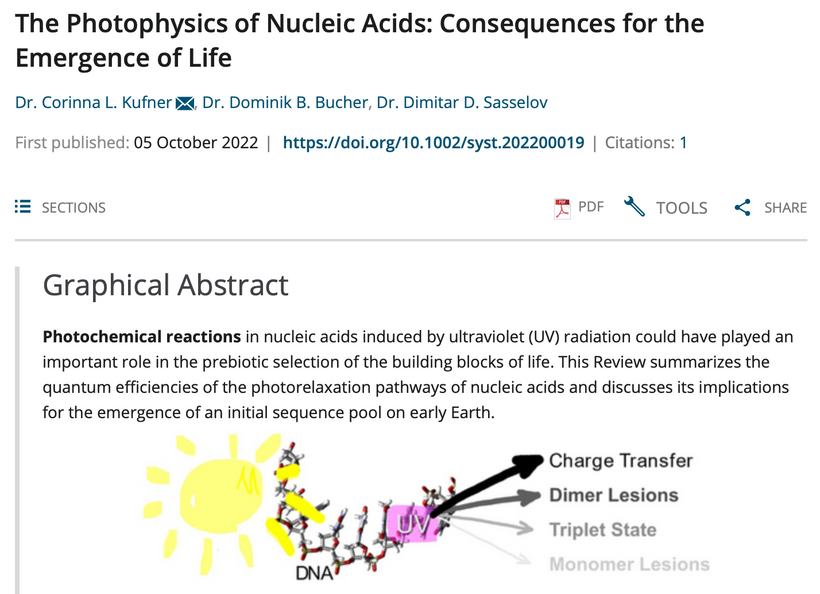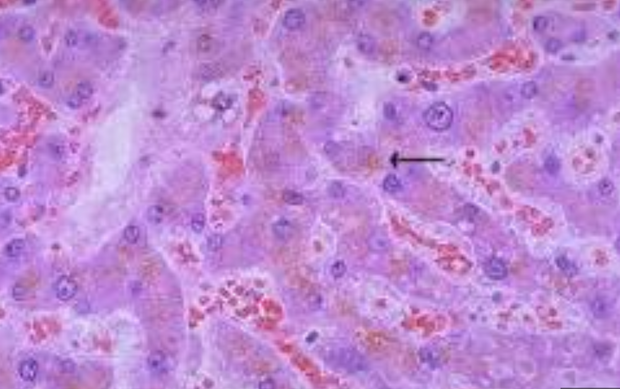
The neural retina is considered to be an extension of the central nervous system and has several features in common with the brain. The neural retina is similarly sensitive to degenerative processes, in which the closely adjacent retinal pigment epithelium (RPE) which contains melanin plays a key role in normal and abnormal physiology. There are various forms of degenerative processes, including one of the leading causes of visual impairment, age-related macular degeneration (AMD). The molecular mechanisms of AMD are continuously being elucidated, with a focus on oxidative stress due to the lack of melanin in tissues. Natural melanin is known to protect the skin from ultraviolet (UV) irradiation. This is in large part attributed to its surface quinone residues that can efficiently scavenge all free radicals. Mitochondrial oxidative stress is believed to be a contributing factor in the etiology of numerous neuronal disorders. However, the precise mechanism(s) by which mitochondrial reactive oxygen species (ROS) modify cellular targets to induce the death of neurons remains unknown.
Melanin is known to be the highest-quality scavenger of ROS and RNS in humans. Melanin is also paramagnetic and this makes it sensitive to the magnetic fields created by the spinning F0 head of the ATPase.
When we lose RPE tissue from donors with Acute Macular Degeneration we find that they all exhibit REDUCED mitochondrial redox power and glycolytic function compared with healthy donors. Recall that mitochondria make the majority of melatonin used to regenerate photoreceptors. Dopamine is the other chemical used in photoreceptor regeneration. It can be made directly from melanin. (See pic below) One should look at the top row in the slide below and realize that the eye is to the left of the aromatic amino acids and the brain side of the flow chart to the right side. Dopamine can be made directly from DOPA or melanin in the retina/brain when hypoxia is present. The topline of this slide below can go from left to right with higher oxygen tensions (UV light present) and from right to left when pseudohypoxia (low NAD+/high lactate/ low thiamine or pyruvate) is present in the mitochondria of the tissue in question.
The mitochondria are a major source of ROS where an estimated 0.4–1% of total oxygen consumed in this vital organelle is reduced to O2 . − (superoxide radical)
From a pool of RPEs from AMD donors, their tissues were found to be MORE resistant to oxidative inactivation of the (TCA/glycolysis) two energy-producing pathways and were less susceptible to oxidation-induced cell death compared with cells from healthy donors. Investigation of the potential mechanism responsible for differences in bioenergetics and resistance to oxidative stress showed RPE from AMD donors had increased PGC1α protein expression as well as differential expression of multiple genes in response to an oxidative challenge.
These findings seem like a paradox to most of the beliefs flying around neurodegeneration and retinal pathology. It raises the question what is oxidative inactivation?
In eukaryotes, two isozymes of aconitase exist; one localized to the matrix of the mitochondria and the other in the cytosol (also known as iron regulatory protein 1). M-aconitase catalyzes the reversible isomerization of citrate and isocitrate via its intermediate form, cis-aconitate, in the tricarboxylic acid (TCA) cycle. Because of m-aconitase’s unique [4Fe-4S]2+cluster which contains a labile iron atom, and its proximity to mitochondrially generated ROS, it is an ideal candidate for oxidative inactivation. Indeed several neurodegenerative diseases in which oxidative stress has been implicated, as well as in vivo and in vitro models of these disorders collectively demonstrate decreased aconitase activity
- Retinal Pigment Epithelium (RPE) is fully loaded with melanin and located under photoreceptors’ outer segments and plays an important role in the maintenance of photoreceptors by completing the visual cycle and phagocytosis of shed photoreceptor outer segments. Lipofuscin is a NATURAL byproduct of the visual cycle, and it is currently believed to be a nondegradable compound that accumulates in the RPE cells and eventually damages the RPE cells and inevitably causes photoreceptor degeneration. Vitamin A has an absorption spectrum of 328 nm. This is UVB light. Vitamin A is the only Vitamin known to emit light. The emission of light is called fluorescence when absorbed light of a short wavelength and emitting light has a longer wavelength.
- Lipofuscin is the major cause of fundus fluorescence that can be detected by Fundus Autofluorescent (FAF) imaging systems.
The neural retina is the light-sensitive tissue of the eye. It consists of several layers of neurons interconnected by synapses. The primary light-sensing cells in the retina are photoreceptor cells, rods, and cones. The RPE is the pigmented single-cell layer located right behind the retina, firmly attached to the underlying choroid and in close contact with photoreceptor cells. The RPE (below) has several crucial functions for vision, namely, scattered light absorption, epithelial transport, spatial ion buffering, visual cycle, phagocytosis of outer segment photoreceptor membranes, secretion, and immune modulation.
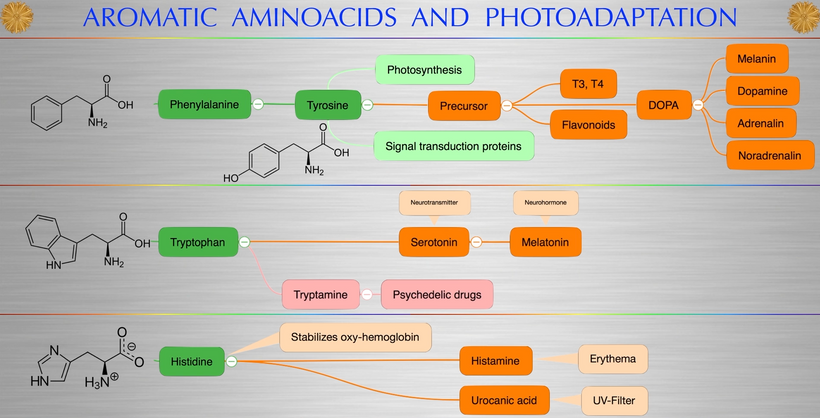
The mitochondria are a major source of ROS where an estimated 0.4–1% of total oxygen consumed in this vital organelle is reduced to O2 . − (superoxide radical)
From a pool of RPEs from AMD donors, their tissues were found to be MORE resistant to oxidative inactivation of the (TCA/glycolysis) two energy-producing pathways and were less susceptible to oxidation-induced cell death compared with cells from healthy donors. Investigation of the potential mechanism responsible for differences in bioenergetics and resistance to oxidative stress showed RPE from AMD donors had increased PGC1α protein expression as well as differential expression of multiple genes in response to an oxidative challenge.
These findings seem like a paradox to most of the beliefs flying around neurodegeneration and retinal pathology. It raises the question what is oxidative inactivation?
In eukaryotes, two isozymes of aconitase exist; one localized to the matrix of the mitochondria and the other in the cytosol (also known as iron regulatory protein 1). M-aconitase catalyzes the reversible isomerization of citrate and isocitrate via its intermediate form, cis-aconitate, in the tricarboxylic acid (TCA) cycle. Because of m-aconitase’s unique [4Fe-4S]2+cluster which contains a labile iron atom, and its proximity to mitochondrially generated ROS, it is an ideal candidate for oxidative inactivation. Indeed several neurodegenerative diseases in which oxidative stress has been implicated, as well as in vivo and in vitro models of these disorders collectively demonstrate decreased aconitase activity
- Retinal Pigment Epithelium (RPE) is fully loaded with melanin and located under photoreceptors’ outer segments and plays an important role in the maintenance of photoreceptors by completing the visual cycle and phagocytosis of shed photoreceptor outer segments. Lipofuscin is a NATURAL byproduct of the visual cycle, and it is currently believed to be a nondegradable compound that accumulates in the RPE cells and eventually damages the RPE cells and inevitably causes photoreceptor degeneration. Vitamin A has an absorption spectrum of 328 nm. This is UVB light. Vitamin A is the only Vitamin known to emit light. The emission of light is called fluorescence when absorbed light of a short wavelength and emitting light has a longer wavelength.
- Lipofuscin is the major cause of fundus fluorescence that can be detected by Fundus Autofluorescent (FAF) imaging systems.
The neural retina is the light-sensitive tissue of the eye. It consists of several layers of neurons interconnected by synapses. The primary light-sensing cells in the retina are photoreceptor cells, rods, and cones. The RPE is the pigmented single-cell layer located right behind the retina, firmly attached to the underlying choroid and in close contact with photoreceptor cells. The RPE (below) has several crucial functions for vision, namely, scattered light absorption, epithelial transport, spatial ion buffering, visual cycle, phagocytosis of outer segment photoreceptor membranes, secretion, and immune modulation.
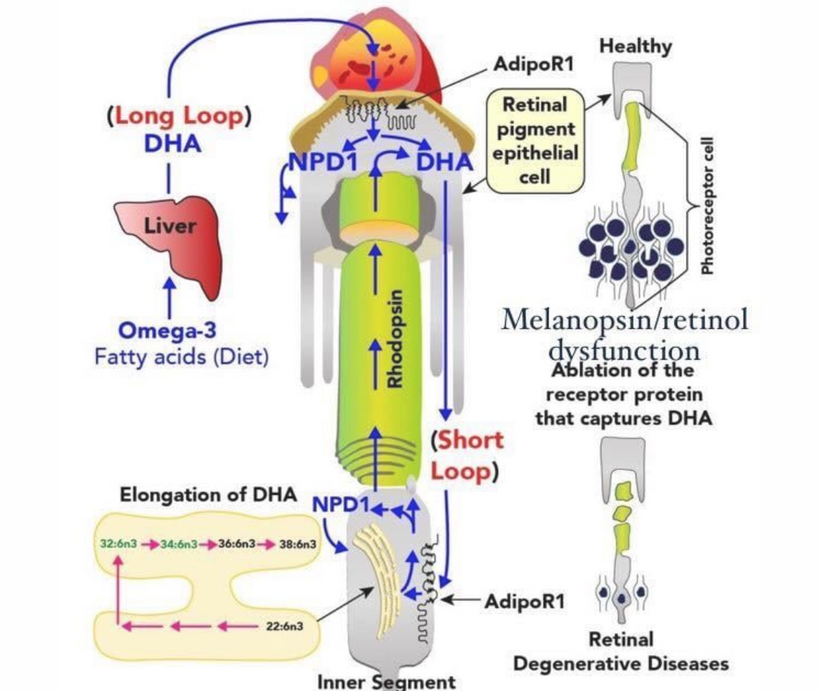
With exposure to light, during rhodopsin photolysis, toxic retinoid side products (Vitamin A) can be produced in photoreceptor cells. Biogenesis of these products occurs when two molecules of all-trans-retinal condense with one molecule of phosphatidylethanolamine in the photoreceptor membrane.
Evolution has developed a powerful mechanism that prevents the accumulation of retinoid side products in terminally differentiated photoreceptor cells. Throughout life, the debris of the photoreceptor outer segment (POS) apical part is phagocytized and digested by RPE cells (above), while new photoreceptor discs with rhodopsin molecules are synthesized by the photoreceptor inner segments. However, the lysosomal enzyme system of the RPE cell is not effective in the degrading of POS debris, because the latter is supposed to contain modified retinoid side products of rhodopsin photolysis, as well as modified lipids and proteins.
In other words, the lysosomal enzyme system of the RPE cell cannot recognize such modified molecules and does not digest them. As a consequence, lipofuscin granules (LGs), containing retinoid derivatives, are formed and accumulated in RPE cells with age. They have been long believed to be just a cell metabolism by-product. However, it has been established that LGs are one of the sources of reactive oxygen species (ROS) in RPE cells. This explains why melanin is the most prominent protein in the RPE because it handles the ROS/RNS from the LGs with ease. If melanin is not present or degraded then lipofuscin becomes a problem. Visible light exposure induces ROS formation in LGs, initiating oxidative stress in RPE cells. Oxidative stress is believed to be central to the development of AMD. The quantum biologic reality is quite different. If melanin is not present then and only then is ROS/RNS/ and lipofuscin a problem because it also consumes surrounding DHA that is needed in the repair process.Its absence is characterized by an increased level of ROS resulting in damage or modification of cellular proteins, lipids, and DNA, impairing their physiological functions. Therefore, the development of AMD is associated with the progressive accumulation of lipofuscin.
Lipofuscin is a pigmented, heterogenous byproduct of failed intracellular catabolism conventionally found within lysosomes or the cytosol of aging post-mitotic cells. Numerous studies indicate that the formation of lipofuscin is due to the oxidative alteration of macromolecules by oxygen-derived free radicals generated in reactions catalyzed by redox-active iron of low molecular weight. This protein usually is found in places where POMC is not turned on by endogenous UV light stimulus and or where melanin is absent and is supposed to be. Melanin is an excellent absorber of free radicals to limit oxidative damage. This changes the optics inside the cells. Melanin is the semiconductive protein that is designed to chelate the iron complexes to clear them. When melanin is degraded or absent this cannot occur.
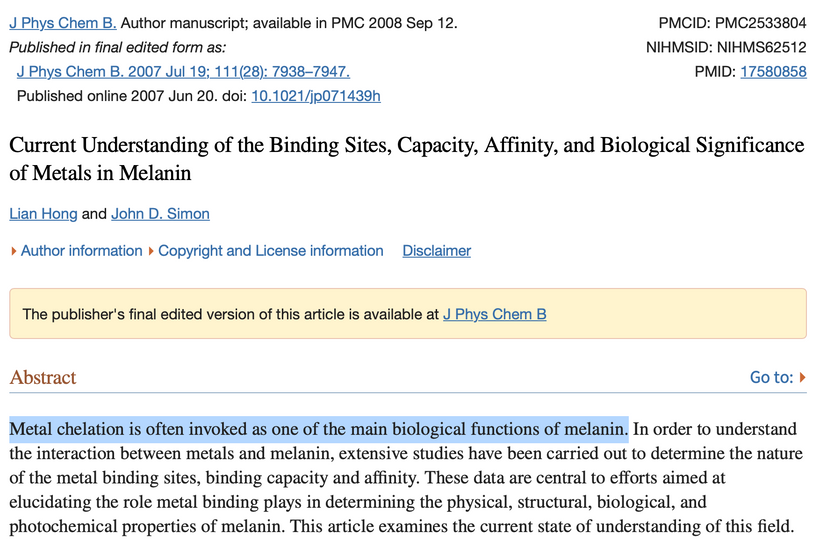
The nature and structure of lipofuscin complexes seem to vary among tissues and show temporal heterogeneity in the composition of oxidized proteins (30–70%), lipids (20–50%), metals cations (Fe3+, Fe2+, Cu2+, Zn2+, Al3+, Mn2+, Ca2+) (2%), and sugar residues (Benavides et al., 2002; Double et al., 2008).
Looking at the retina is the best way to predict the topographic risk of neuronal ceroid lipofuscinosis. Below you can see the lipid deposition in the macula in AMD. This lipid deposition mimics what we see in atherosclerotic plaque formations when there is melanopsin damage, lack of melanin, and/or a lack of ferroelectric currents on the endothelium. In the eye, a lack of the ferroelectric current can occur at multiple locations to cause various diseases associated with lipid accumulation.
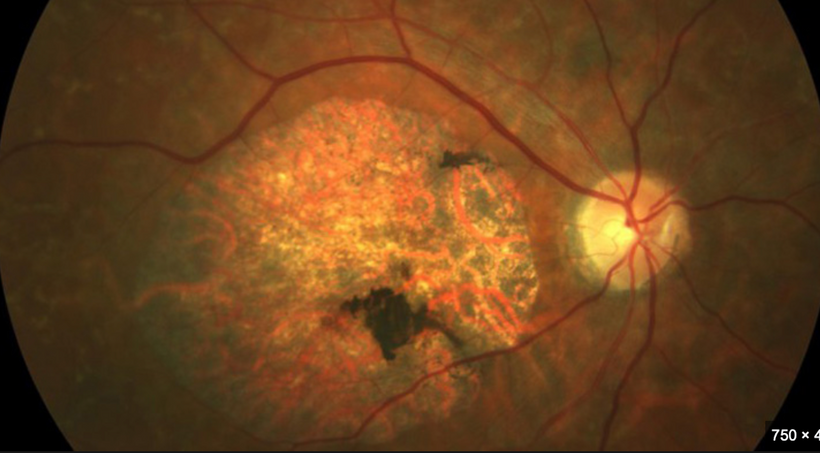
High lipofuscin levels in the RPE have been associated with retinal degeneration and blindness in Stargardt disease patients and animal models. Currently, centralized science believes there is no treatment to prevent and/or revert lipofuscin-driven retinal degenerative changes in humans. This slide and paper below show that with the blue light hazard injury or nnEMF damage to brain tissue LED light can really make a difference.
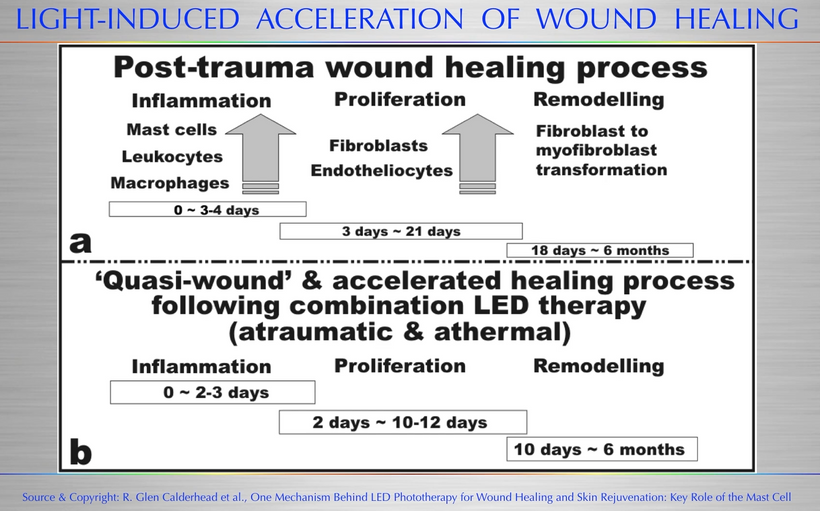
That belief is present because none of them realize a combination of UVA-IR-A light can stimulate POMC to create melanin to clear the iron complexes that are common in this disease.A lack of ATP is a big factor in this disease.
Most modern ophthalmologists are fully unaware that IR-A light can create ATP even when the cellular damage is overwhelming. I found this out in my clinic three years ago with some patients with AMD and bone injuries. I did not know about this issue until that time because I do not treat AMD.
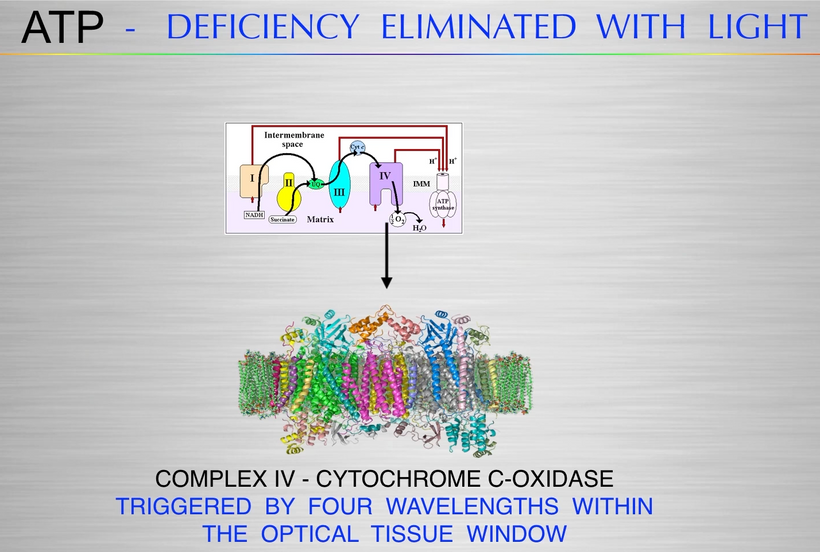
There is also a belief in ophthalmology that there is no way to recover melanin creation in the RPE once humans are born. The use of high intensity IR-A light needs to be considered. This belief also needs to be revisited because it is clear that there is neuroplasticity present in the layers of the human eye that contain melanin & DHA in concert.
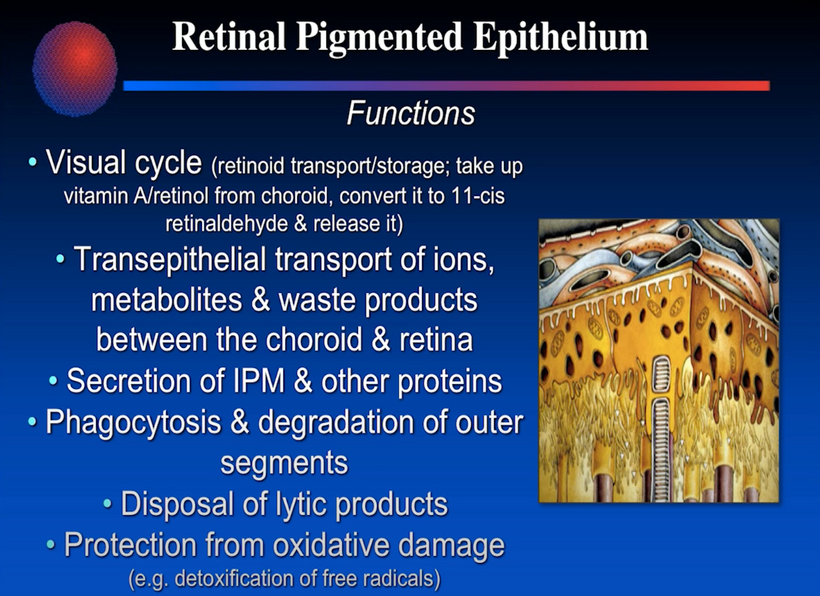
Stargardt disease is usually caused by changes in a gene called ABCA4. This gene affects how your body uses vitamin A. Recall when Vitamin A is liberated from opsins in the retina it is freed by incoming light. Vitamin A is normally recycled in the eye by the rhodopsin system to prevent accumulation.
The body uses vitamin A to make cells in the retina (the light-sensitive layer of tissue at the back of the eye). Then the ABCA4 gene makes a protein to clean up the fatty material that accumulates after the photooxidation of light that’s left over. In Stargardt disease, this gene doesn’t work — so the fatty material builds up in yellowish clumps on the macula. Over time, this fatty material kills the light-sensitive cells and destroys central vision.
Stargardt disease is an inherited genetic disease, which means it gets passed down from parents to children. This disease mimics what we see in the peripheral retina of people with type two blue light hazards.
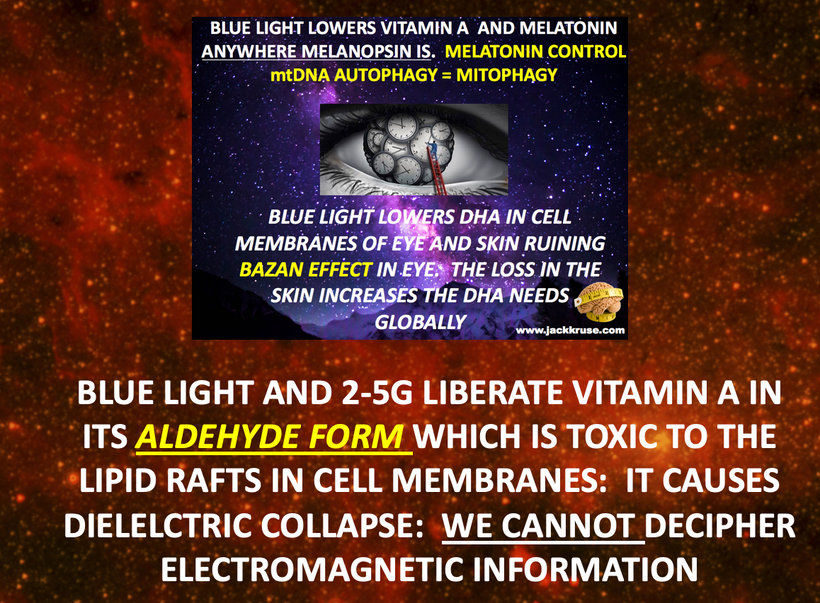
When lipofuscin is seen in the inferior peripheral retina it is the first sign of coming neurodegeneration in the brain in the frontal and temporal lobes. This is where Alzheimer’s disease and frontotemporal dysplasia form.
The key feature for most neurodegenerative disorders is the accumulation of misfolded protein aggregates, framing them within the classification concept of proteinopathies or “protein conformational disorders”. However, it is important to underscore that not all neurodegenerative diseases are considered protein-conformational disorders. Proteins are semiconductive materials in cells that need constant care and rejuvenation. Melanin performs this vital function in tissues. If the redox power in the cell is suboptimal those semiconductive protein components will accumulate in the extracellular matrix of tissues ruing optical signaling.
Although the molecular underpinnings of neurodegeneration are still not completely understood by centralized medicine, if you are following my thesis, it should be obvious where the problem lies. As melanin is degraded or lost we see the loss of the RPE microvilli on the basal side of the RPE. This infolding by the microvilli increases the surface area of the RPE over a millionfold. The loss of microvilli is the first clinical sign of a POMC problem in the eye. This is the clinical sign one can see on OCT retinal scans that melanin needs renovation.
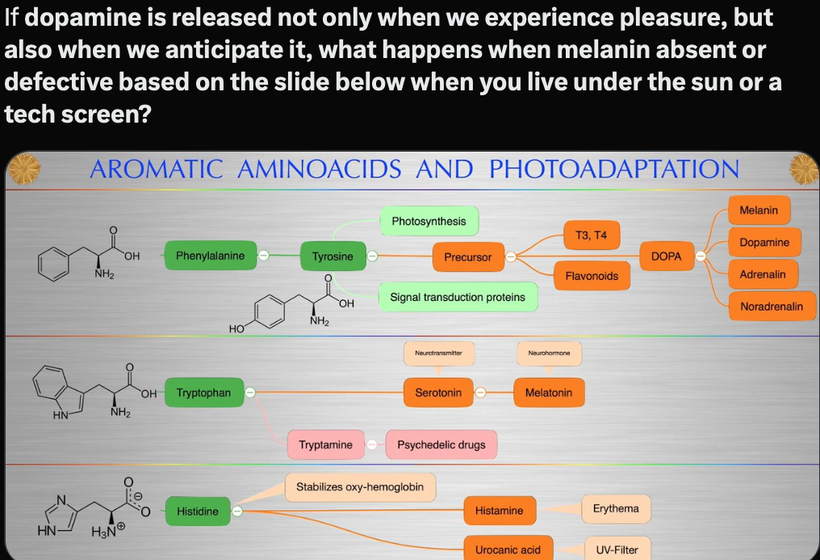
As melanin is lost at the tissue level so is mitochondrial function, so is the electric potential on lipid rafts, and melatonin levels drops from mitochondrial dysfunction. Recall from the picture above, that dopamine can be made DIRECTLY from L-DOPA when tissue level hypoxia is present. Dopamine can be created from melanin in mammals, but in the face of tissue level mitochondrial dysfunction but this ability is lost as well. This destroys many photoreceptor regeneration pathways (below).
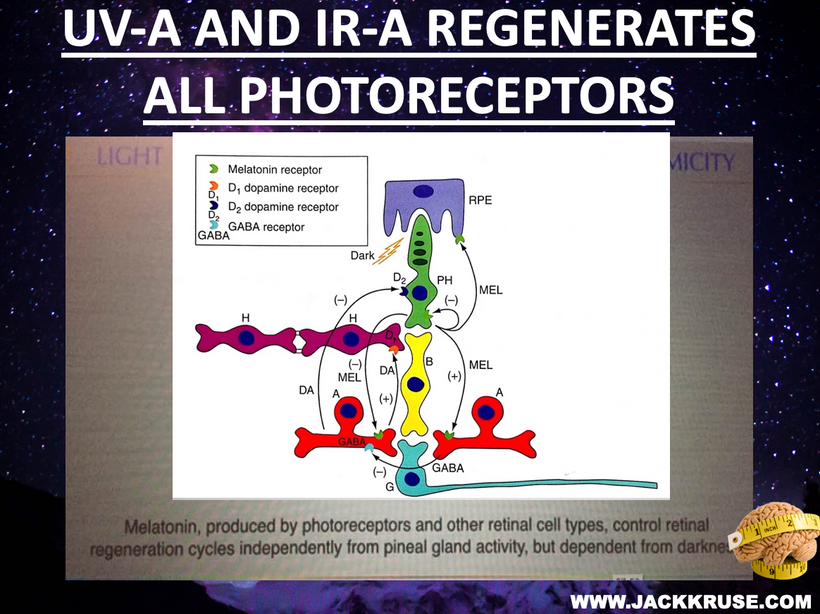
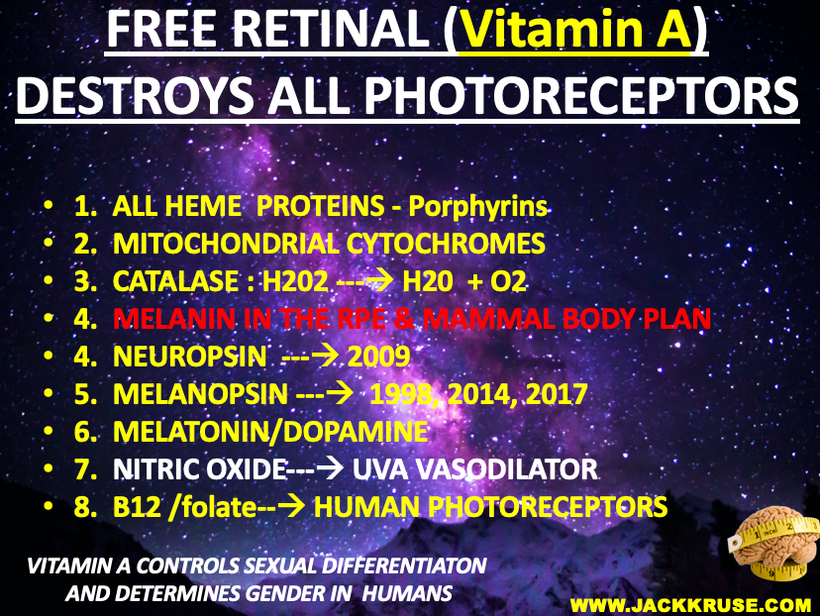
Every thing listed above is destroyed and can lead to a myriad of diseases that afflict modern humans.
As a result, the ROS made in the eye cannot be absorbed by melanin. This increases the oxidative stress associated with the eye and into the brain via tracts that are topographically linked to the RPE and the rest of the human cortex. It also empties the retina of DHA because DHA breakdown products act to limit inflammation by stimulating autophagy. Without autophagy, we get apoptosis (apoptosis = cell loss = tissue/organ failure) with resultant necrosis. This can happen in any organ.
When it happens in the retina and AMD begins. Type two blue light hazard destroys the photoreceptors at the junction of where they meet melanin sheets in the RPE as seen below.
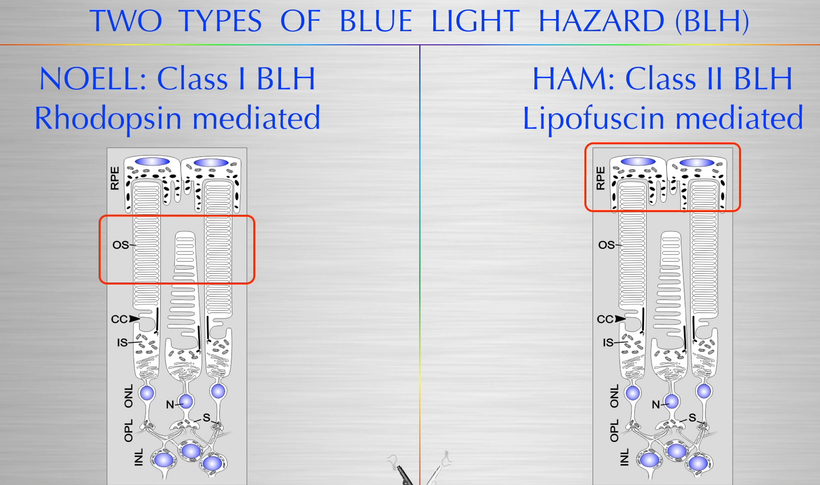
DHA in mammalian tissue is broken down into elovanoids and resolvins. Elovanoids and resolvins enhance the expression of pro-survival proteins in cells undergoing uncompensated oxidative stress. DHA helps stimulate autophagy to recycle photoreceptors in mammals. We have the most DHA in our tissues as a mammal for a reason; our brain is unique in the mammalian family. As we age heteroplasmy rises and so does melanin degradation. Thus, aging is associated with increasing levels of pro-oxidant factors (reactive oxygen species, ROS/RNS)
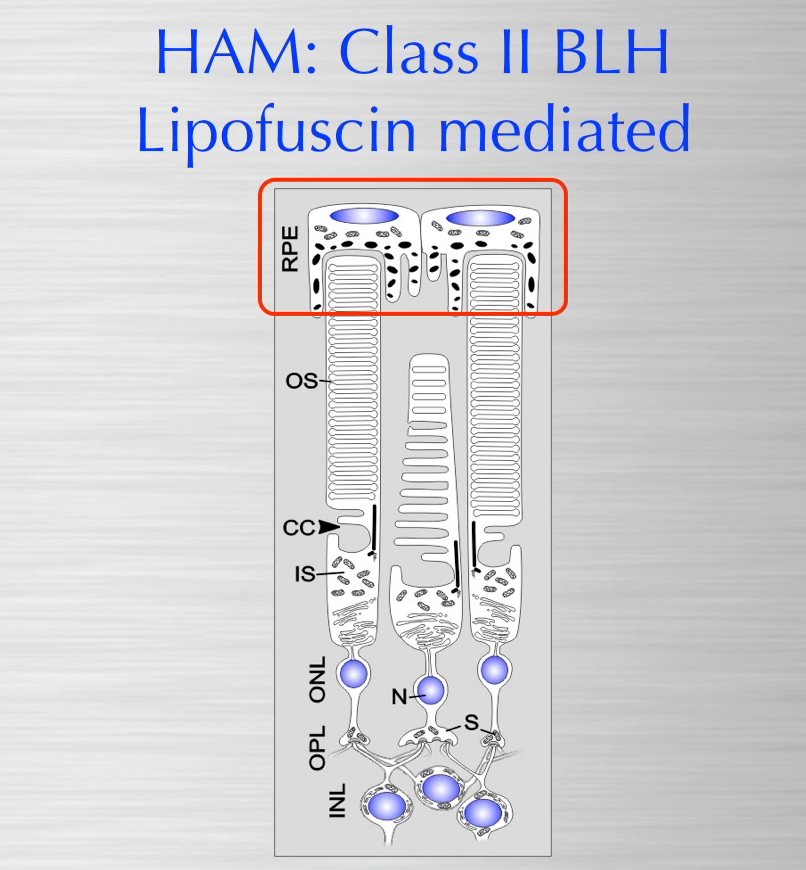
Neuronal Ceroid Lipofuscinosis (NCL)
This disease shows the effect of lipofuscin accumulation which rapidly destroys optical signaling in the brain by destroying white matter in the brain. Clinically, NCLs are associated with variable, progressive symptoms, including dementia, visual loss, seizures, and cerebral atrophy. One of the most striking morphologic changes in neurons during normal aging is the accumulation of lipofuscin (LF) aggregates, iron complexes, as well as, neuromelanin pigments. LF is an autofluorescent lipo-pigment formed by lipids, metals, and misfolded proteins, which is especially abundant in nerve cells, cardiac muscle cells, and skin. This disease shows the effect of rapid damage to the non visual photoreceptor system. Below you see the thinning or the corpus callosum (black arrow) which connects both halves the brain. You also see the thinning of the brainstem where the sleep centers are (white arrow). Even the cerebellum has prominent folia present below.
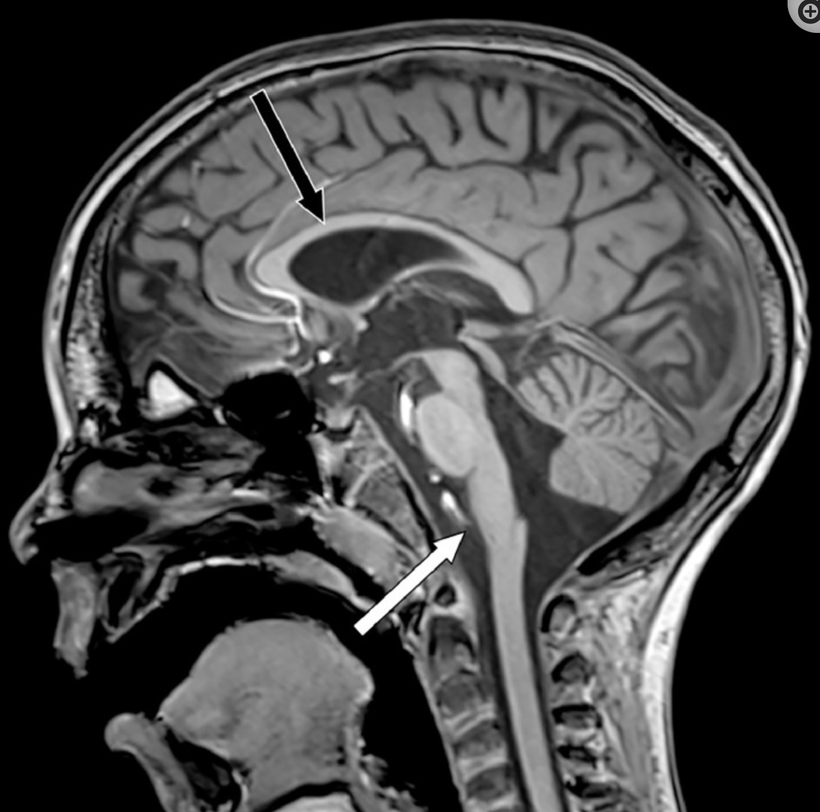
Within the Central Nervous System (CNS), LF accumulates as aggregates, delineating a specific senescence pattern in both physiological and pathological states, altering neuronal cytoskeleton and cellular trafficking and metabolism, and is associated with neuronal loss, and glial proliferation and activation. Traditionally, the accumulation of LF in the CNS has been considered a secondary consequence of the aging process, being a mere bystander of the pathological buildup associated with different neurodegenerative disorders. This will be seen in an enalarging ventricular system as the matter of the brain becomes atrophic. This is visualized by the two arrows in the MRI below. The real offender is a lack of melanin and DHA in our tissues due to nnEMF and blue light destruction liberating Vitamin A.
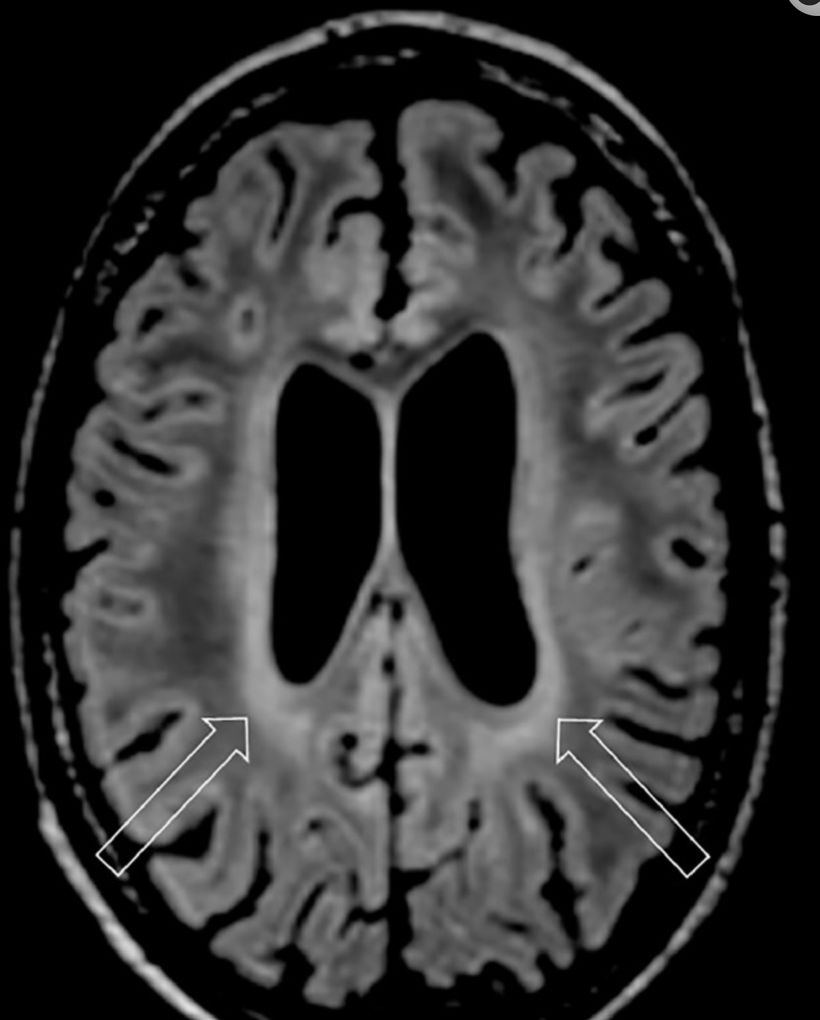
The enlarged state of the ventricles above destroys the FM radio station you learned about in QE #47 & 48. All of these things show you where melanin is being destroyed with mitochondria as the non visual photoreceptor system is being destroyed.
I believe self-organizing criticality theory (SOC) needs to critically look at the work of Ilya Prigogine on how dissipative systems operate in mammals. I believe this is why SOC is stuck in the mud with modern centralized neuroscientists. To understand this idea you need to understand how the liberation of Vitamin A from our non-visual photoreceptors begins the process of diseases by destroying all of our photoreceptors.
People in centralized science seem to forget that all of the cytochrome proteins in our mitochondria are also heme-based photoreceptors that are linked to this damage cascade. This is found in every human disease I have studied the last 20 years, from Autism & Alzheimer’s diseases all the way to zoonosis. This fully explains how our environmental choices lead to mitochondrial destruction in a few steps. This is wholly an idea in decentralized science that needs to be understood.
Why do cells organize by changing their size and shape in mitochondria before diseases or phenotypes begin to vary Uncle Jack?
Efficiency of maintenance of metastability in the tissue is the short answer. The science of how heat interacts with matter is called thermodynamics and this science can be boiled down to 4 laws. Most people talk about the main three laws, but the fourth one shows us how energy flows in the universe by a microscopic reversible process. The 4th law is “The Onsager reciprocity relationship.”
This law shows how symmetrical coupling of processes (circadian mechanisms in cells) can arise naturally in a system under energy flow that moves from an areas with a lot of energy to one with a small amount of energy. The area around a mitochondria where melanin is unusually prominent in humans and cell membranes of the skin is loaded with energy because of proteins that act like a capacitor. This is what melanin does for cells. It drives the Onsager reciprocity to operate in cells. A capacitor is a battery holds a ton of charge. This is what melanin is doing in cells. Lipofuscin is evidence of a destroyed battery.
In nature, Lars Onsager showed that energy moves from high potential to lower potential naturally. He is often given credit for this unofficial 4th law of thermodynamics. All these laws of thermodynamics are subject to one main law of how energy relates to matter in the universe. That law is mass equivalence, or E=mc^2.
All things in biology, boil down to size and shape, not genetics as the current centralized paradigm professes. This is why size is a signal for ongoing thermodynamic changes in the Vitamin A cycle of the POMC neurons in the suprachiasmatic nucleus before gender tracts in the hypothalamus are laid down in the embryo. This is evidence of light changing the signal for mitochondrial autophagy and apoptosis programs related to gender issues in decentralized fashion. We see the changes in the tissue at a macroscopic level.
SUMMARY
The blue light hazard creates lipofuscin in tissues by Vitamin A liberation. It is not a consequence of any other process linked to DHA as some of the ignorant have spewed on social media.
Vitamin A liberation always is associated with sleep disturbance.
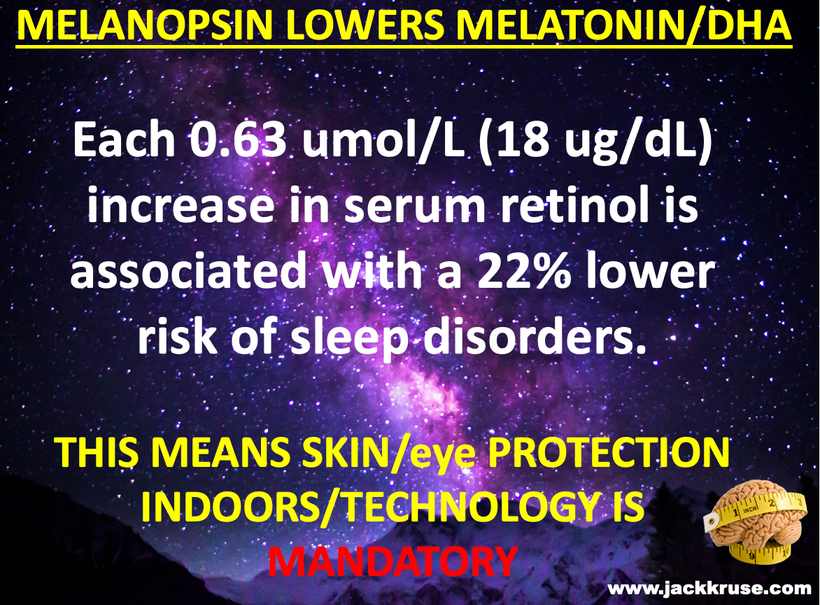
DHA content in your cell membranes INCREASES your ability to engage in autophagy because it breaks down into chemicals involved in the visual and non visual photoreceptor system that resolve inflammation via wound healing. Vitamin A destruction caused by blue light impedes this effect by lowering resolvins and elovanoids in the photoreception repair process in humans. This is what leads to increases in lipofuscin in tissues. It is an early marker of organ failure.
https://www.sciencedirect.com/science/article/abs/pii/S0531556514000722
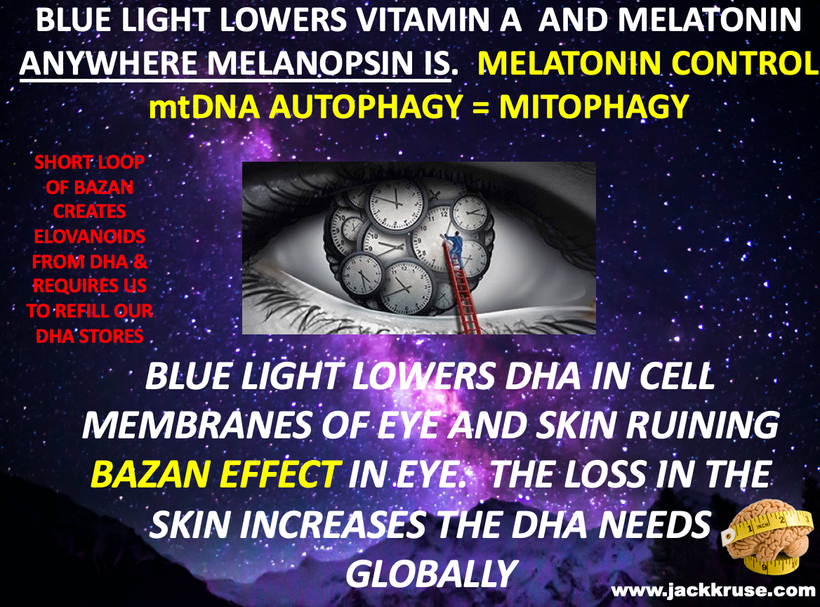
Autophagy is critical in growing and maintaining the neocortex size of humans. This is especially true in cases of neurodegeneration and autism when you are trying to repair defects from Vitamin A liberation in any mammalian tissue. This turns Vitamin A into an aldehyde that acts to destroy all visual and non-visual photoreceptors that impede tissue regeneration in humans. This leads to increases in lipofuscin. It is a marker for Vitamin A liberation.
Anyone who thinks this is due to too much DHA needs to be placed on ignore. it is 180 degrees opposite this opinion.
The quality of their sleep (also linked to the Vitamin A cycle) is also critical because it maximizes autophagy and does not deplete our stem cells in the recycling process. The more efficient autophagy is the more you protect your stem cell supply and the longer you can live or regenerate.
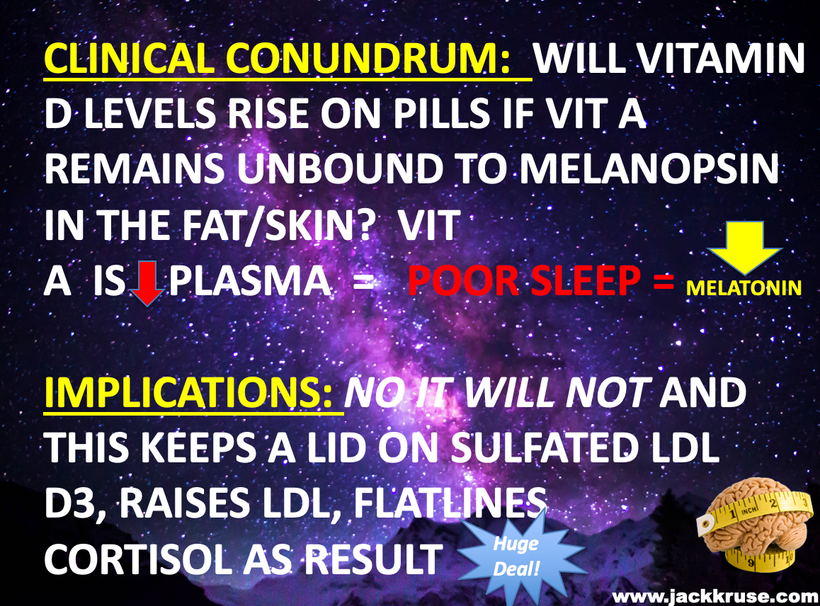
Autophagic efficiency is linked directly to energy-mass equivalence (Einstein). The more electrons you have in your brain the more autographic efficiency you will have to absorb exogenous or endogenous light production. All cells created in the young human’s brain are newly minted post-mitotic cells (think Autism as an example). Broken autophagy at a tissue level almost always tells us there is a problem with the sleep centers in dorsal longitudinal fasiculus mentioned in recent blogs. Many diseases have this effect built into pathogenesis.
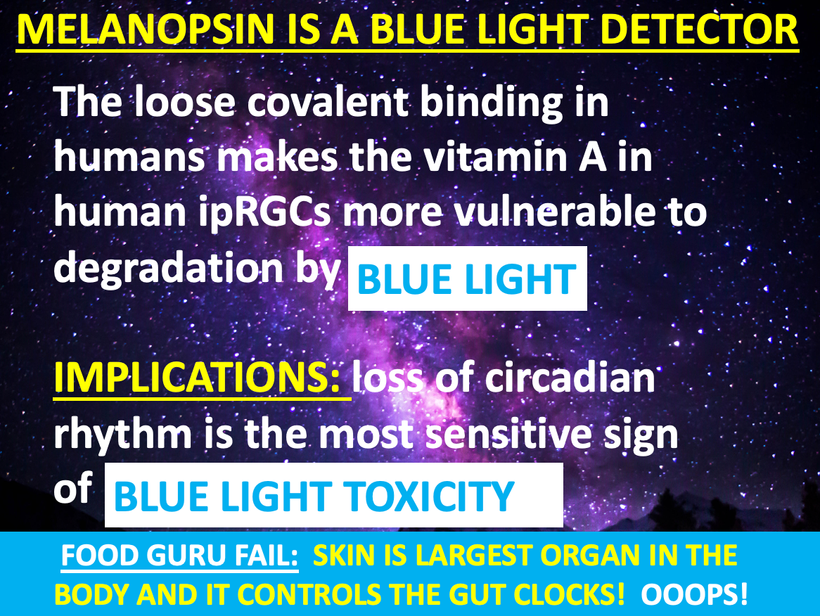
Autophagy augments longevity in all post-mitotic cells in 5 ways:
The 5 cytoprotective effects of autophagy:
1. Reduced accumulation of toxic protein aggregates or misfiled proteins via Vitamin A damage
2. Destroying bad mitochondria via mitophagy and sensed via size and shape changes in mitochondria
3. Reduced apoptosis to prevent stem cell depletion = organ failure
4. Reduced necrosis to stop organ failure.
5. Improved hormesis by increasing the redox stickiness of semiconductors made of carbon and water like melanin & collagen.
Why is blue light bad for mitochondria and why does it cause us to eat more than we should? All foods are linked directly and indirectly to photosynthetic webs. Most modern humans are divorced from evolutionary theory and from mitochondrial science. Blue light/nnEMF spreads out the respiratory proteins on cytochromes and destroys the cytochromes via Vitamin A liberation and this DECREASES our natural coupling ability in our mitochondria DNA was given to us by our maternal haplotype. https://www.ncbi.nlm.nih.gov/pmc/articles/PMC4684129/

